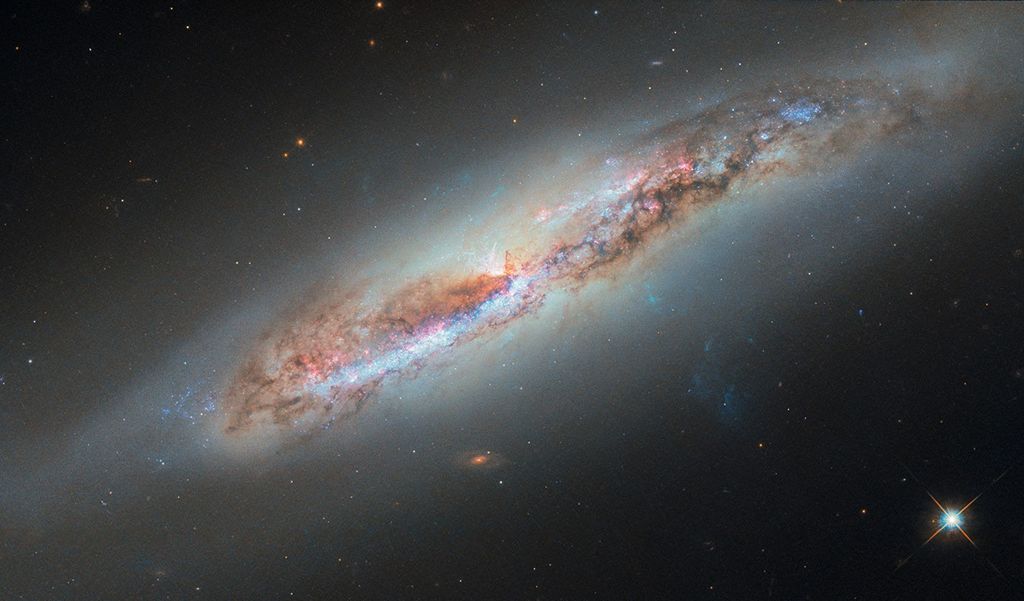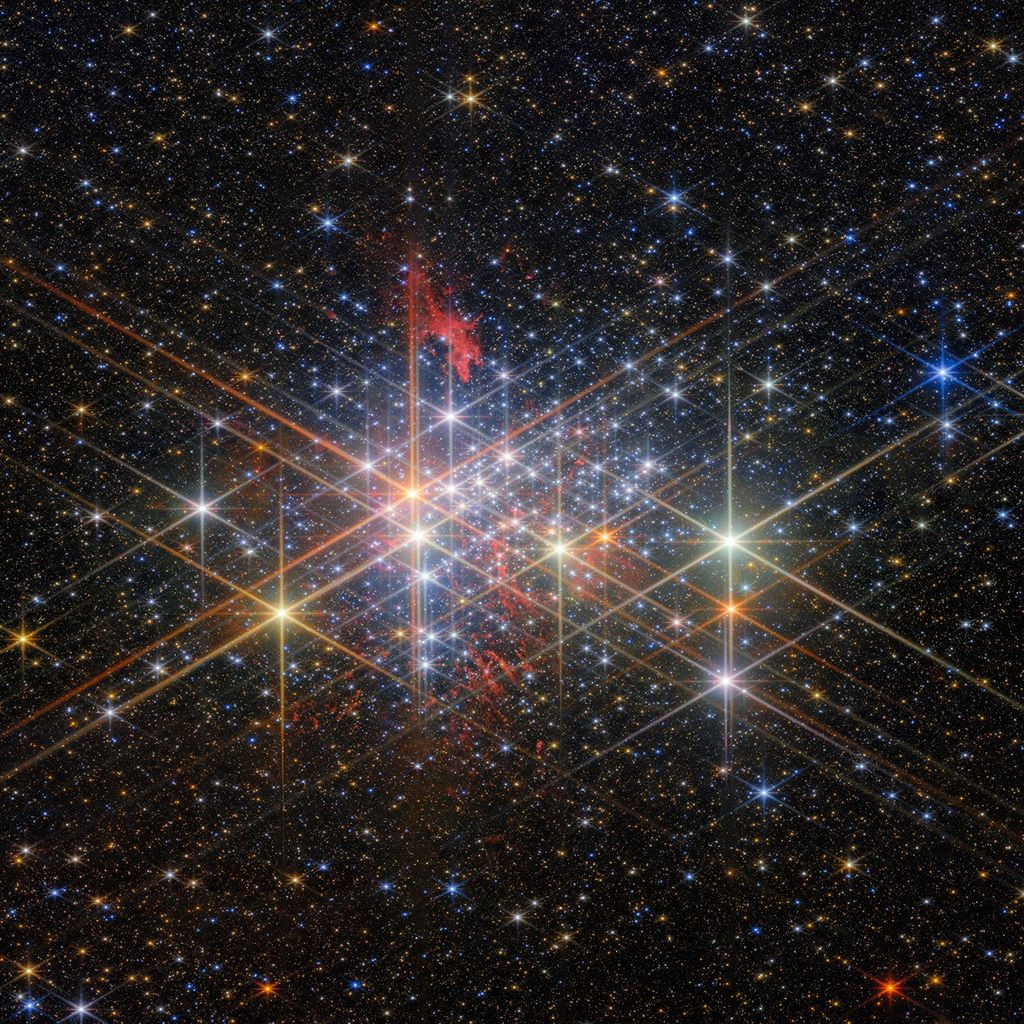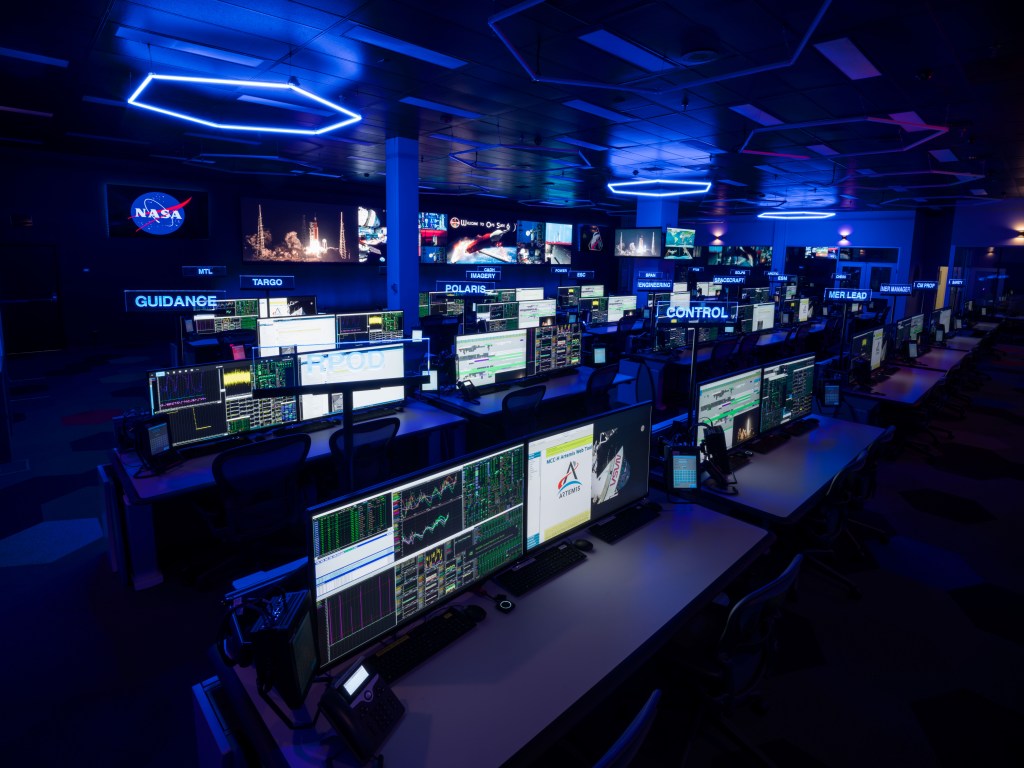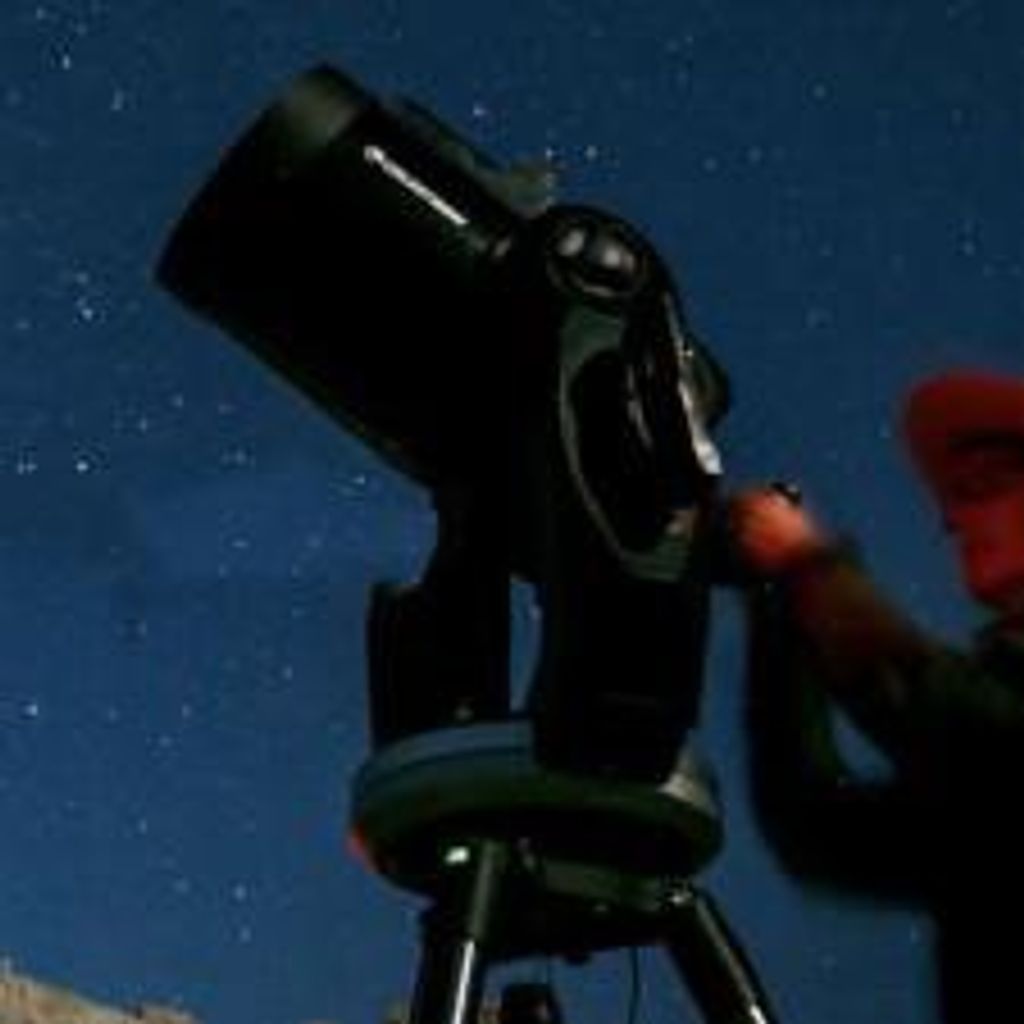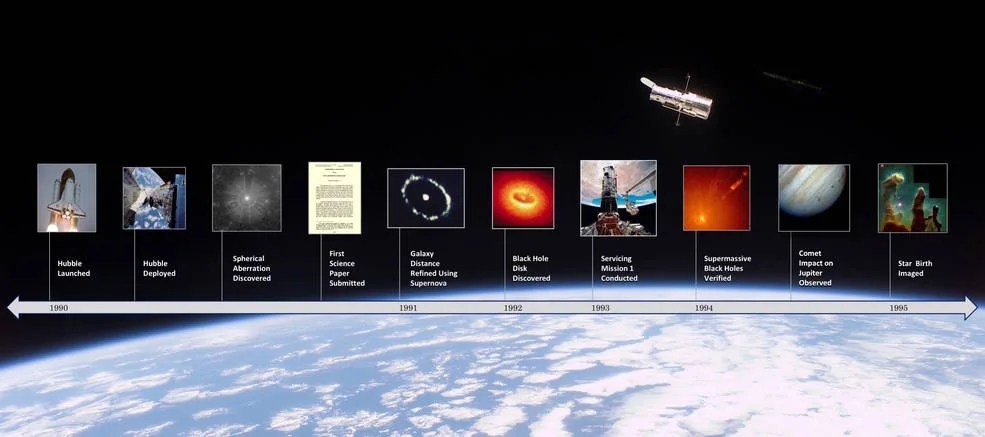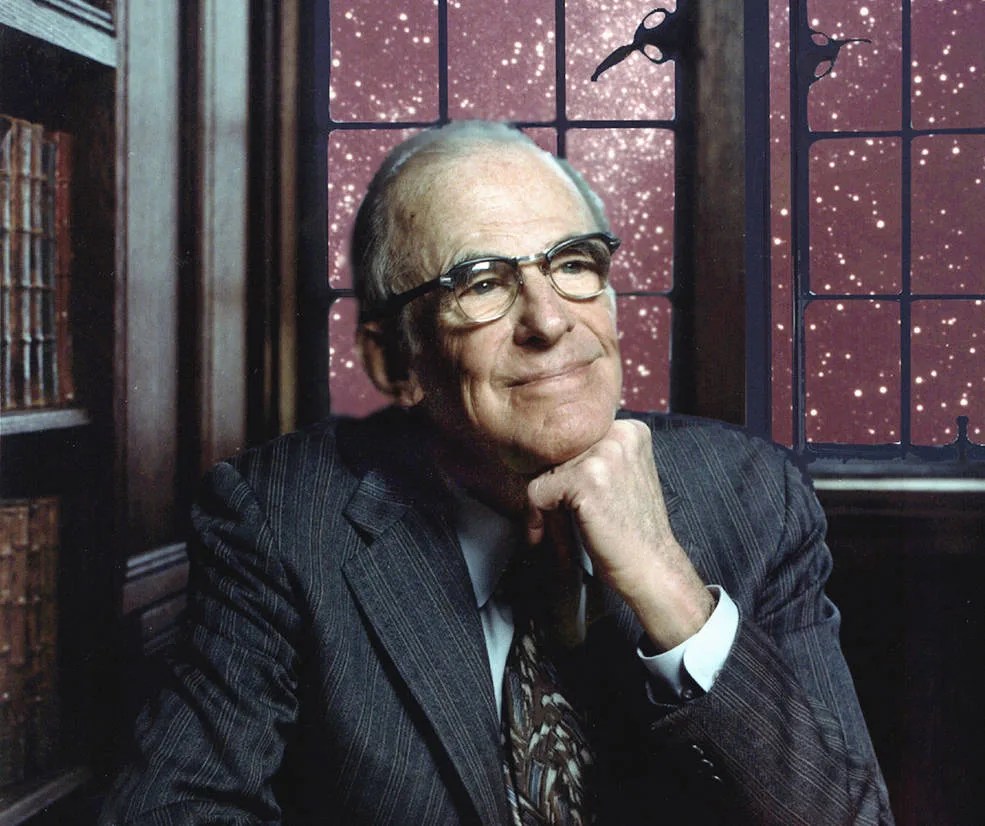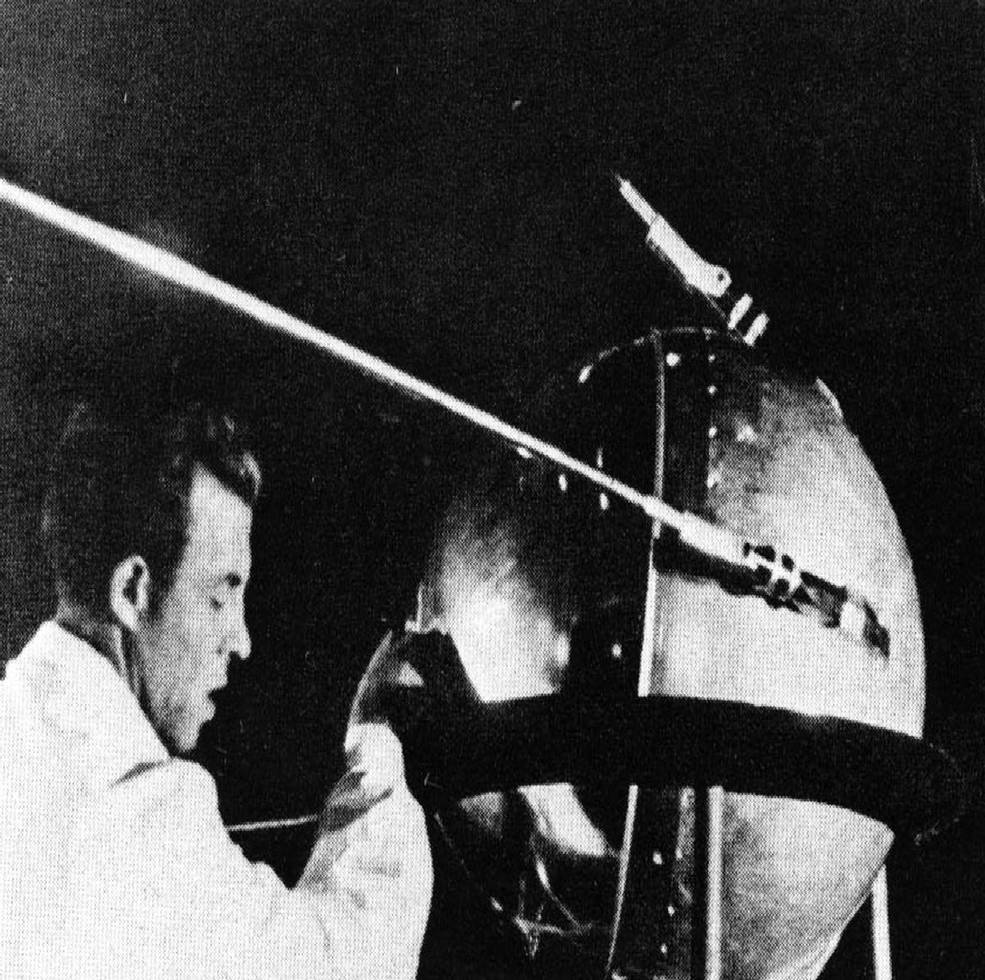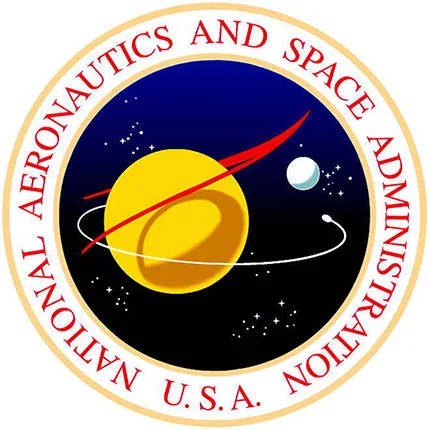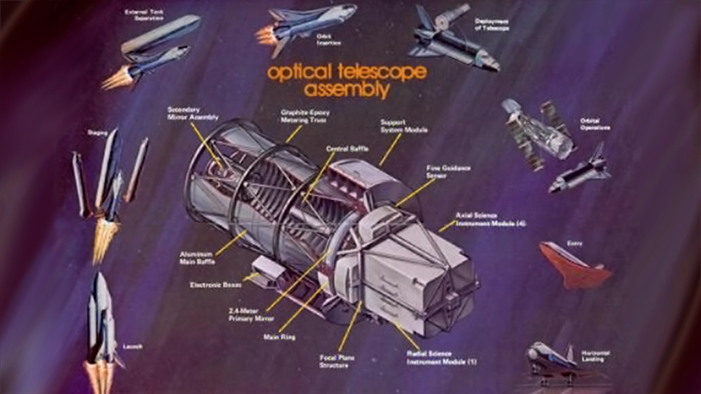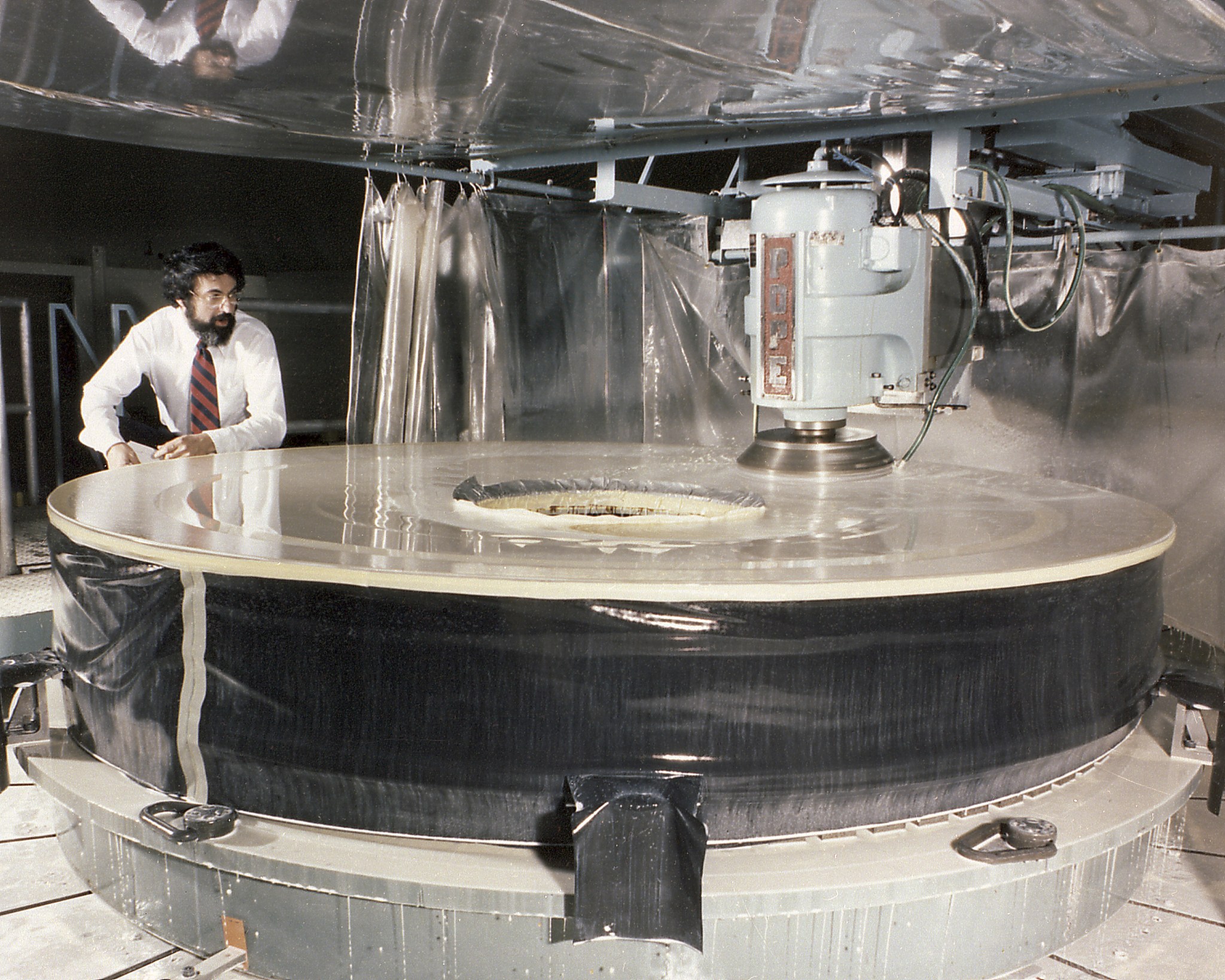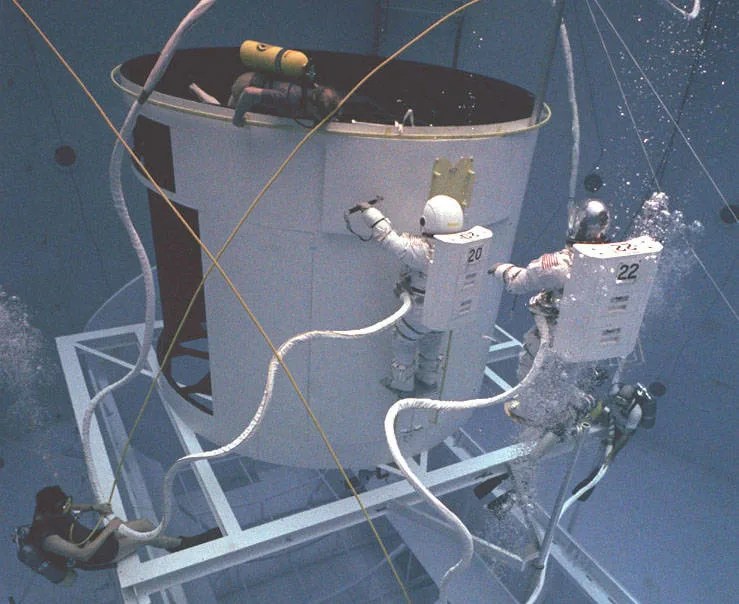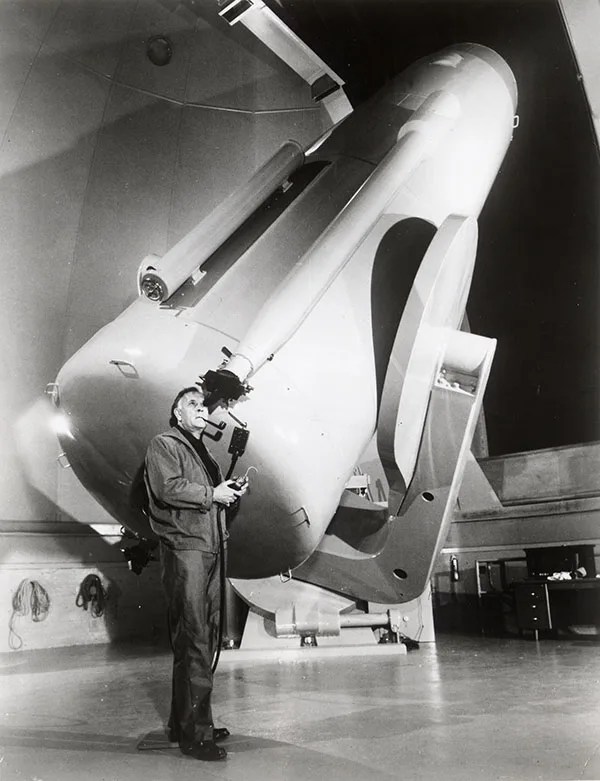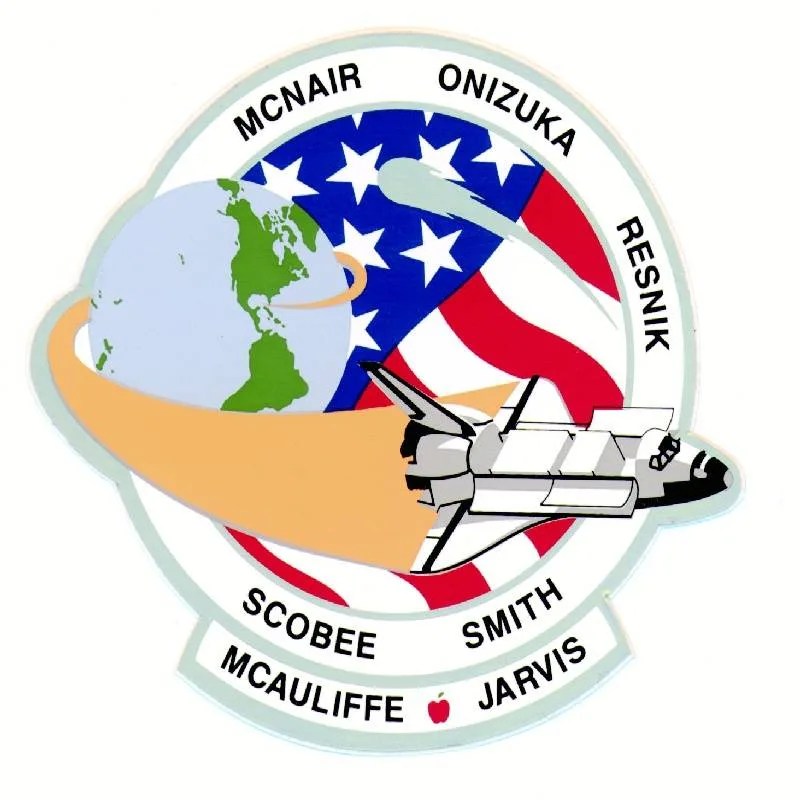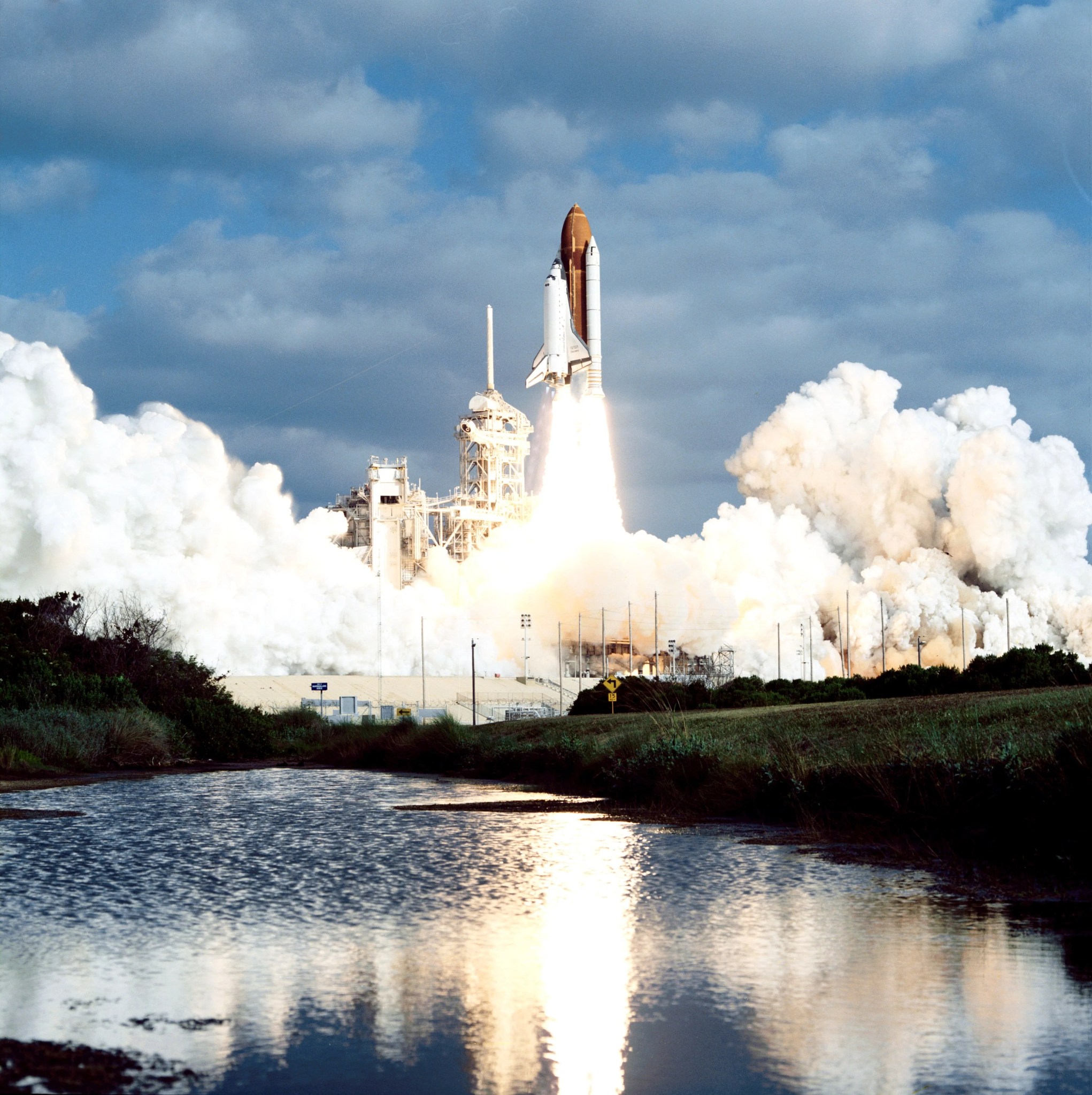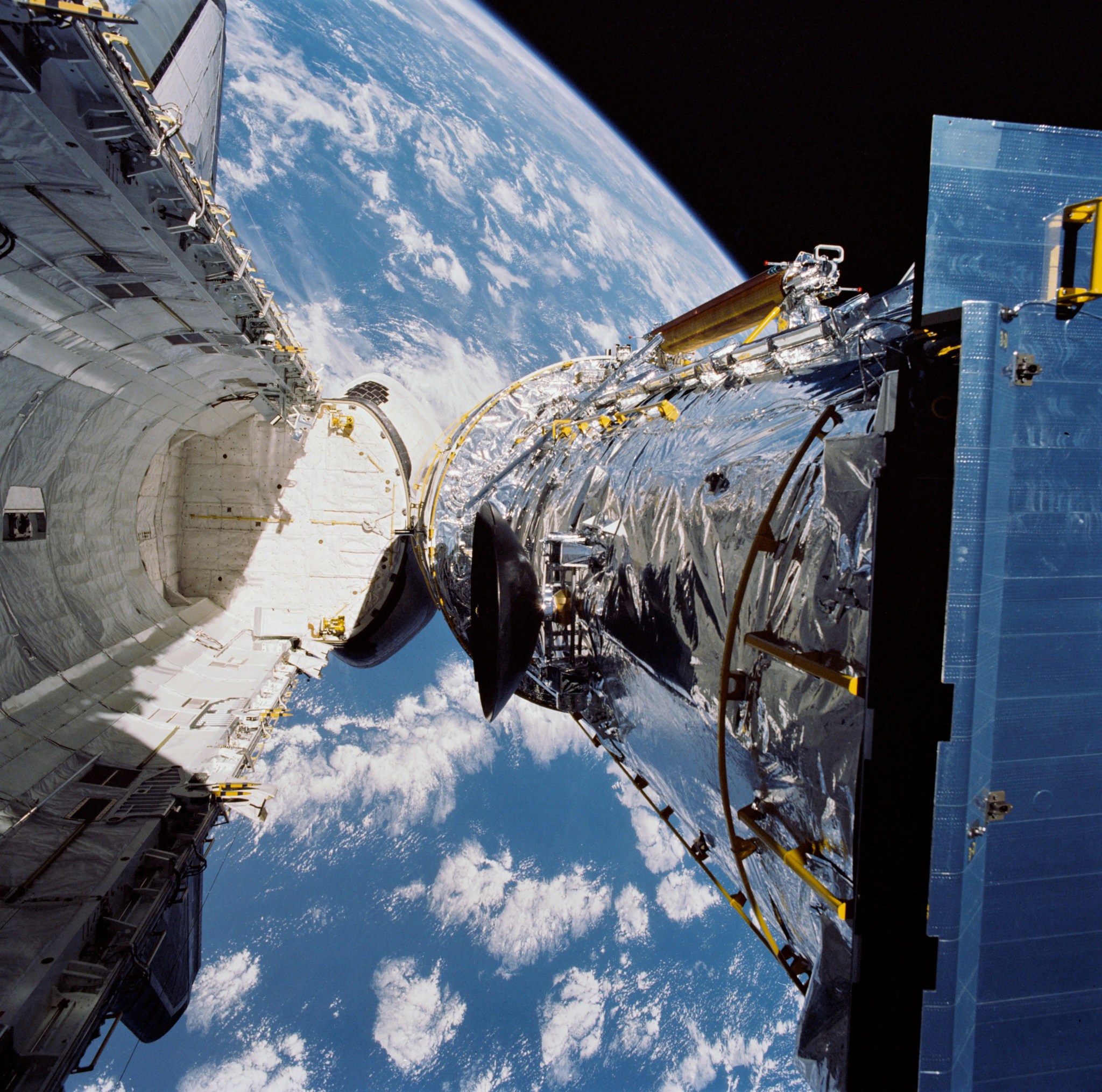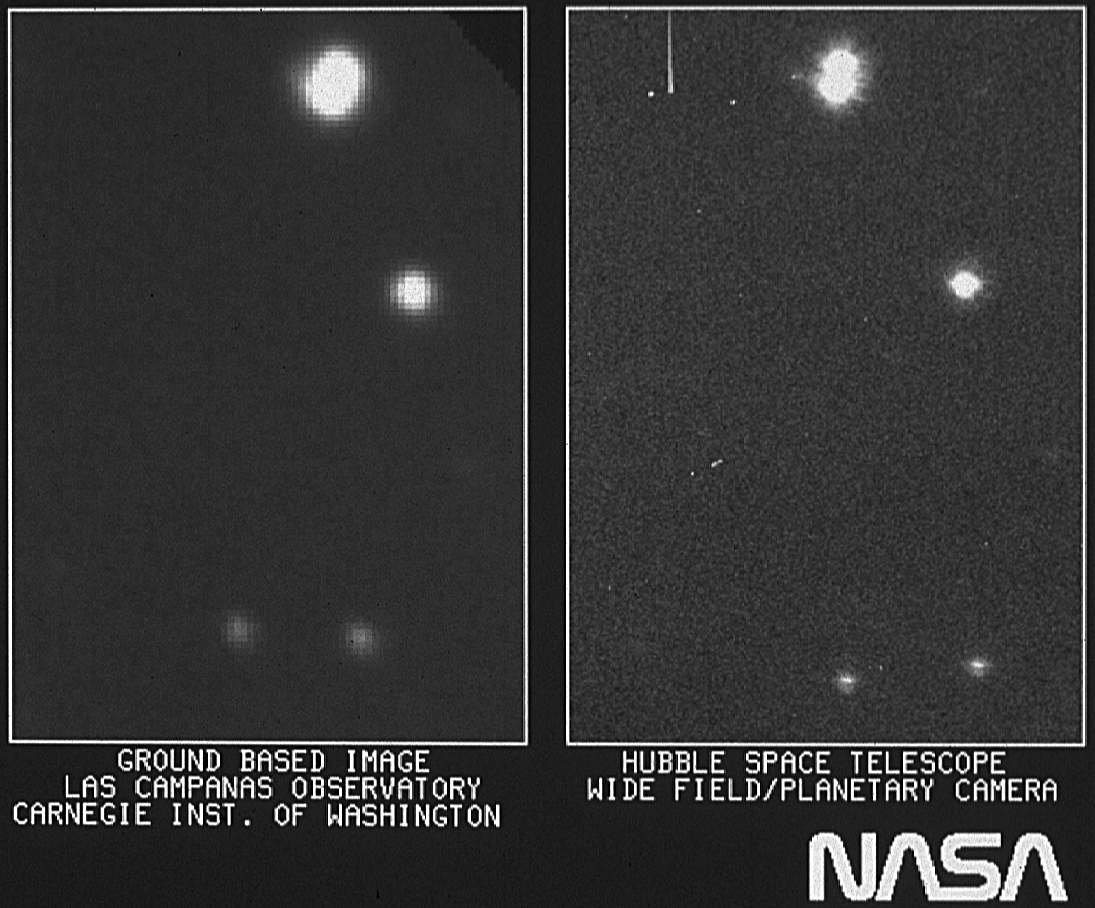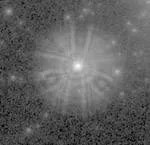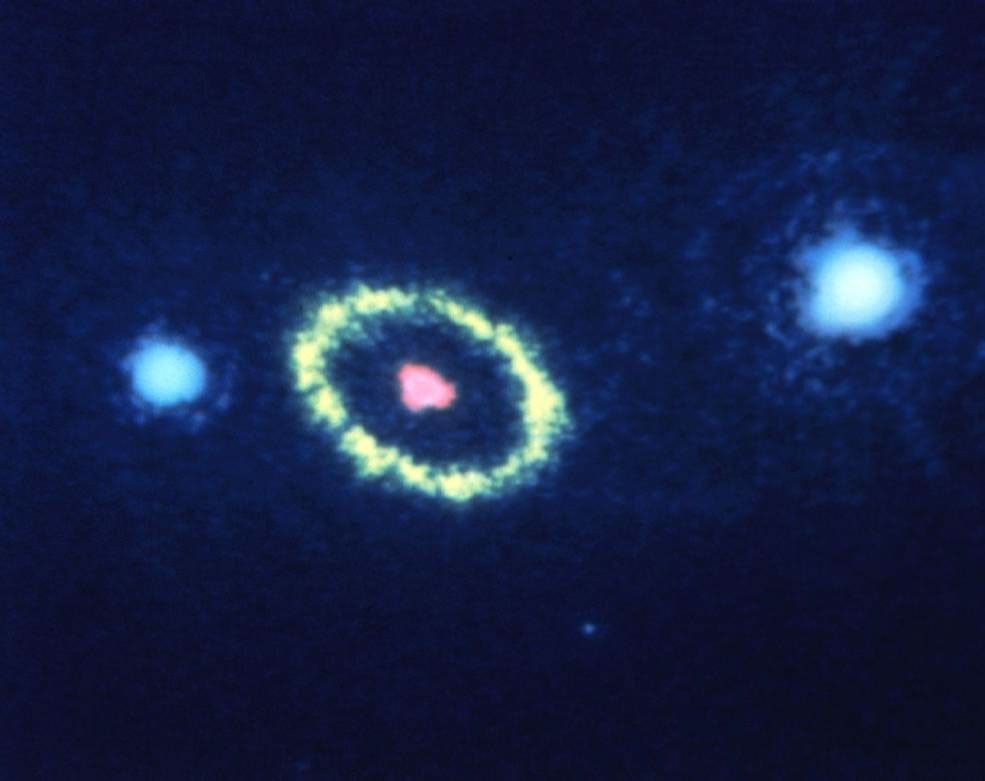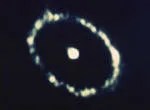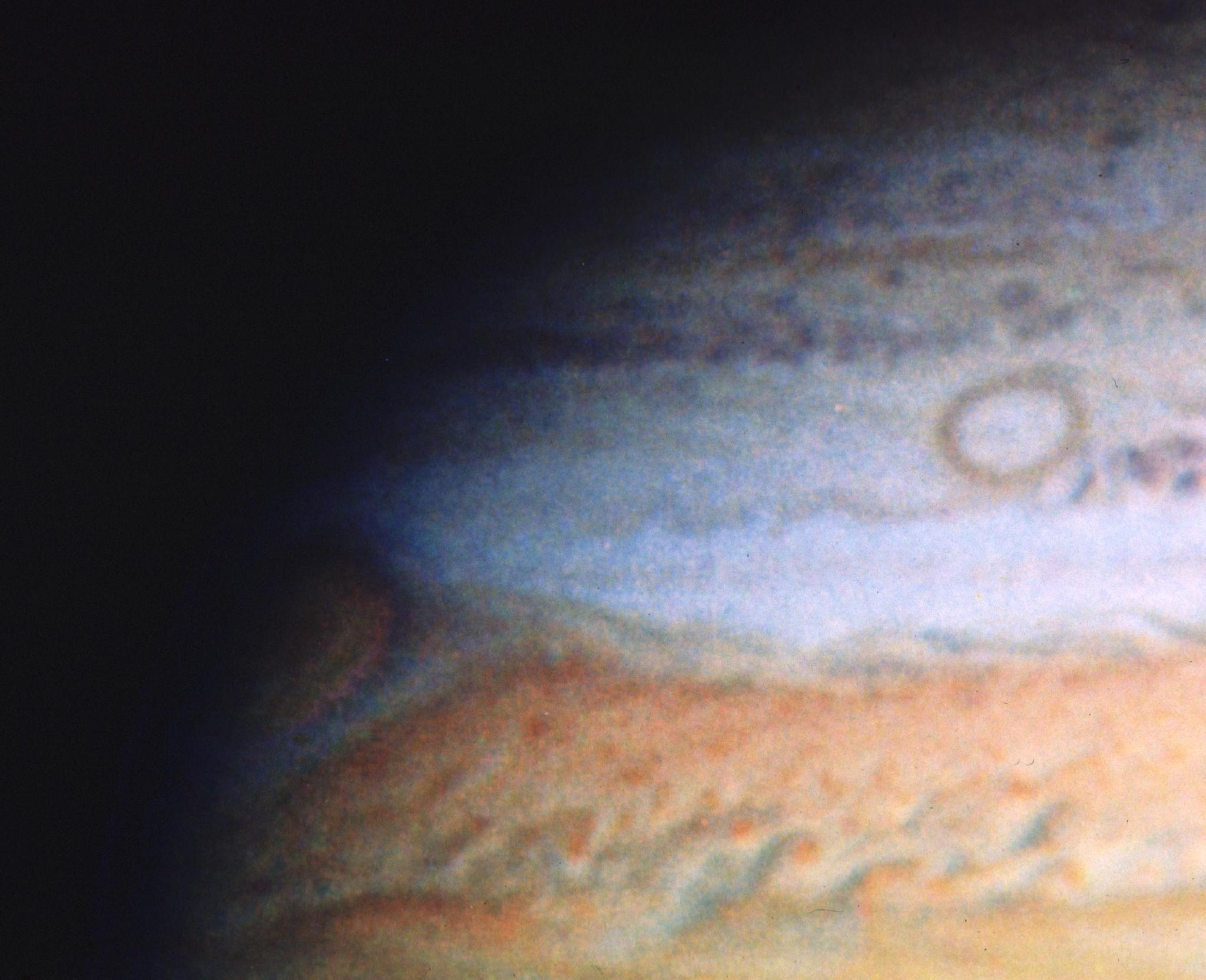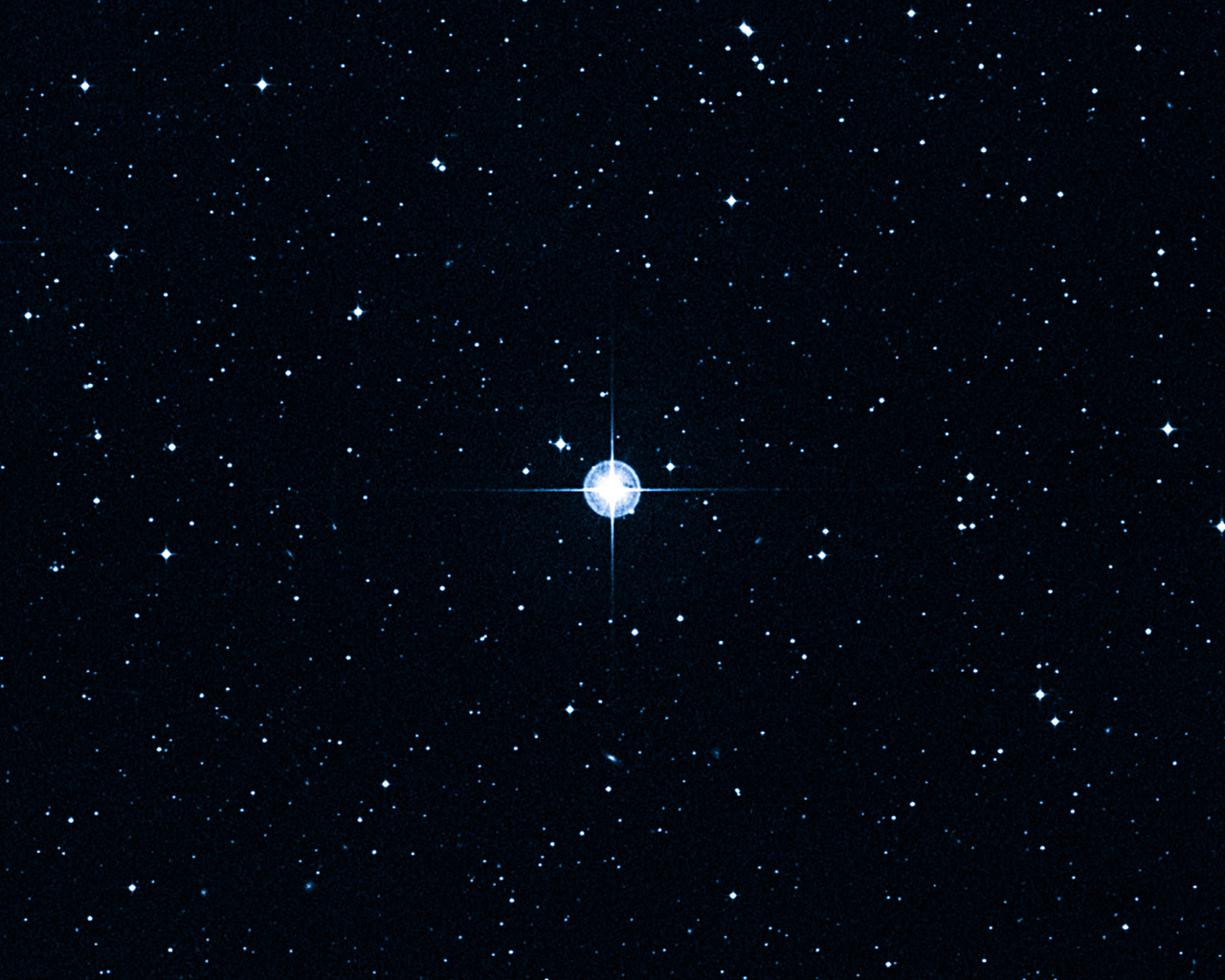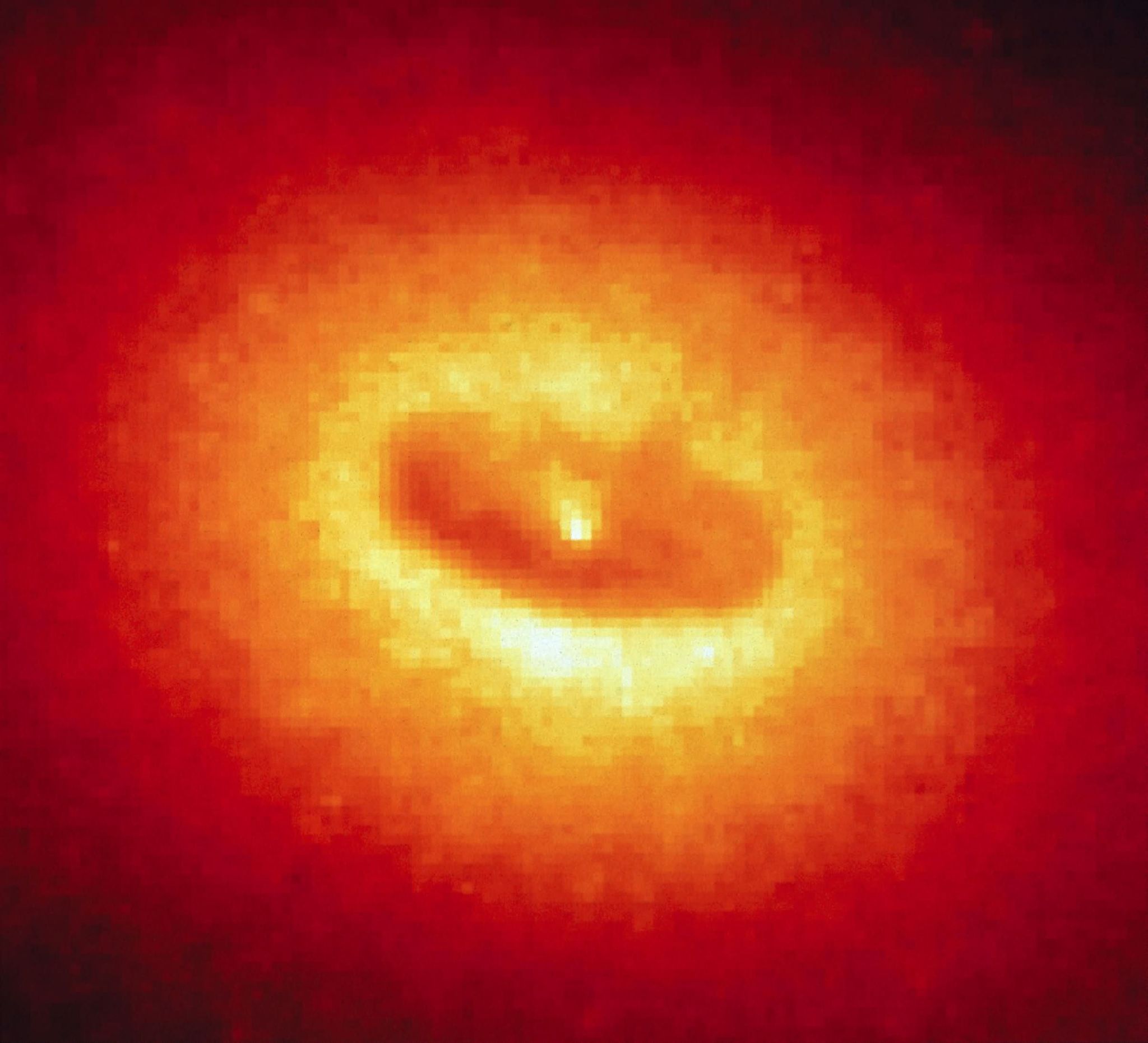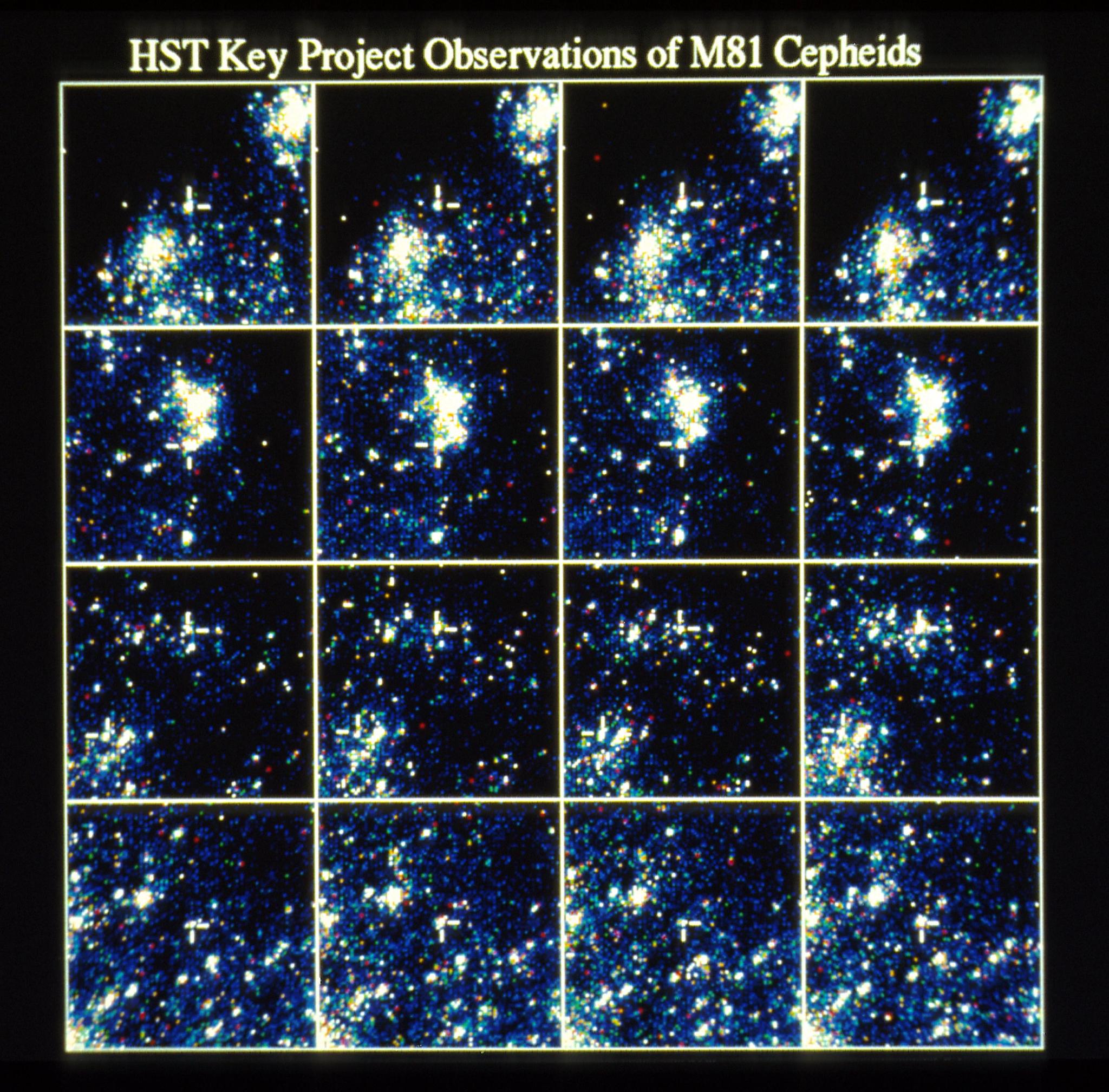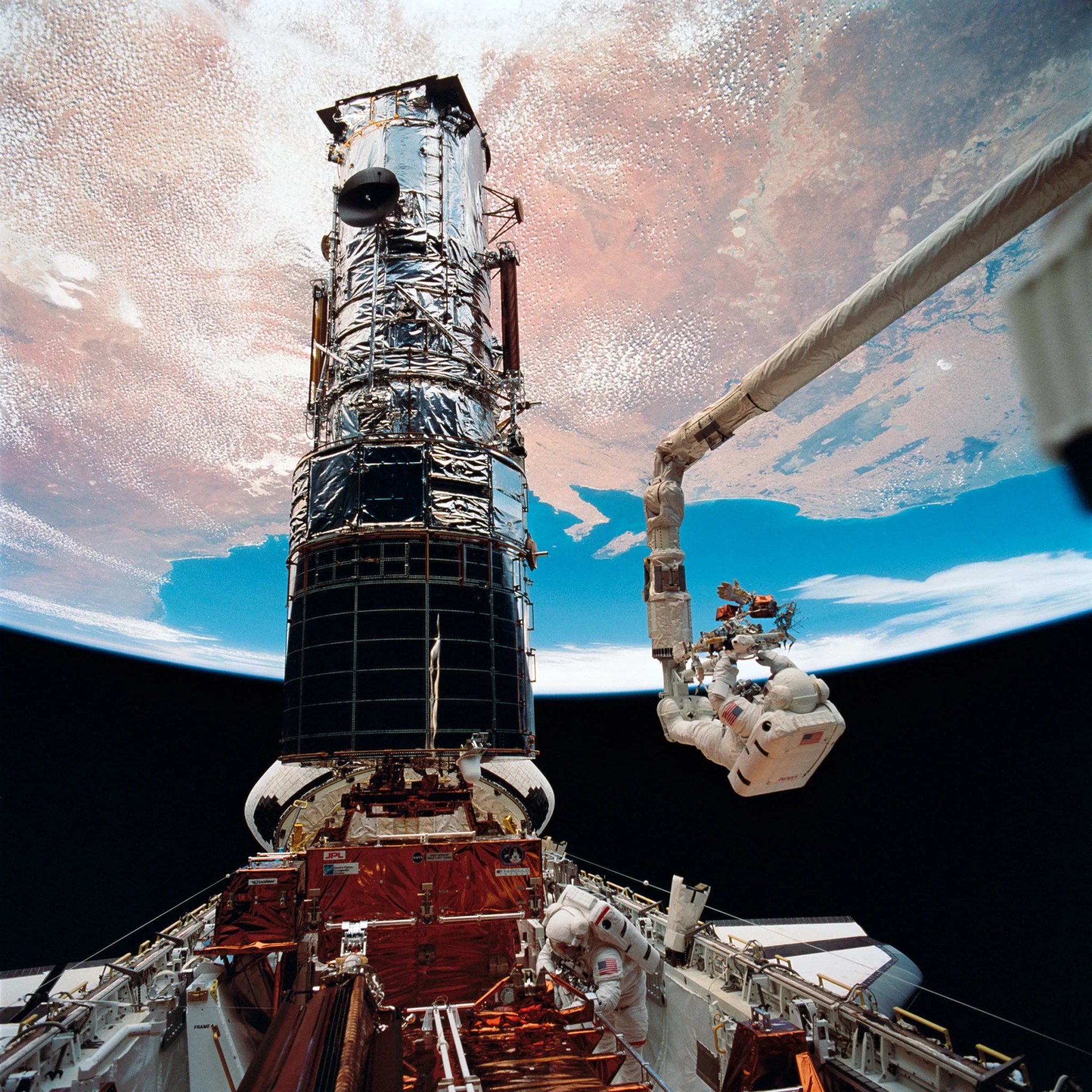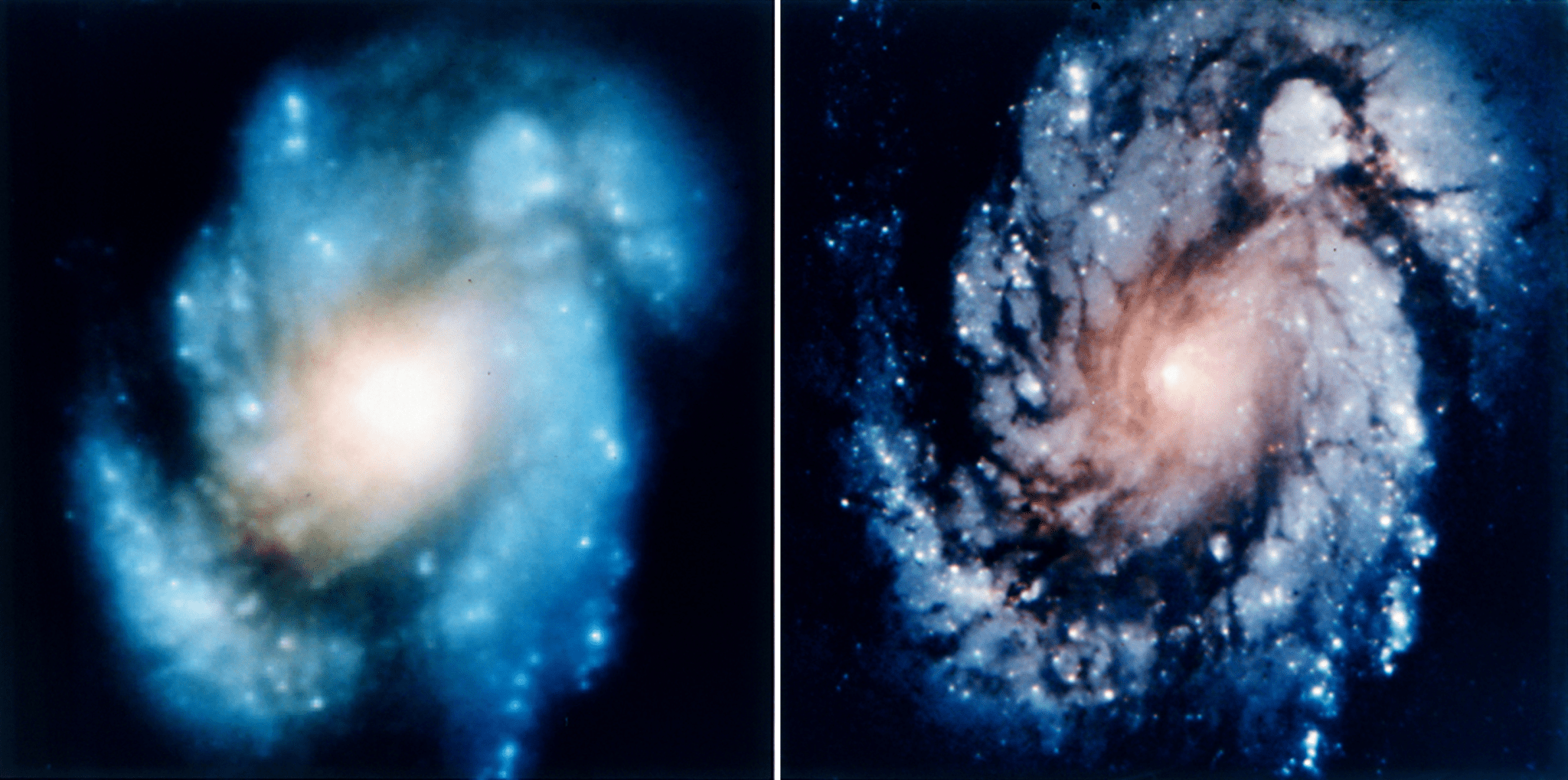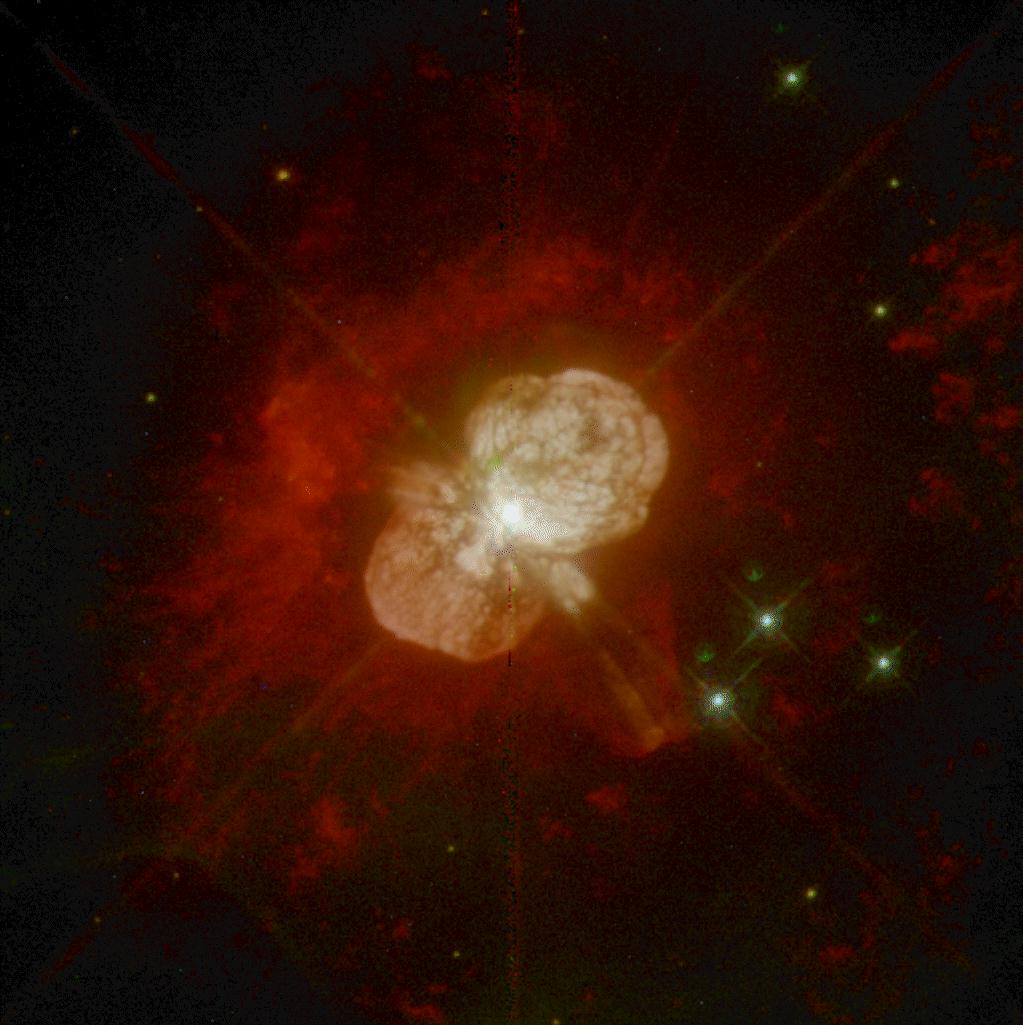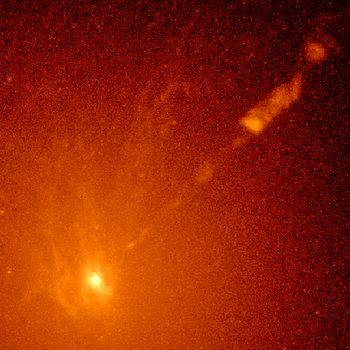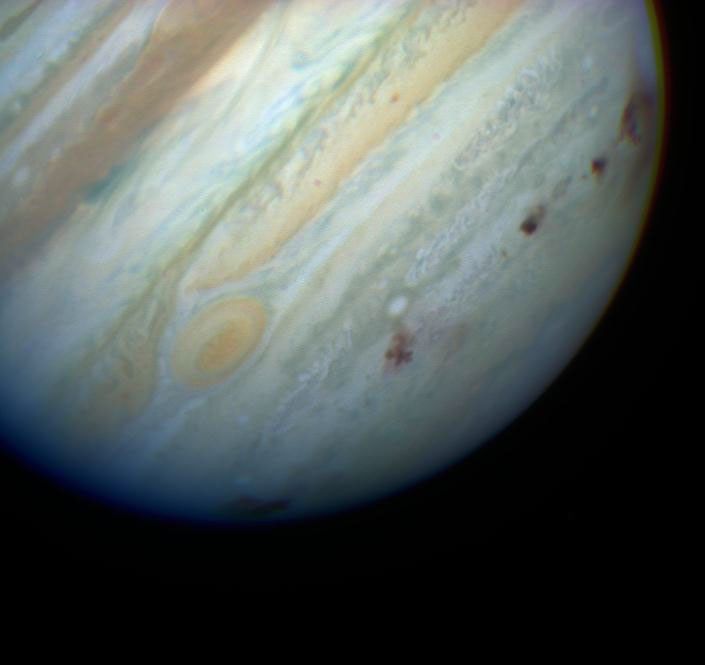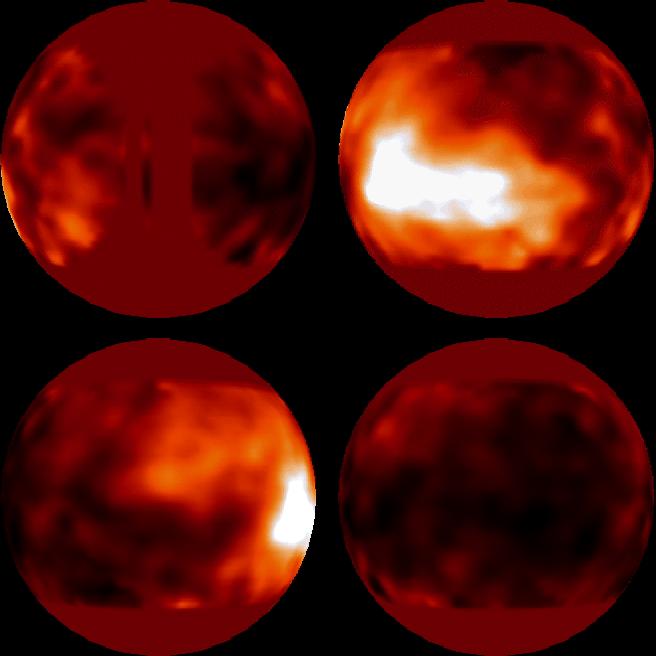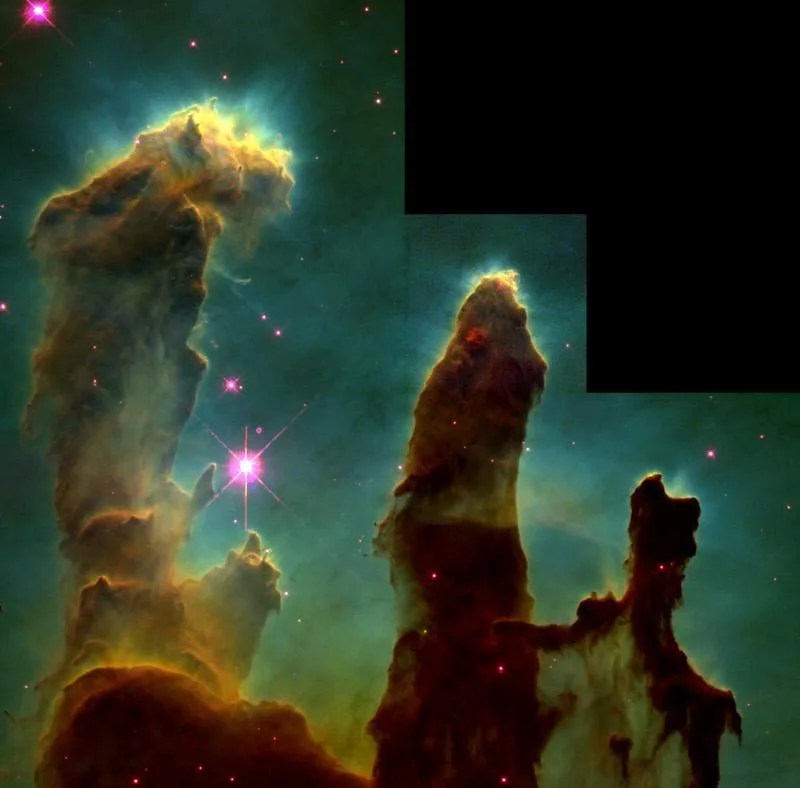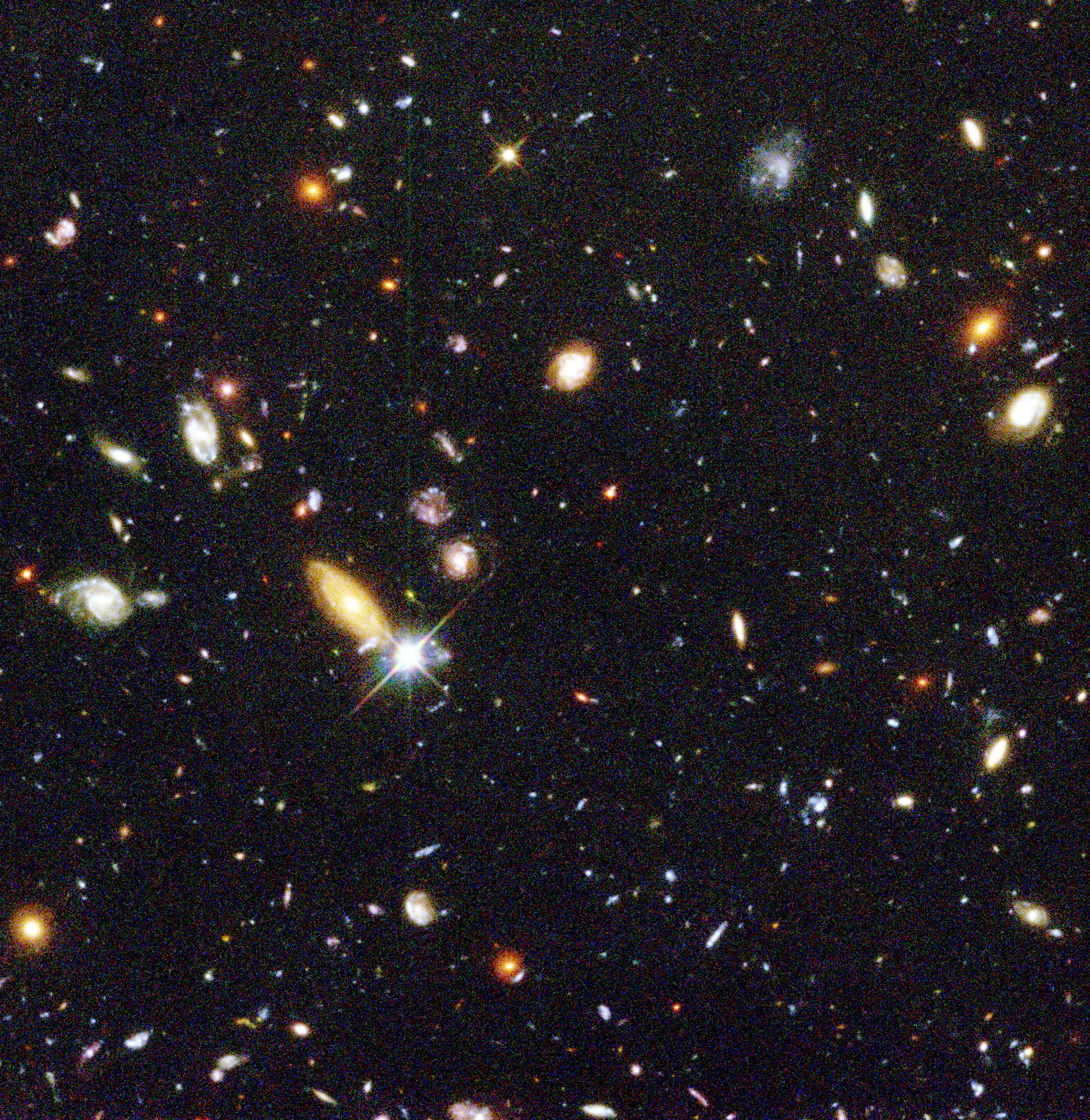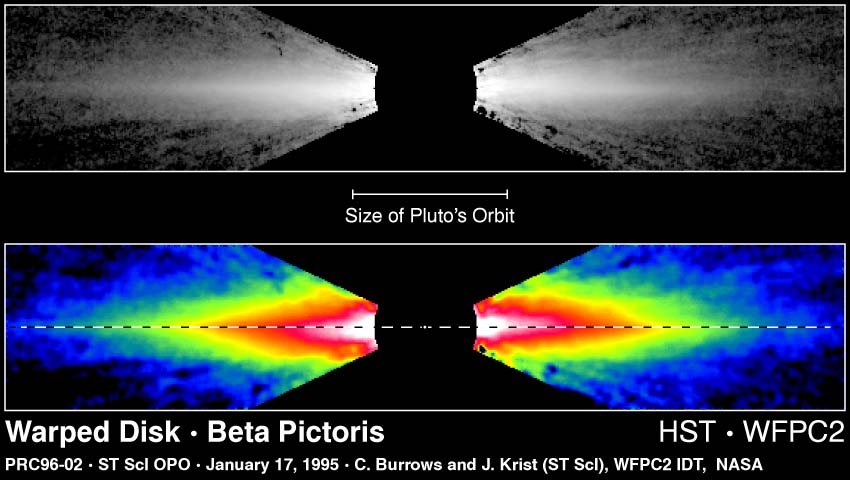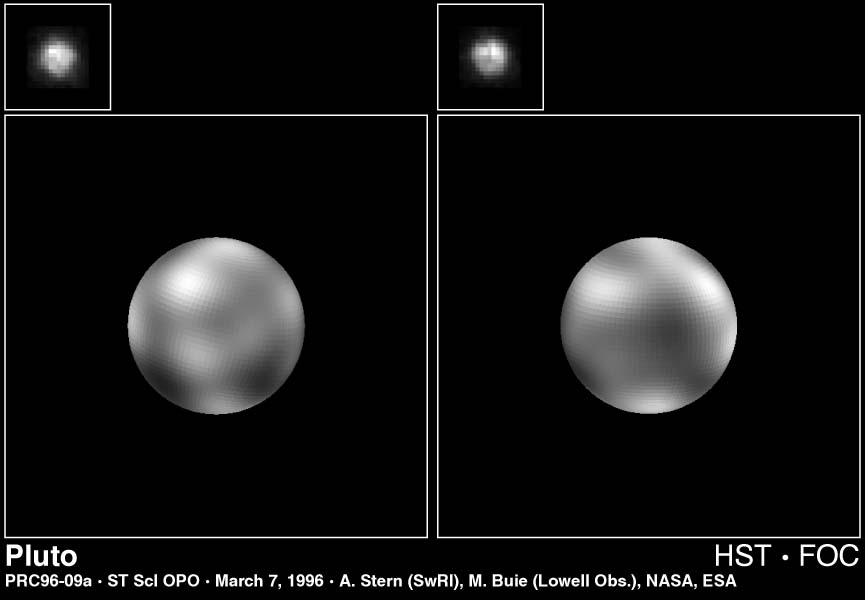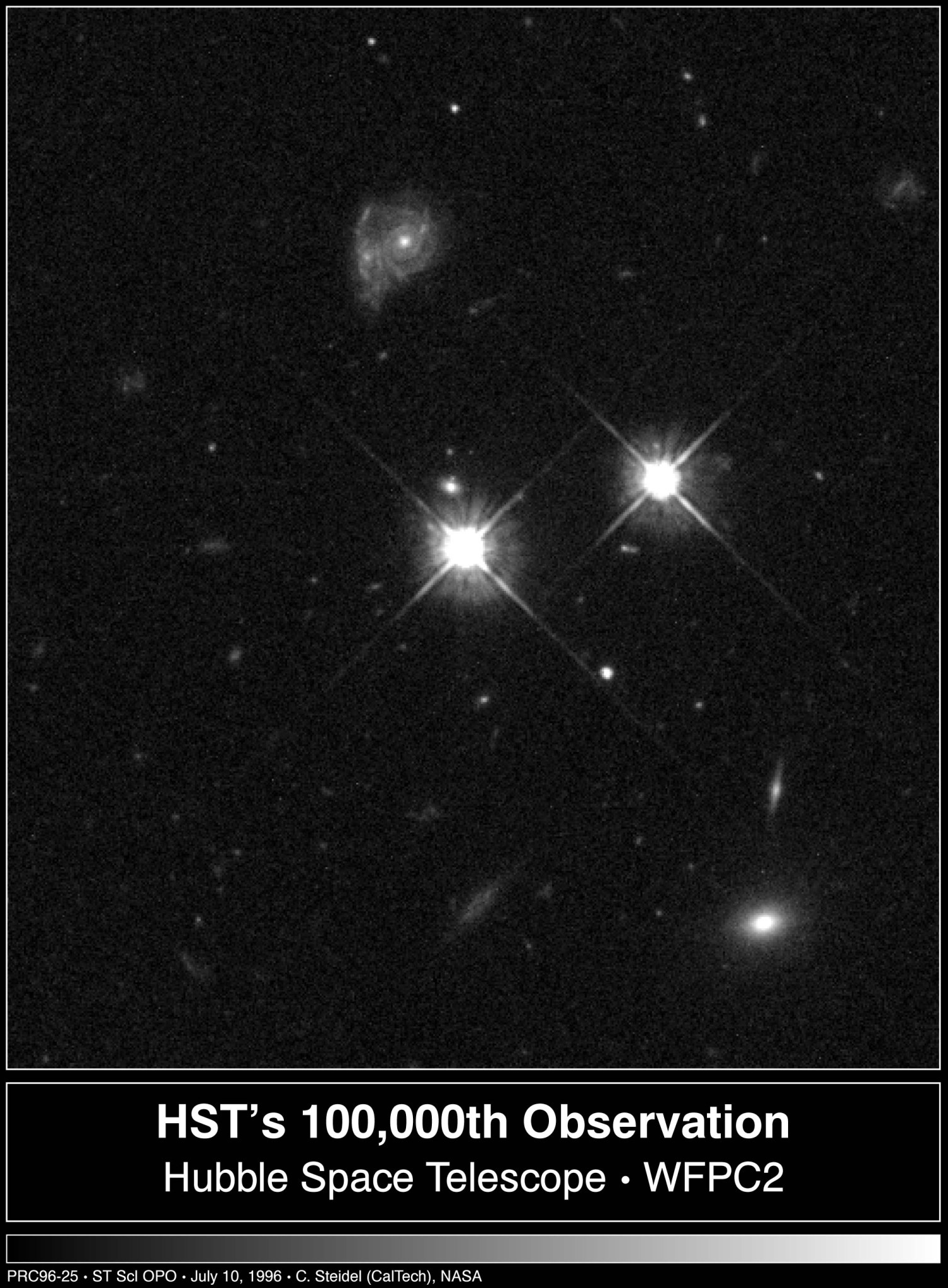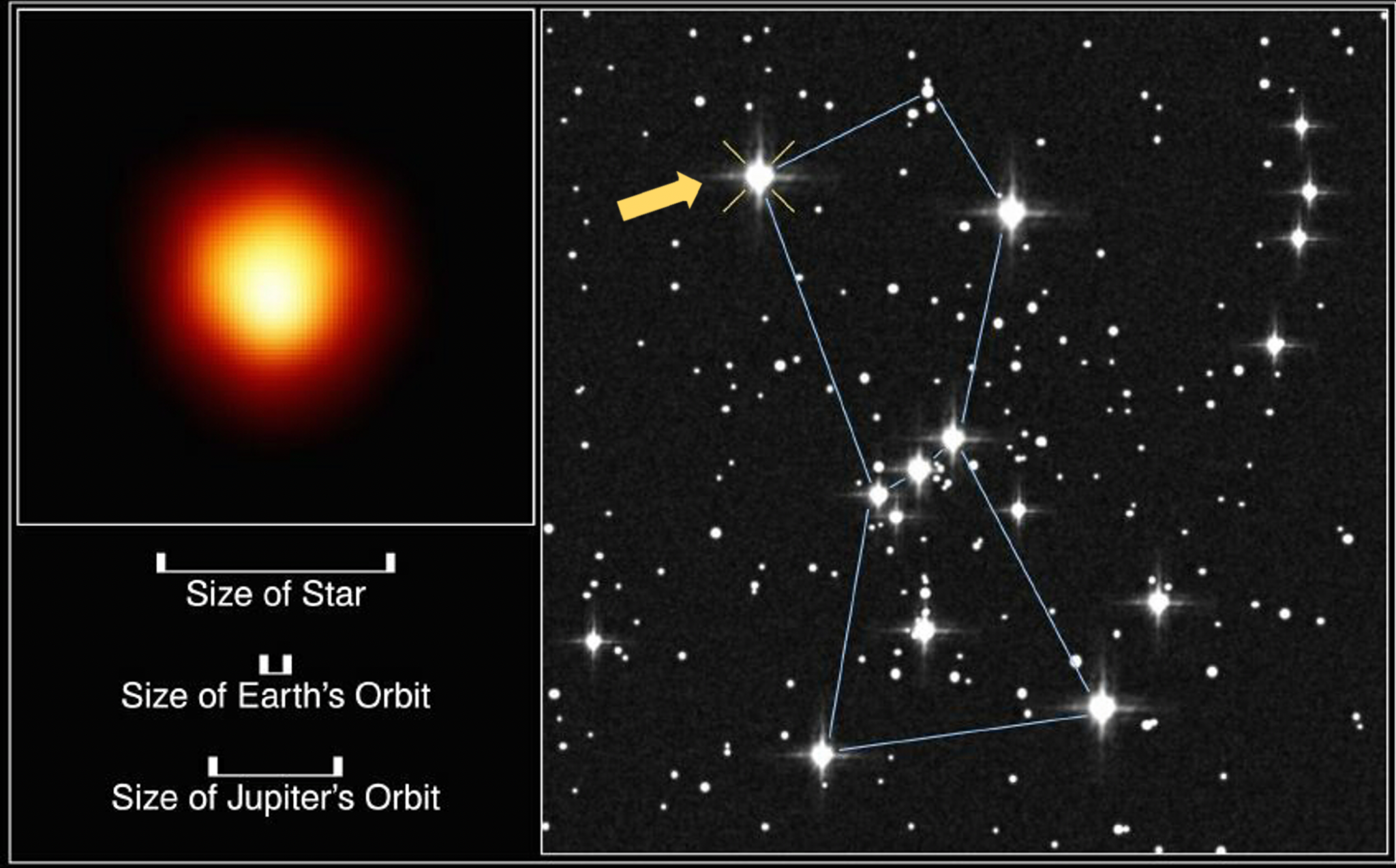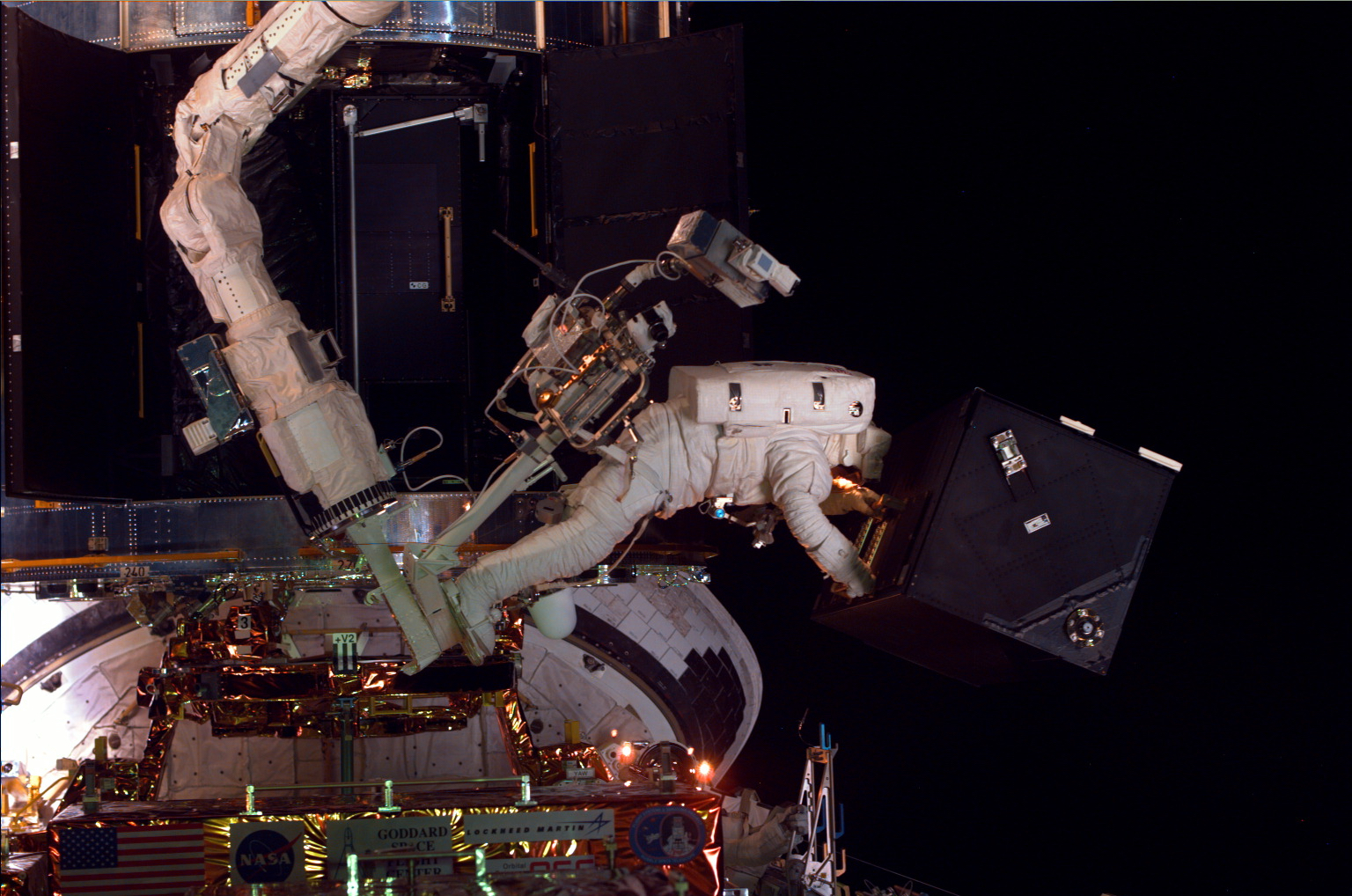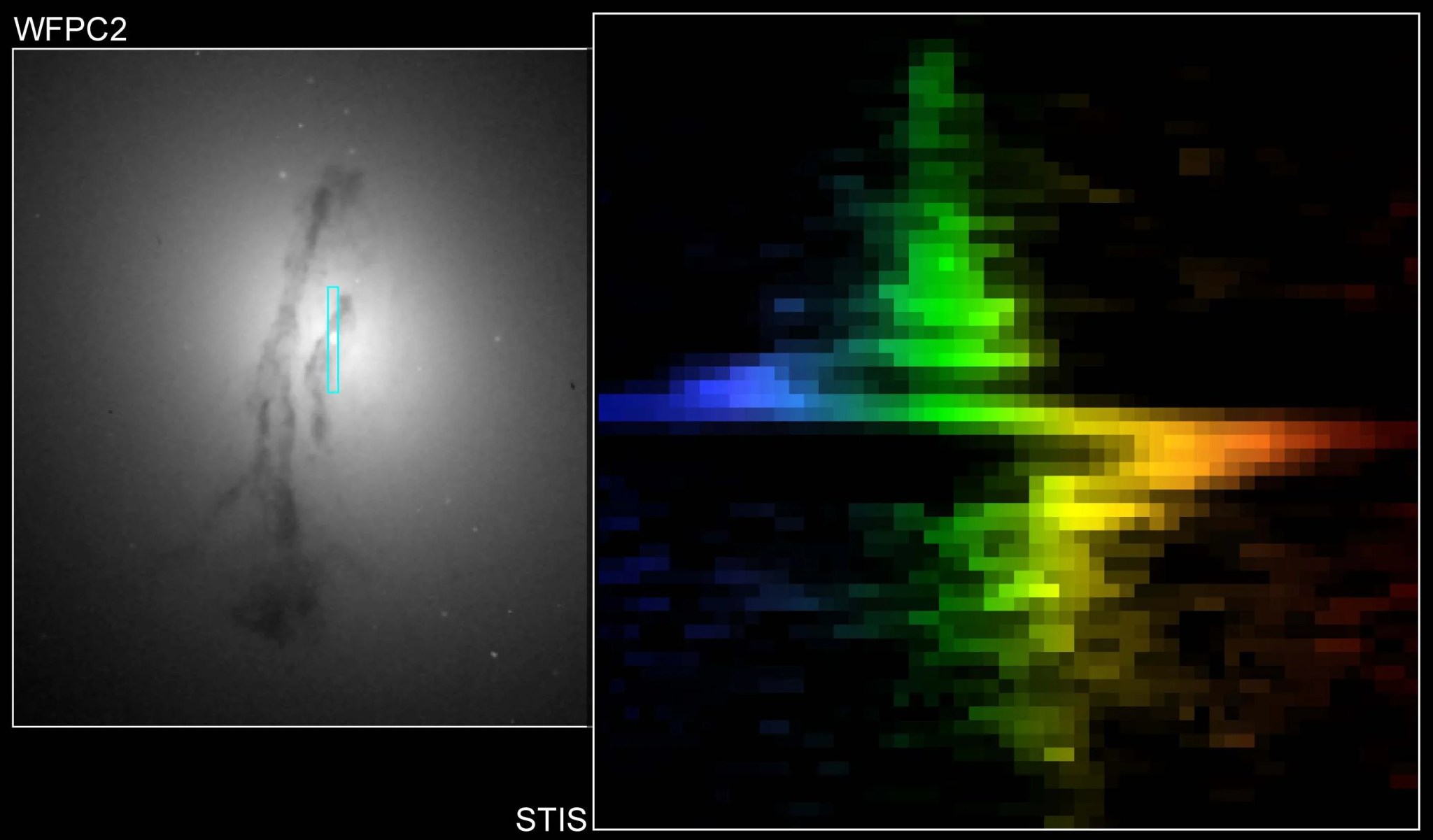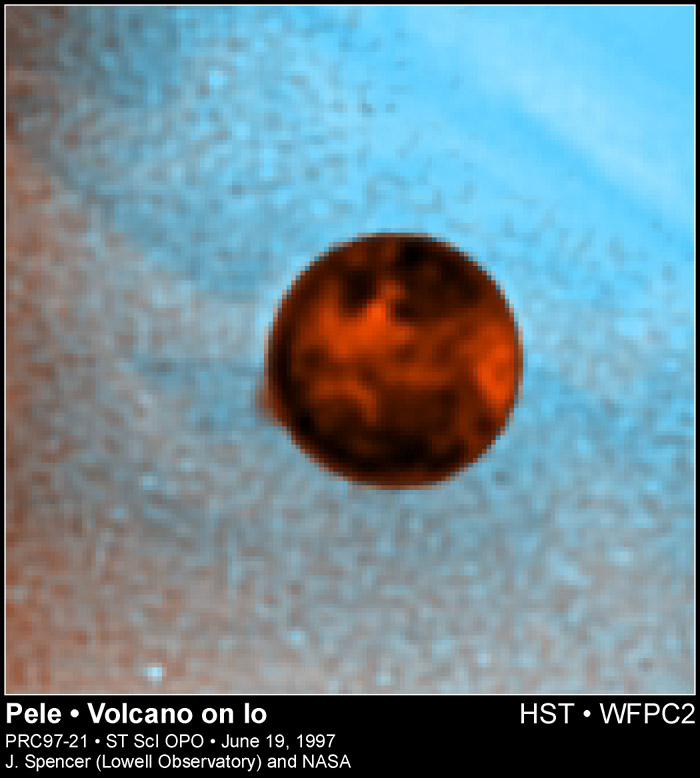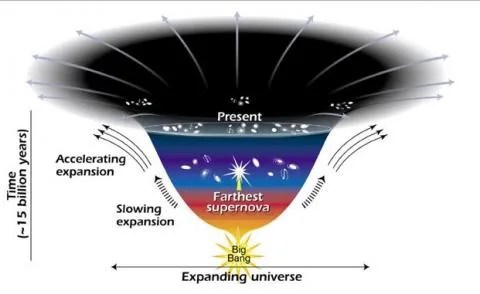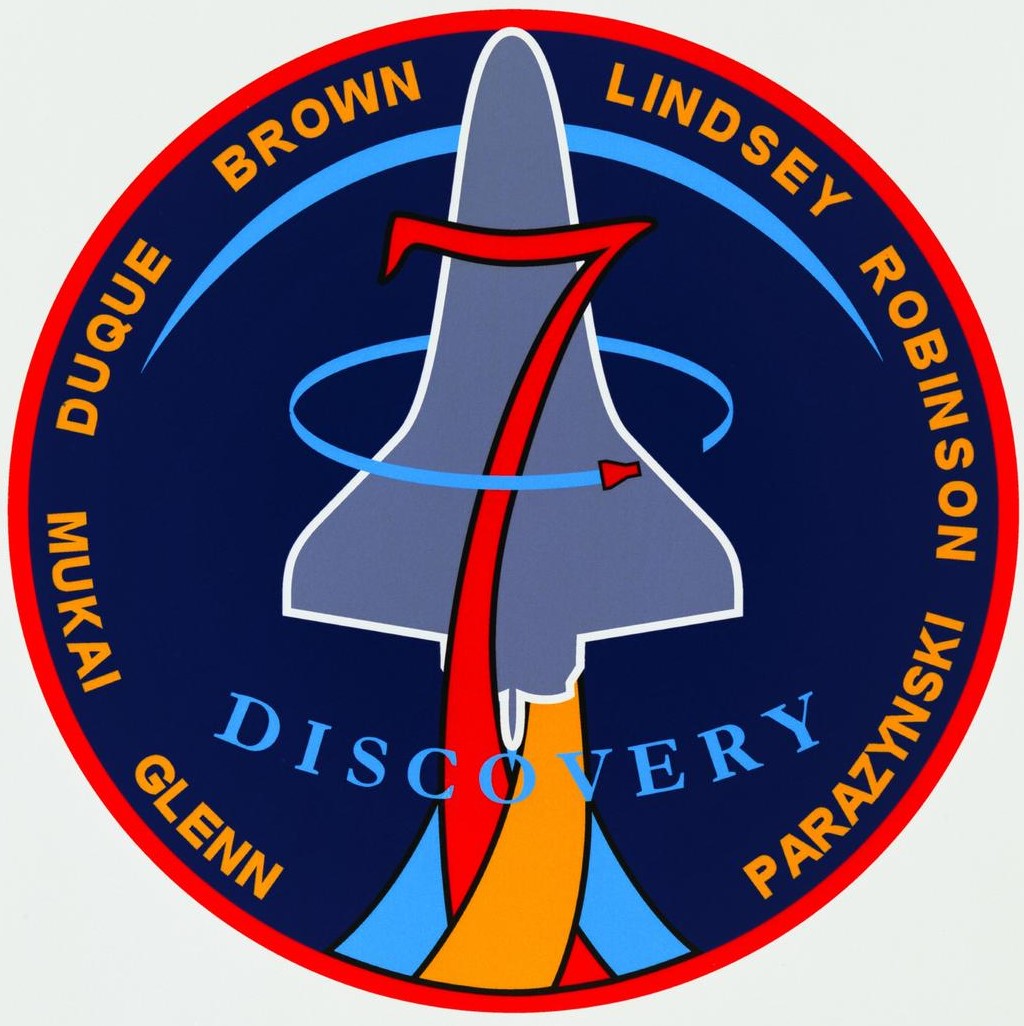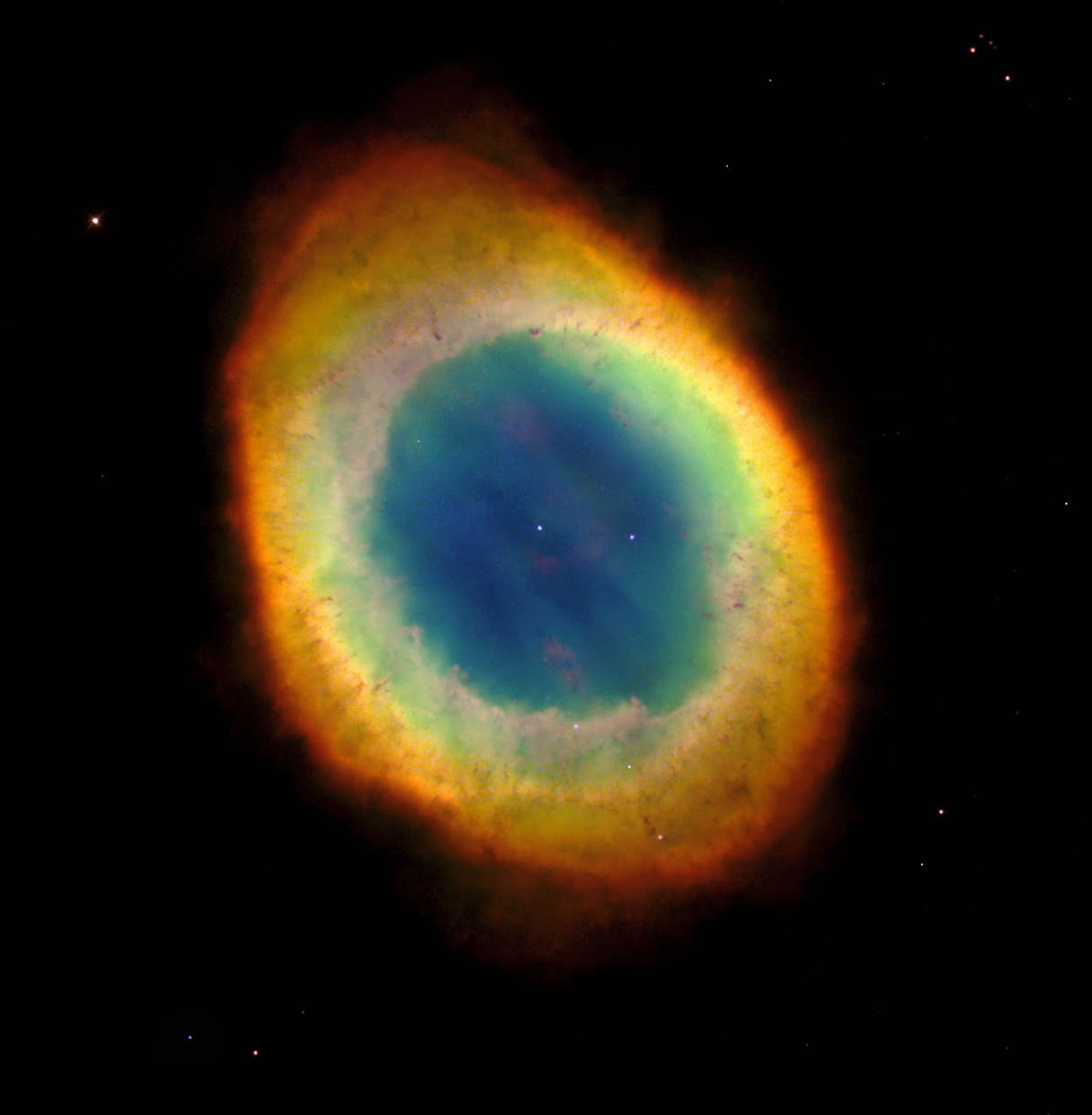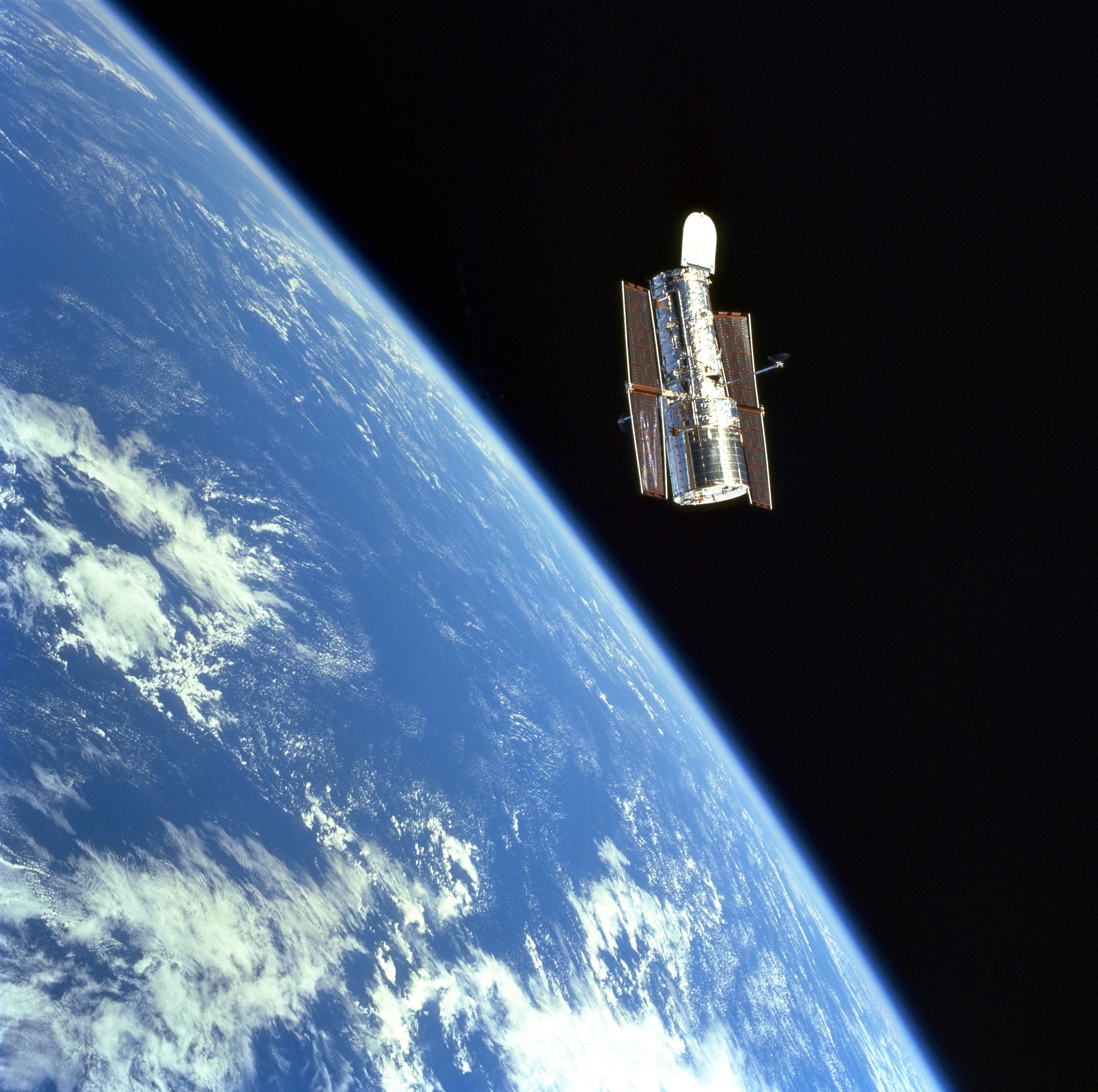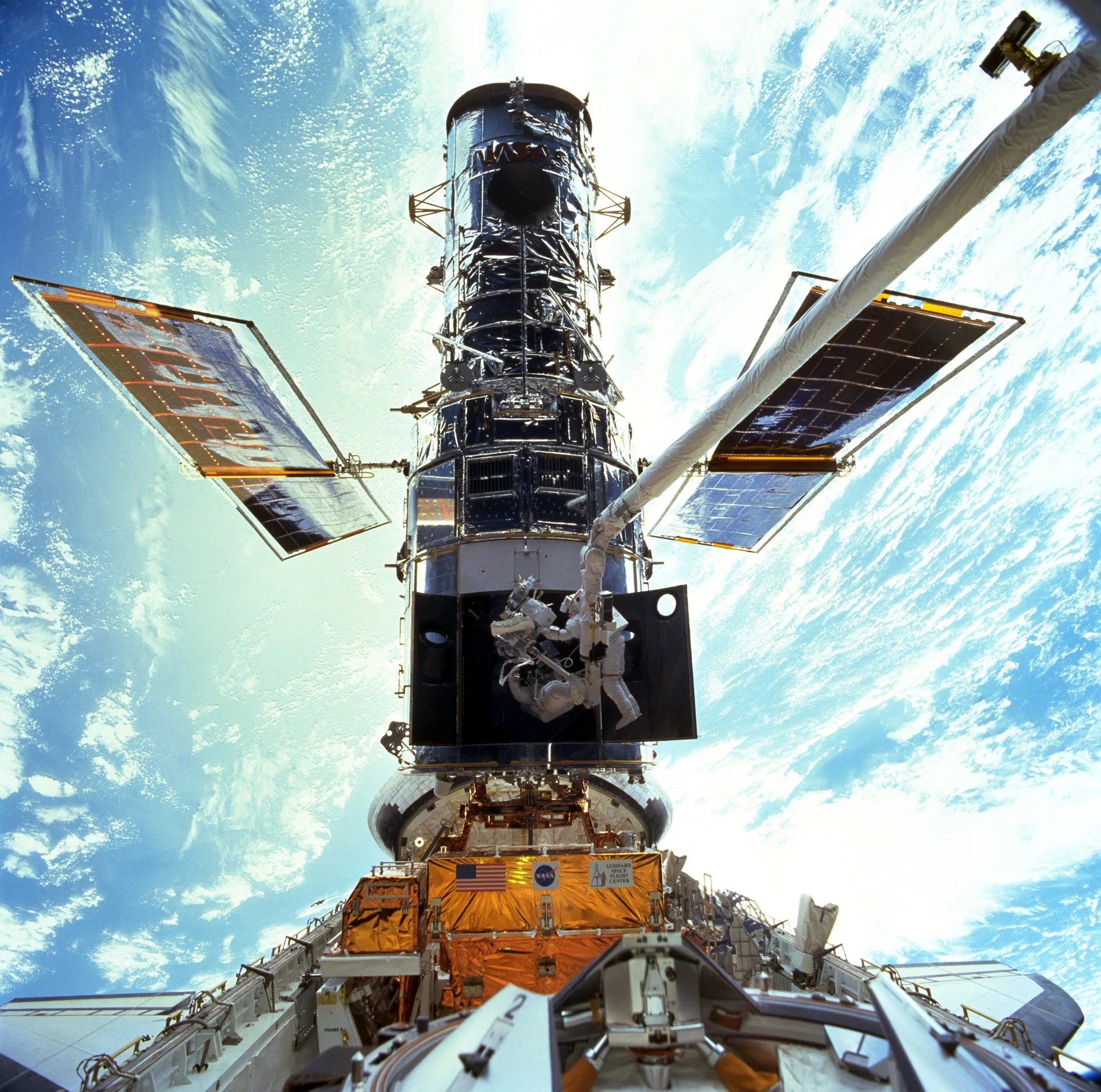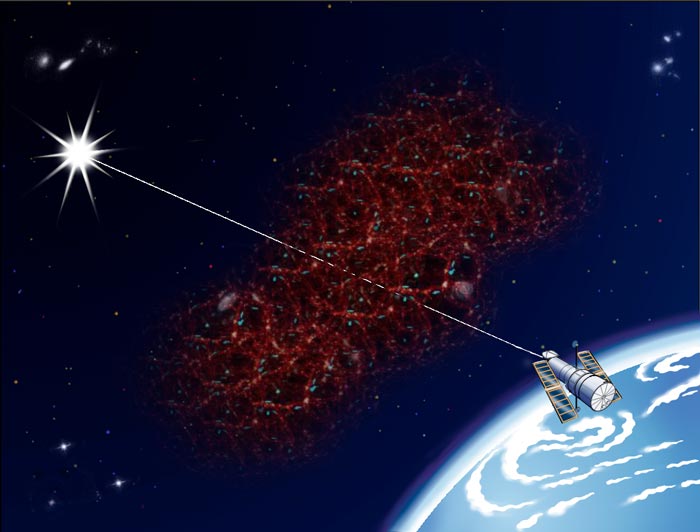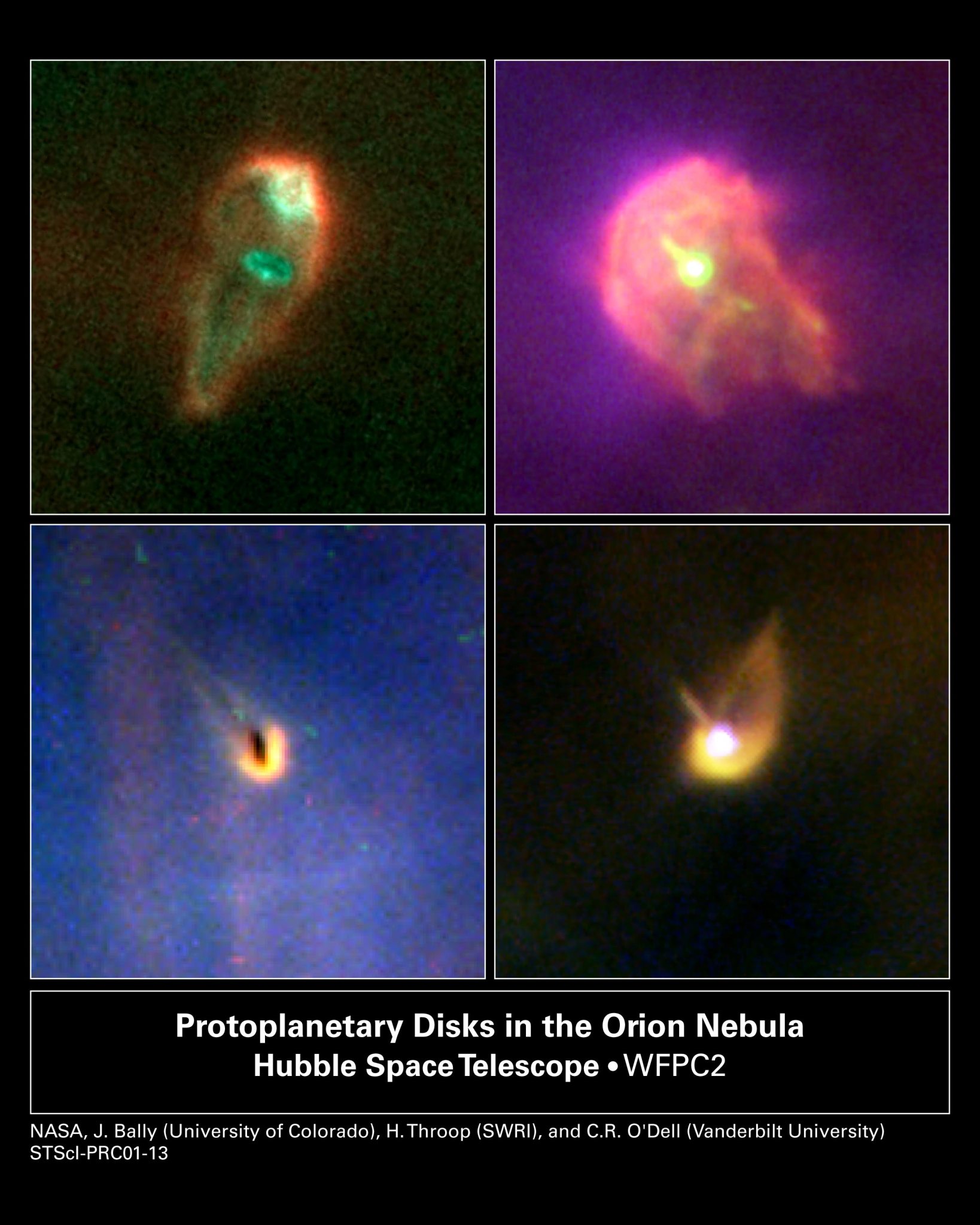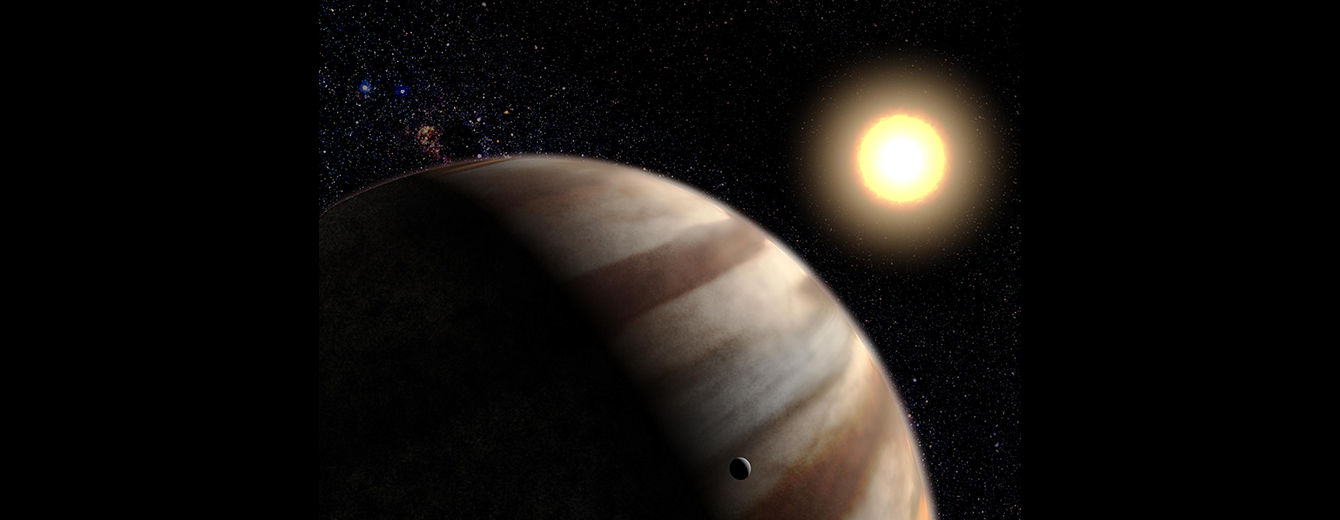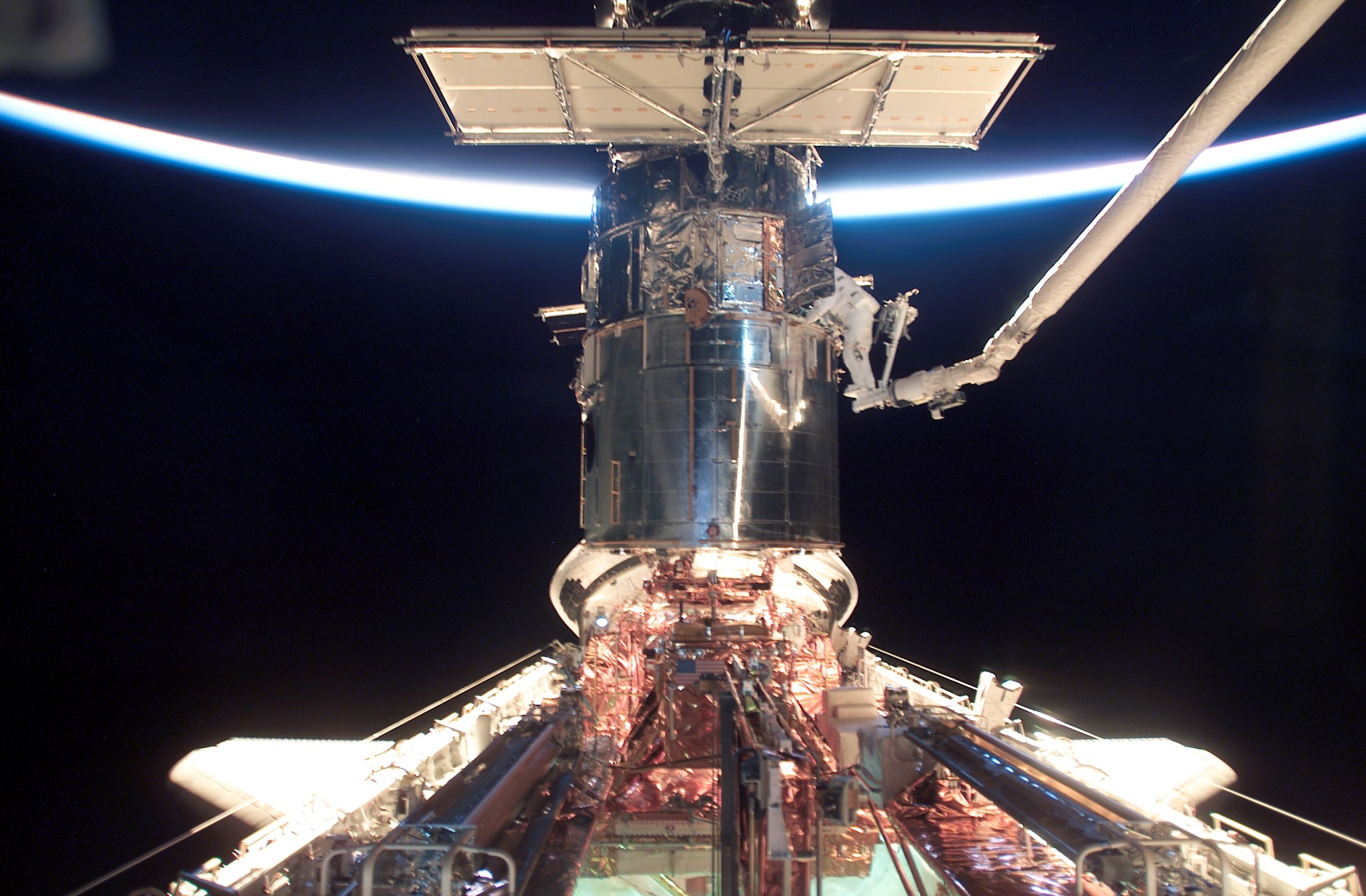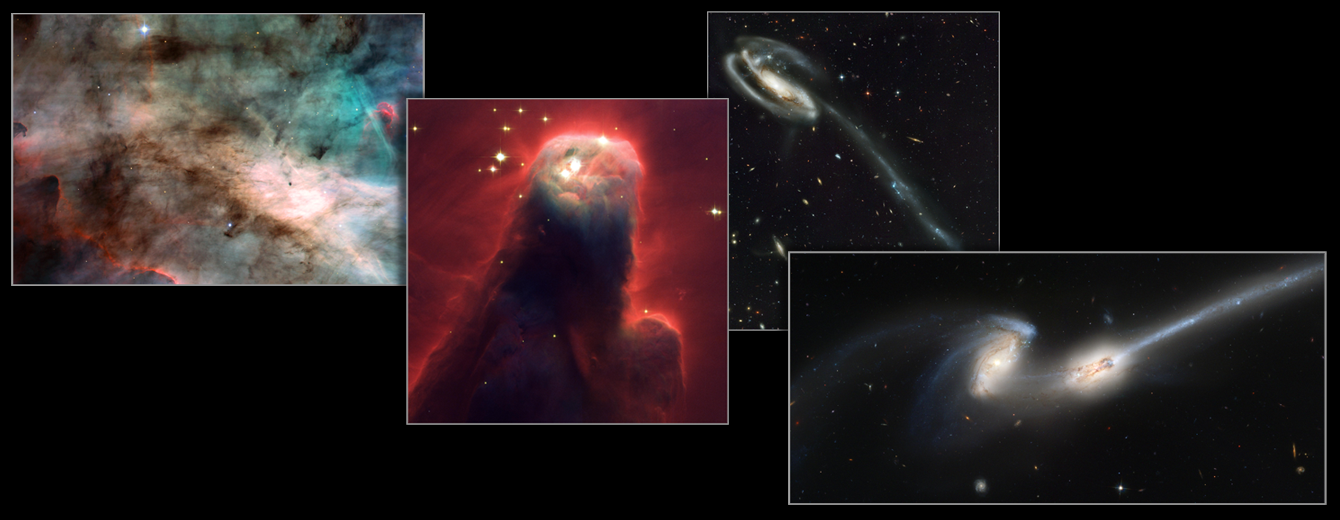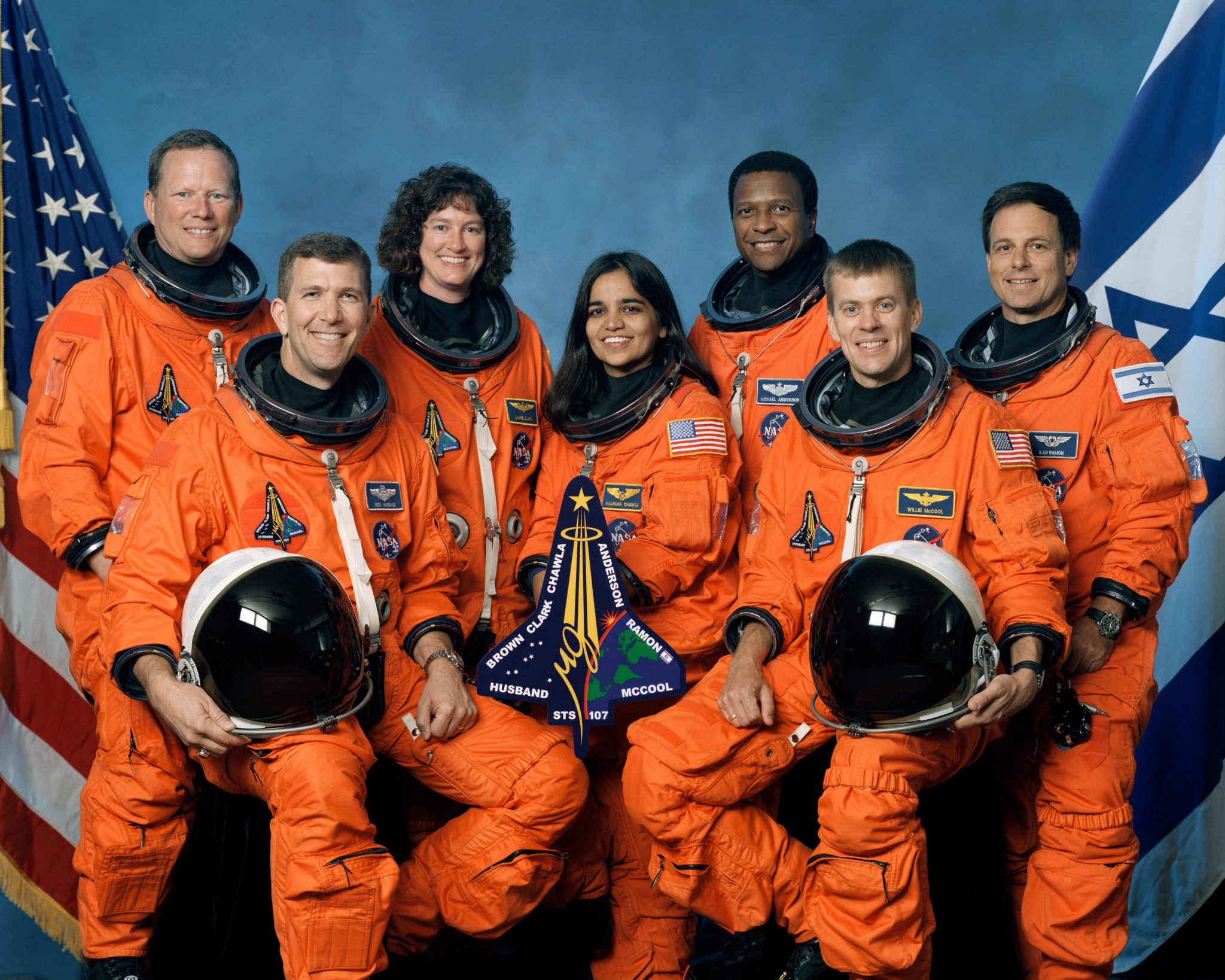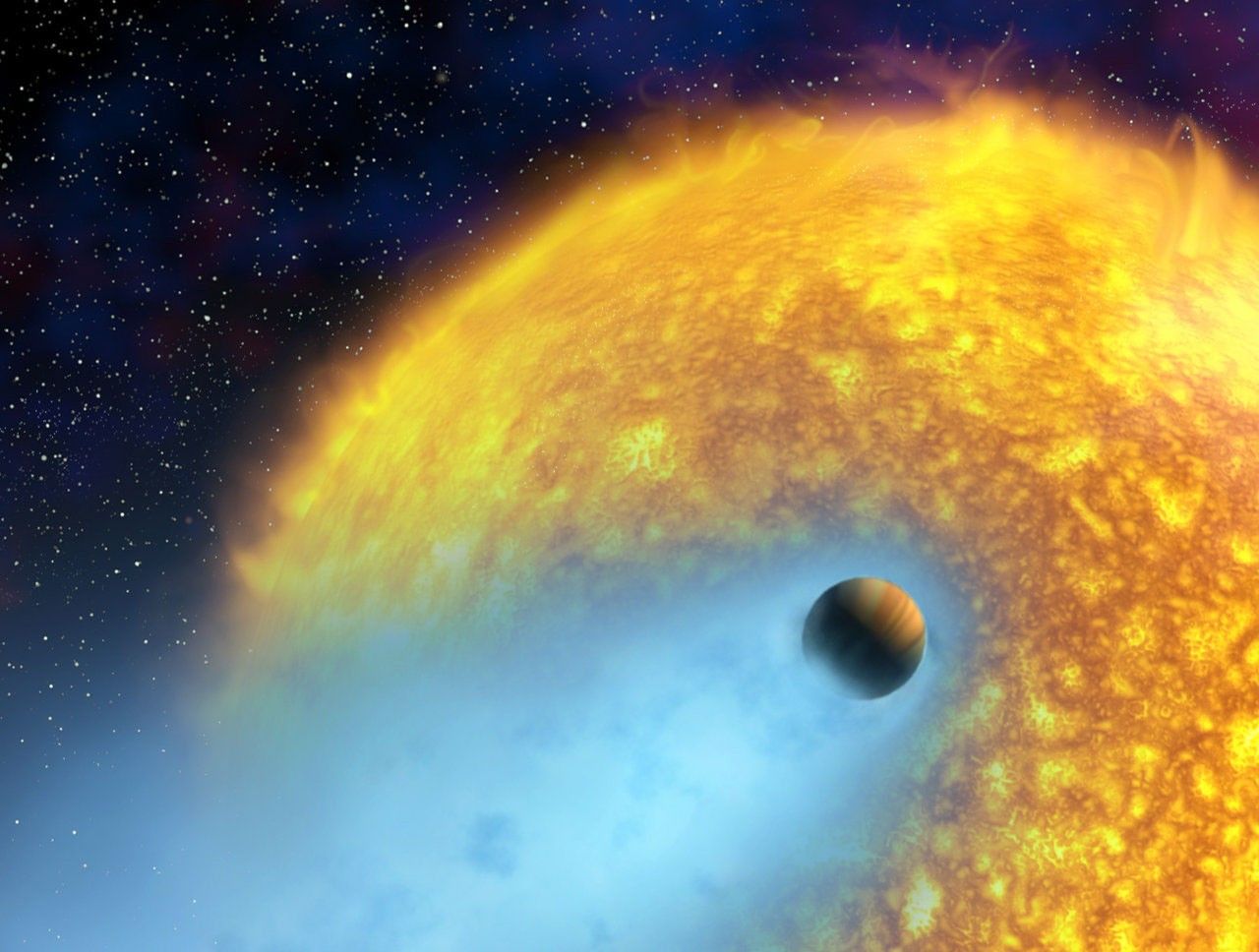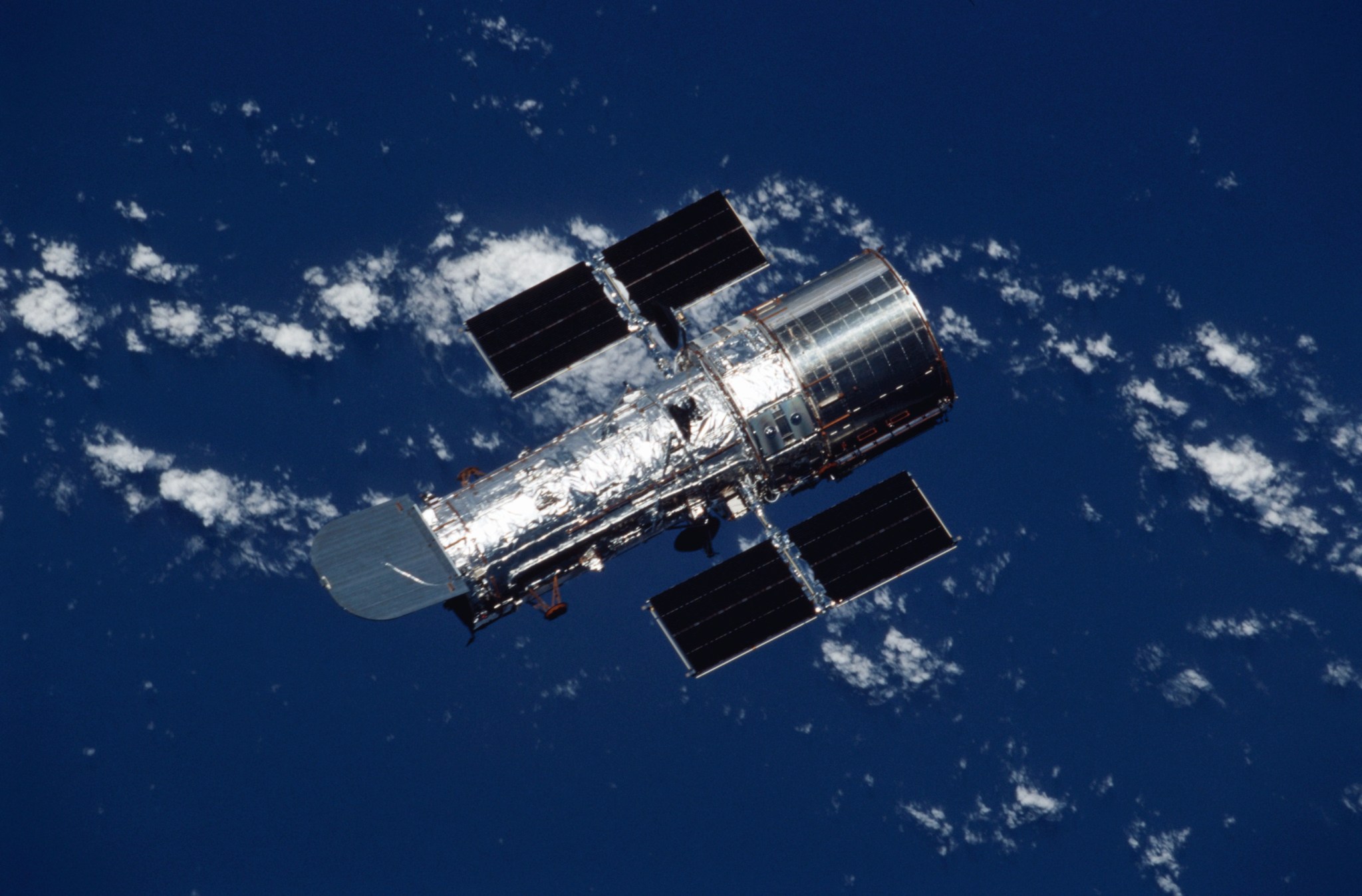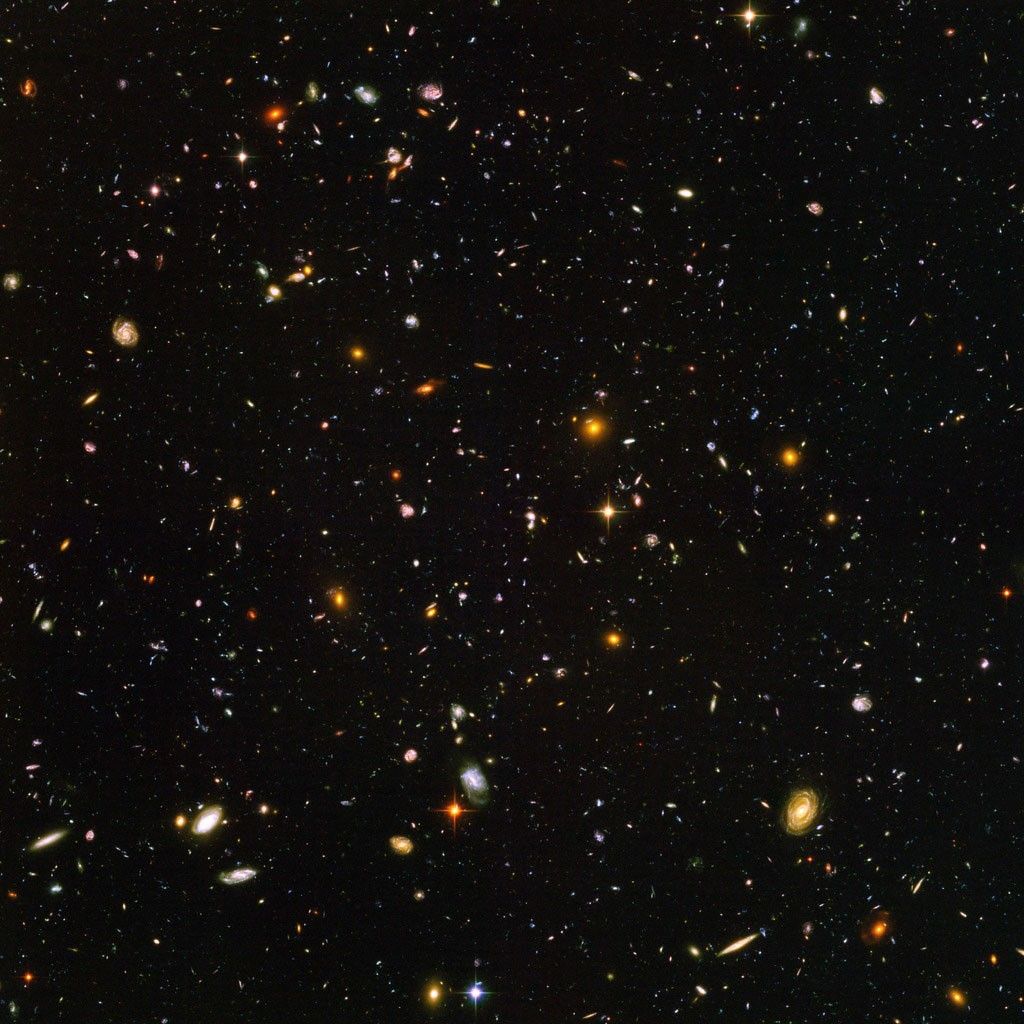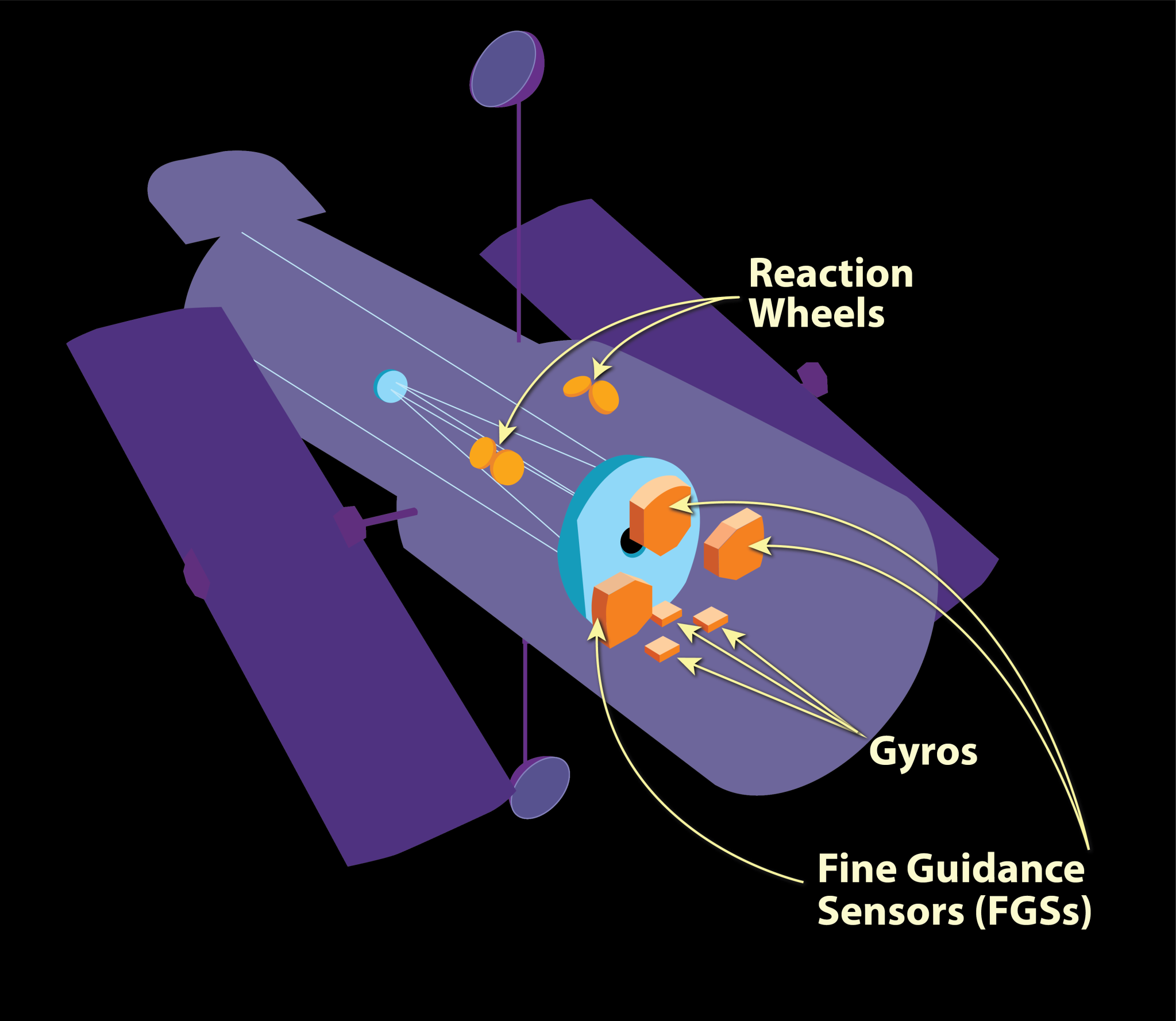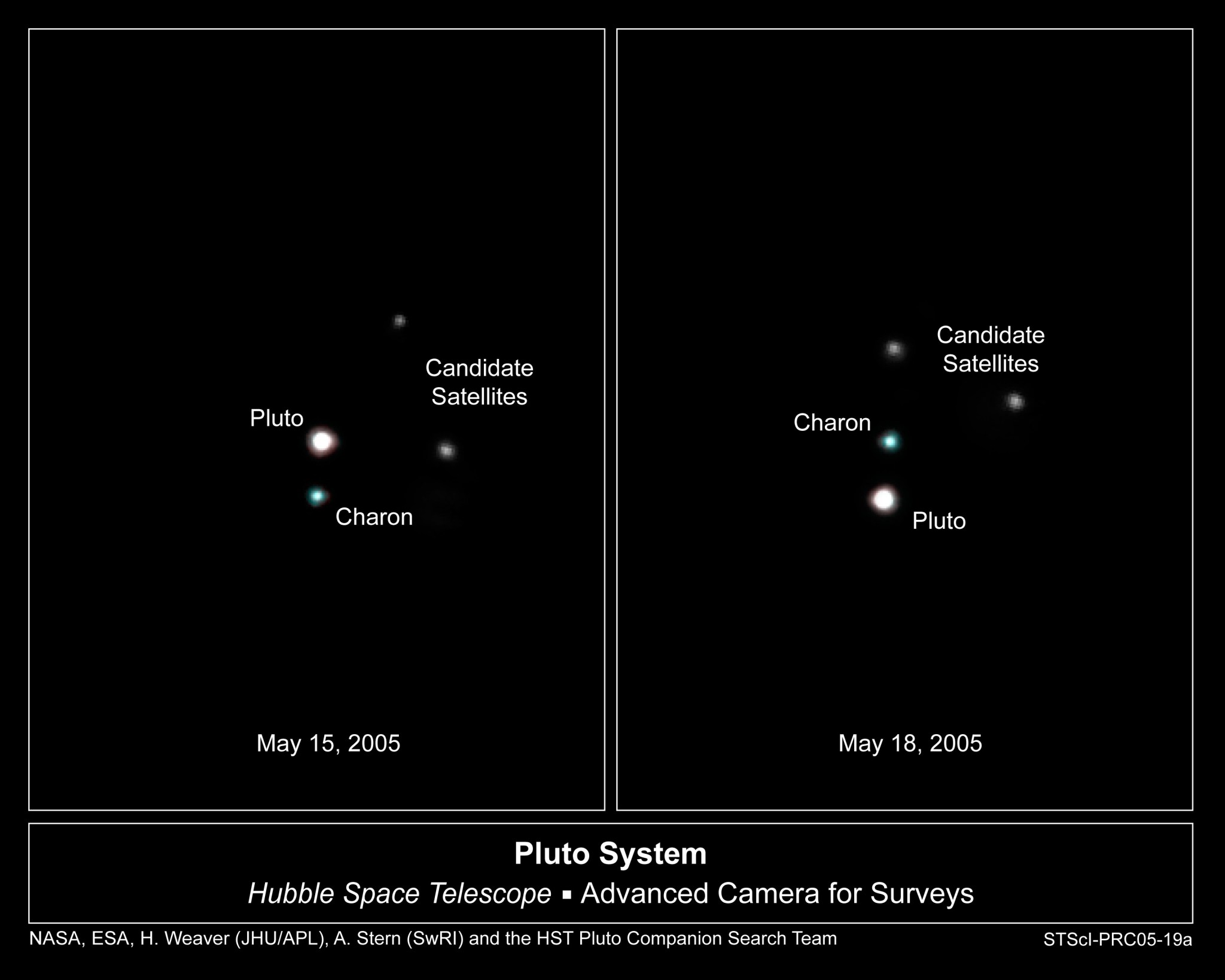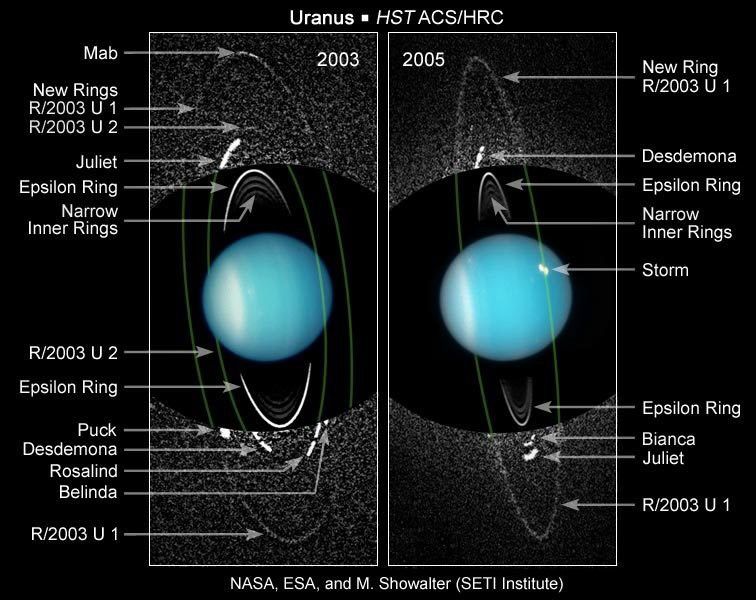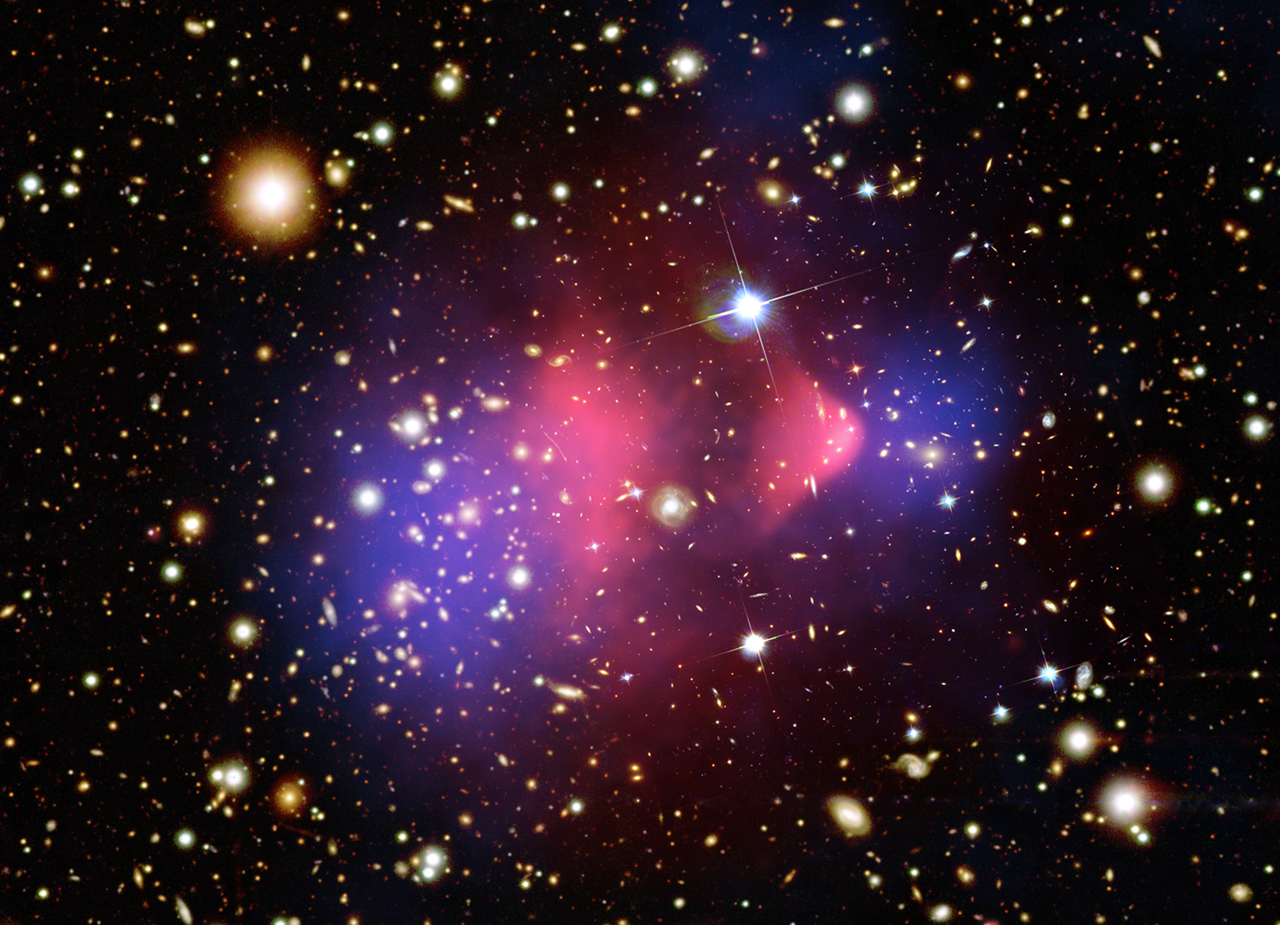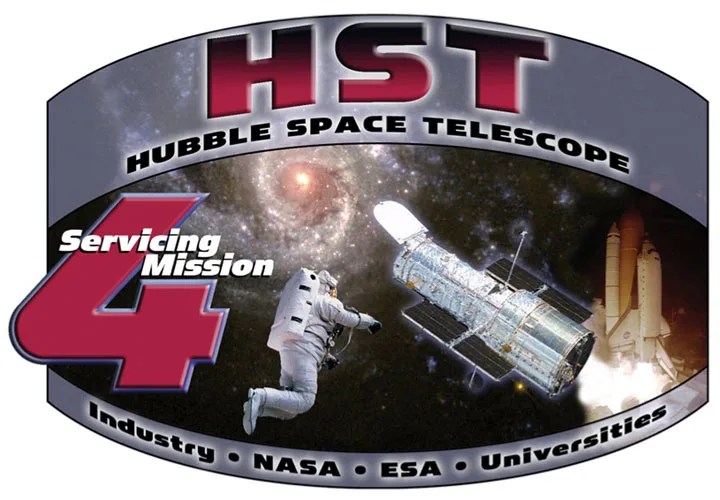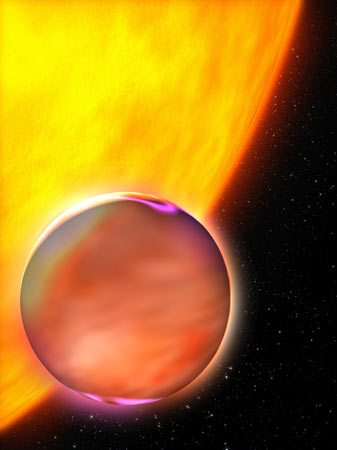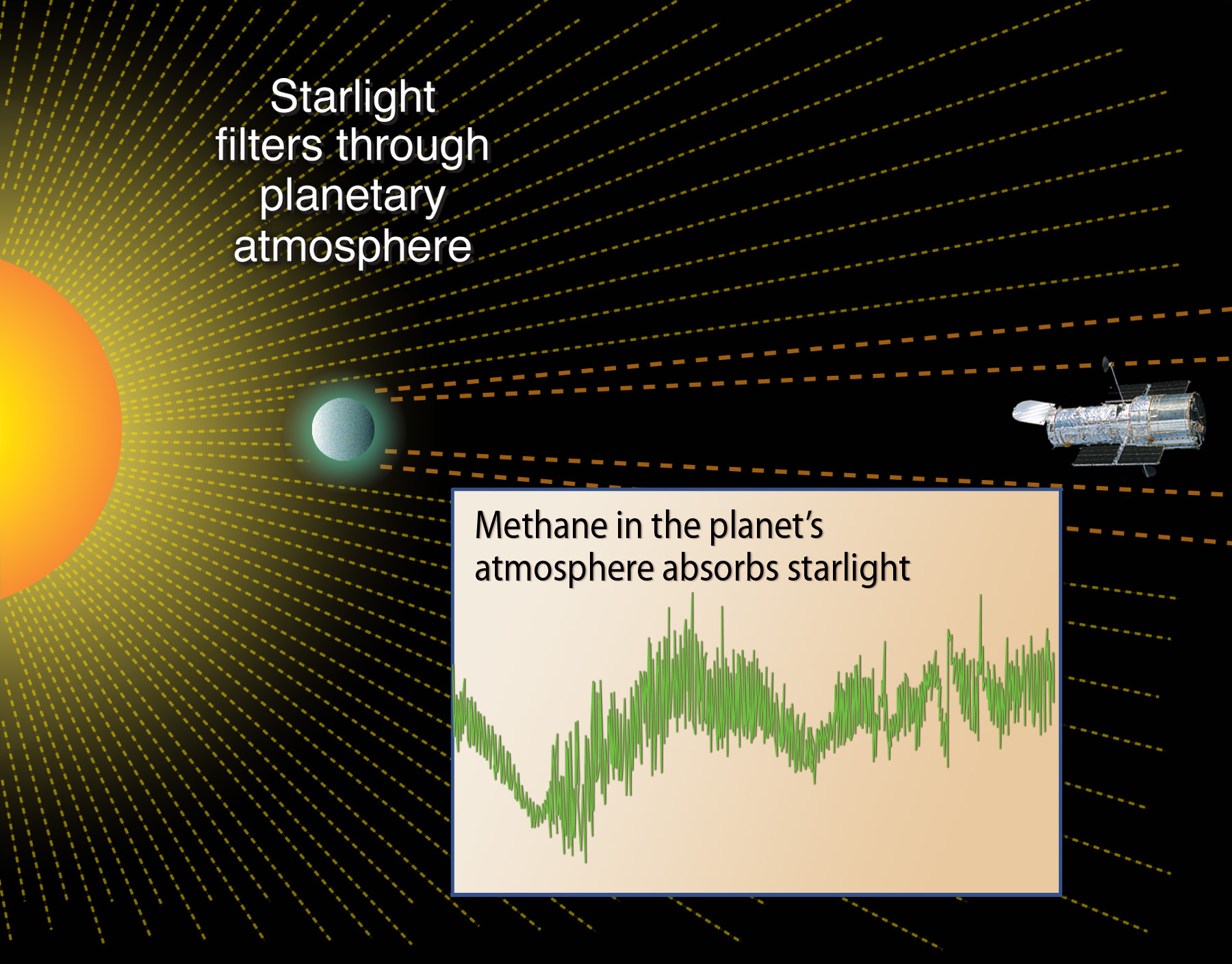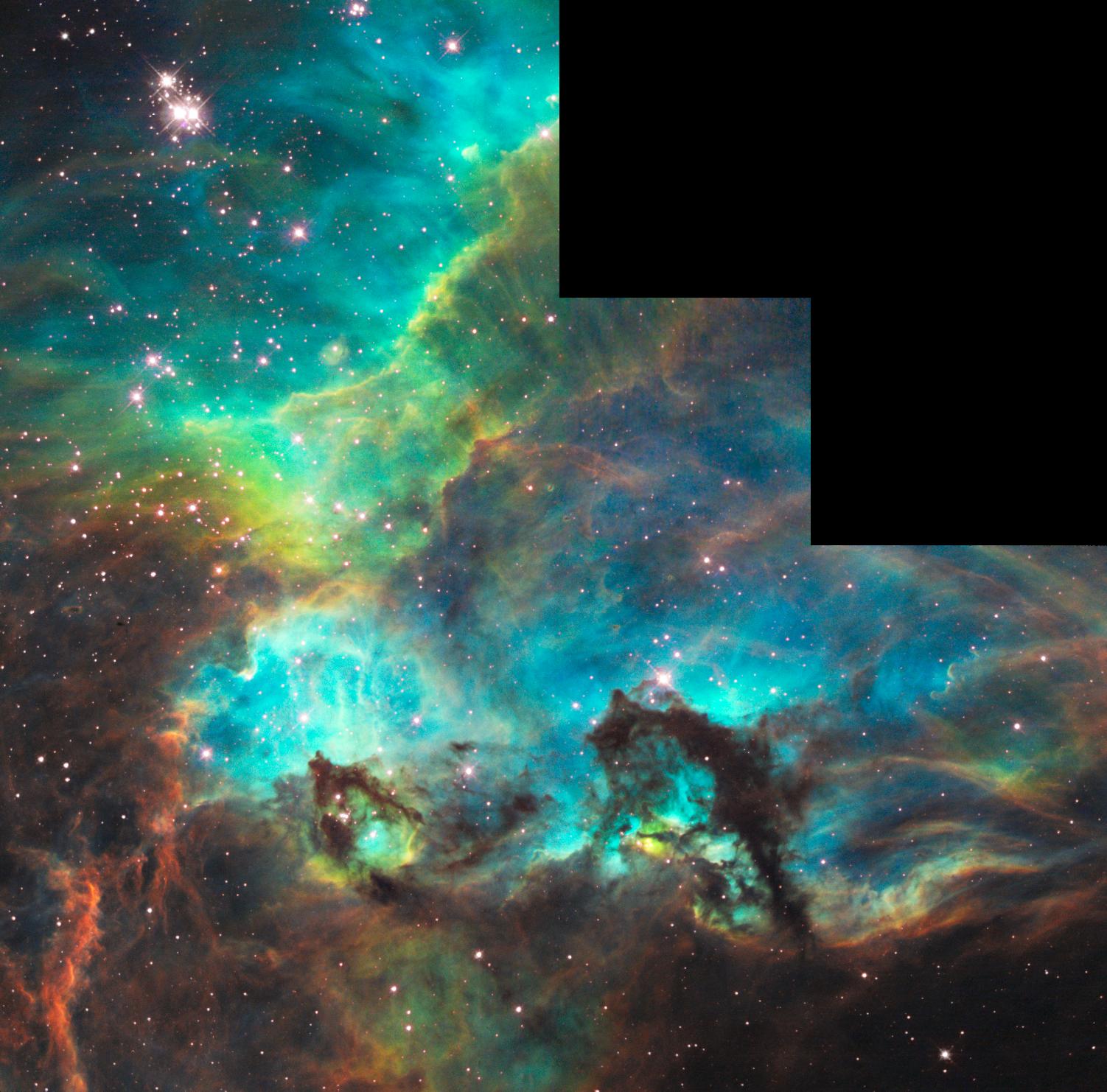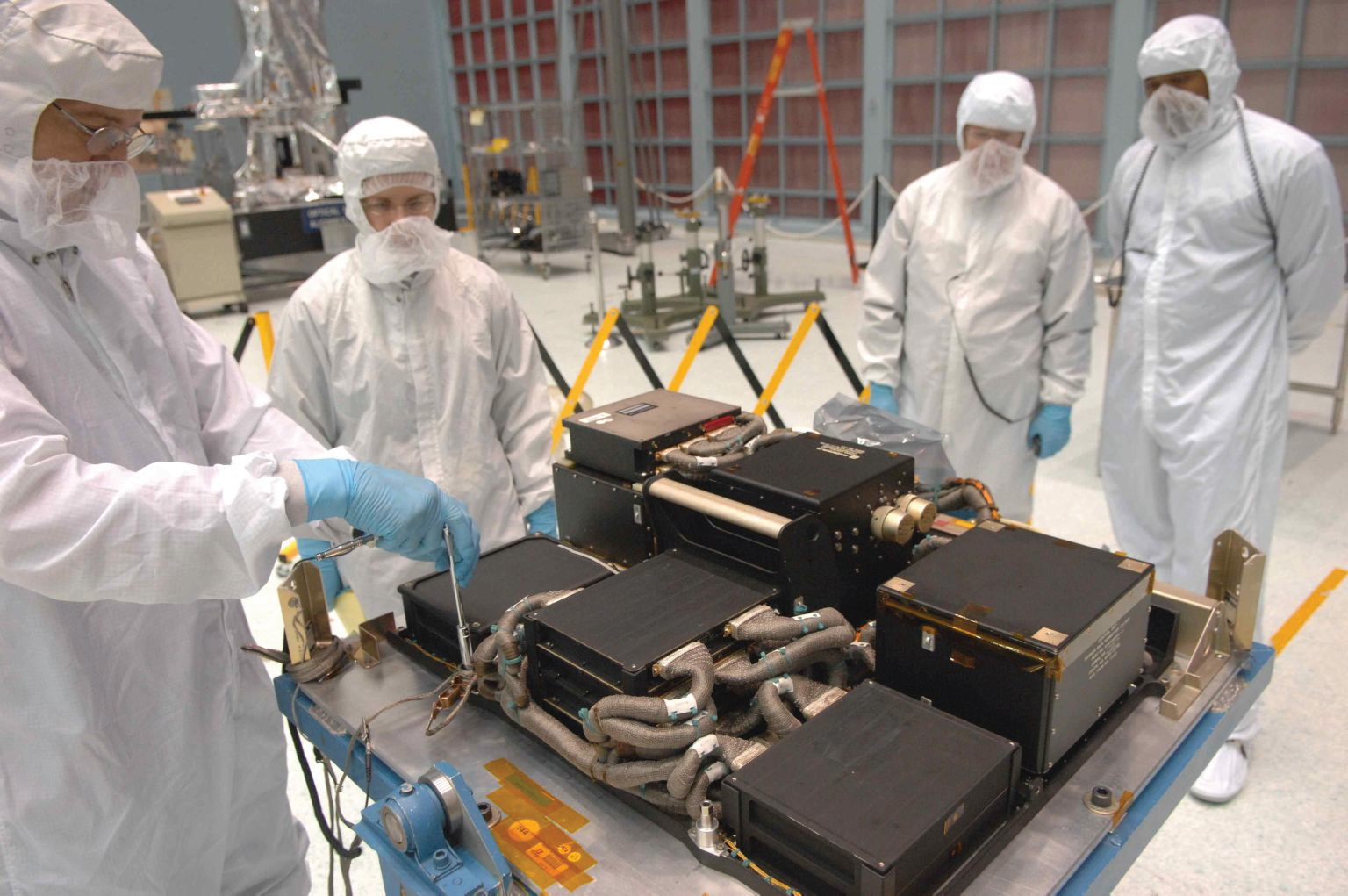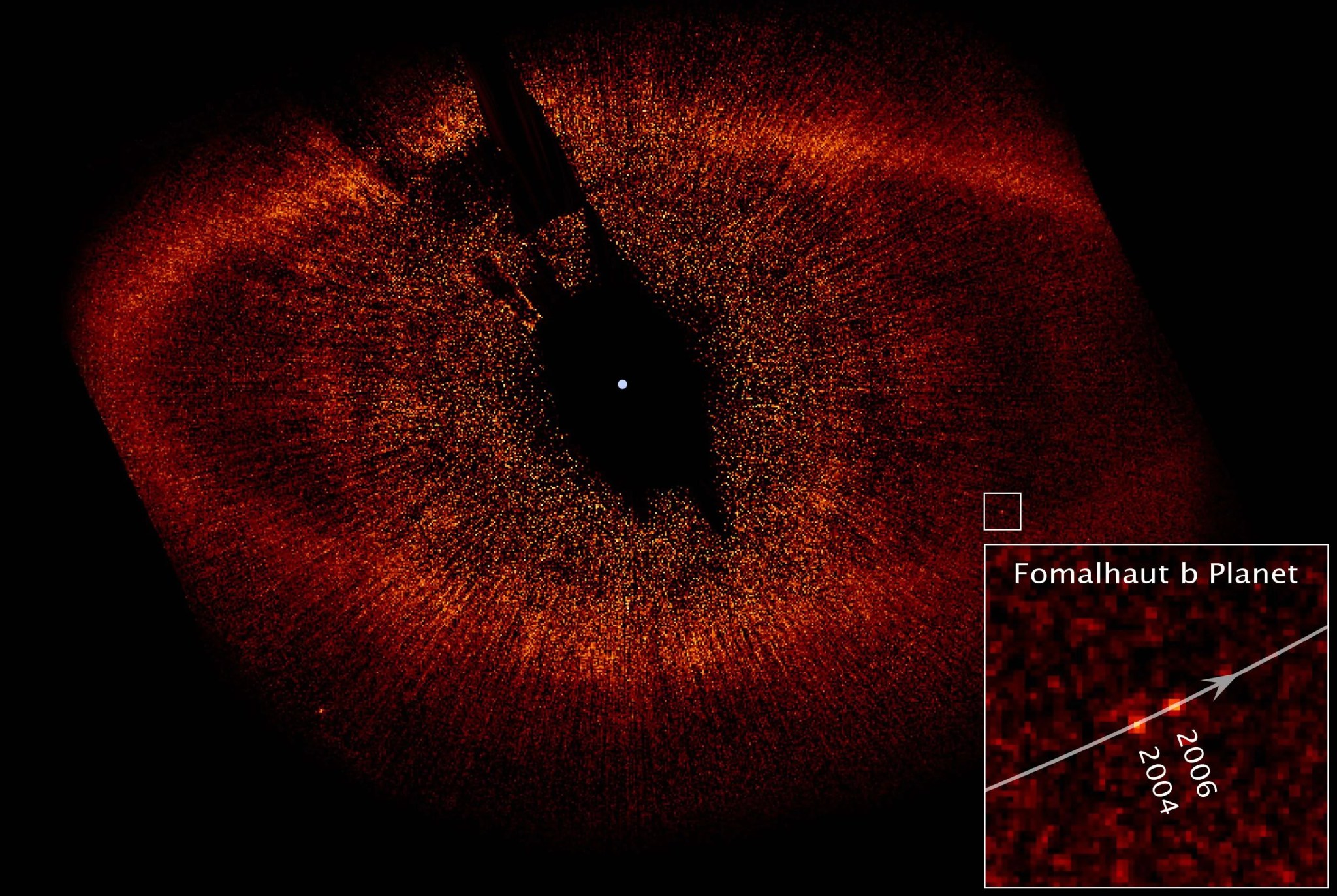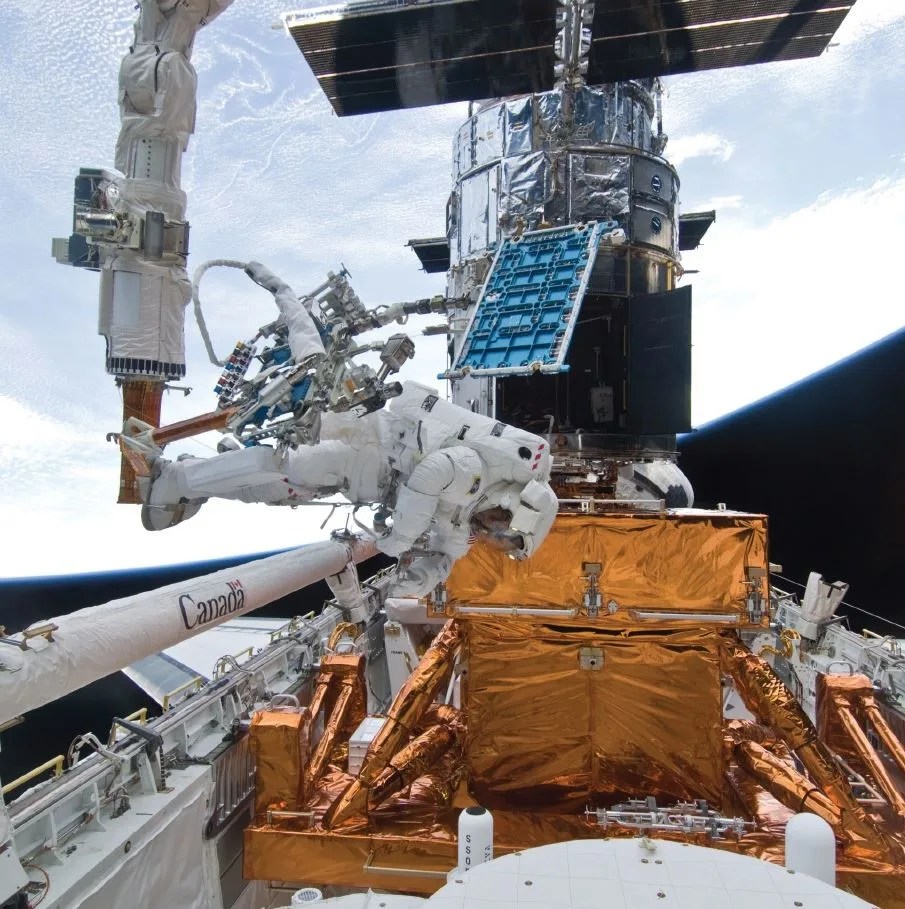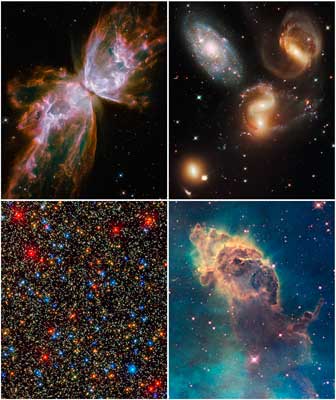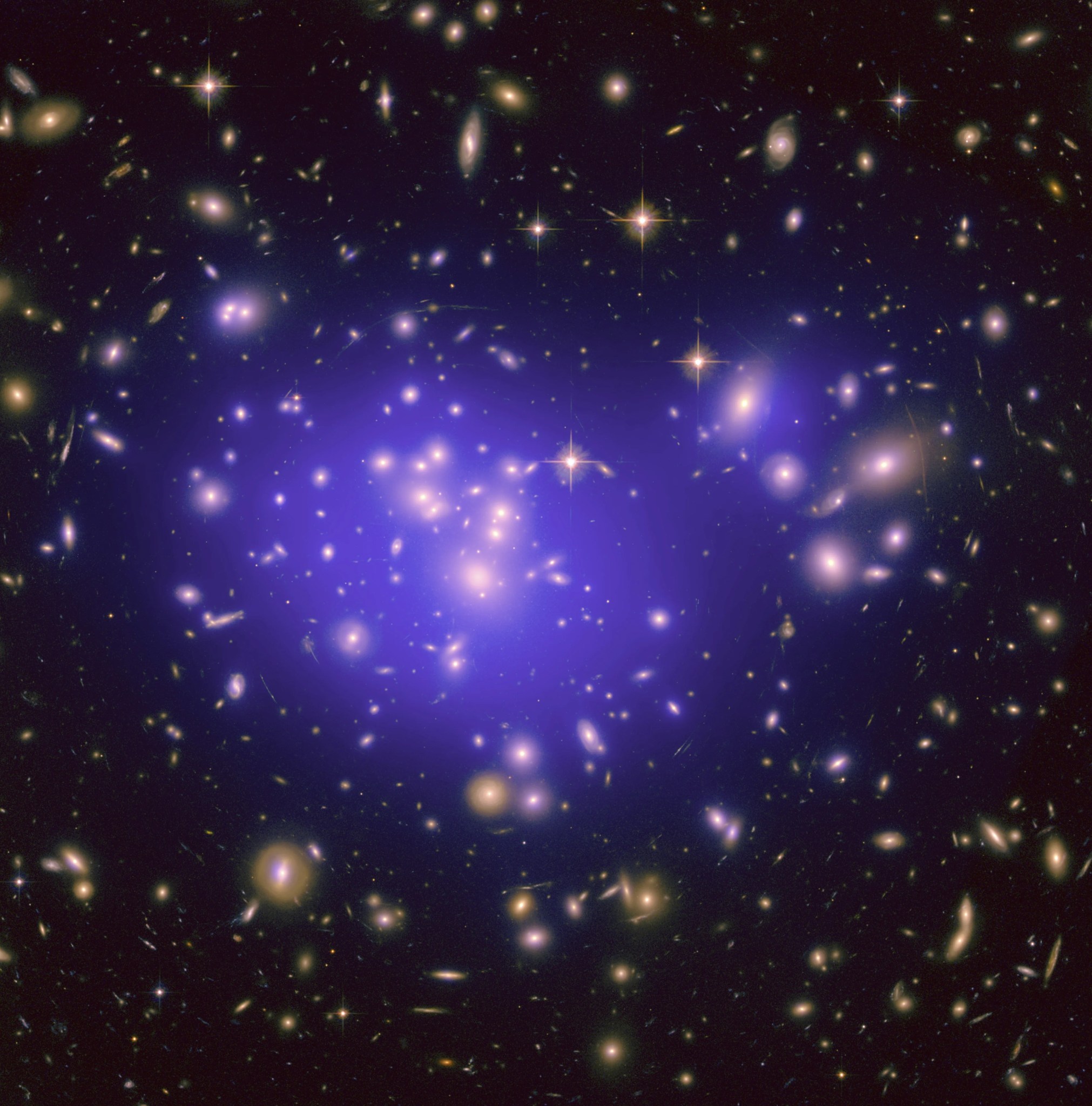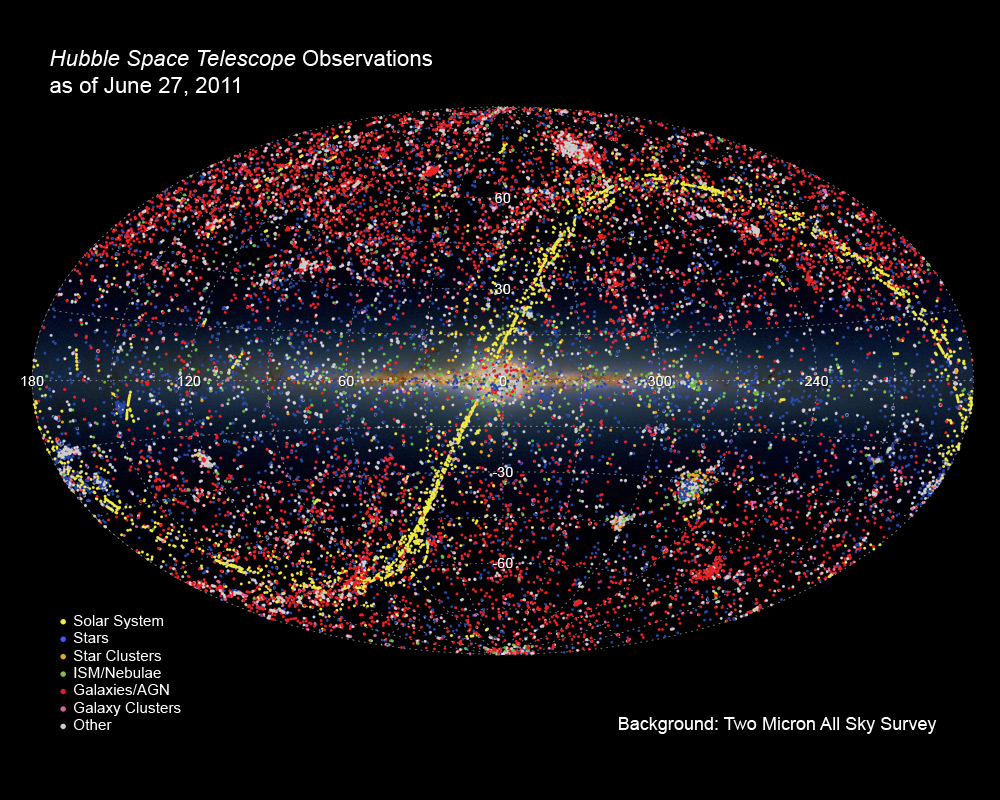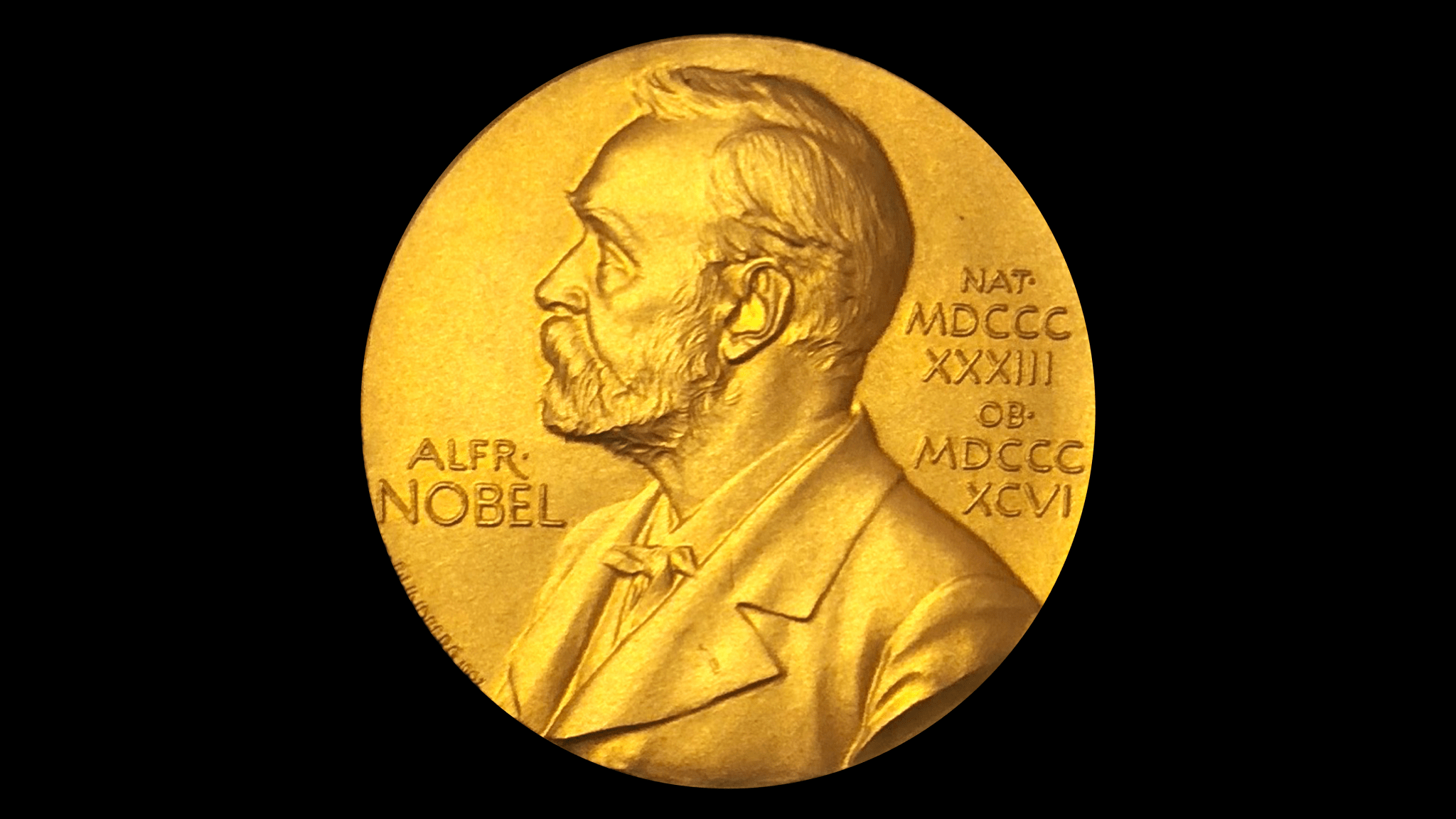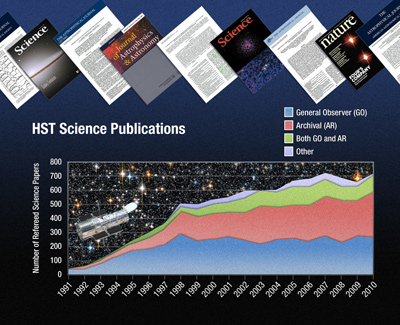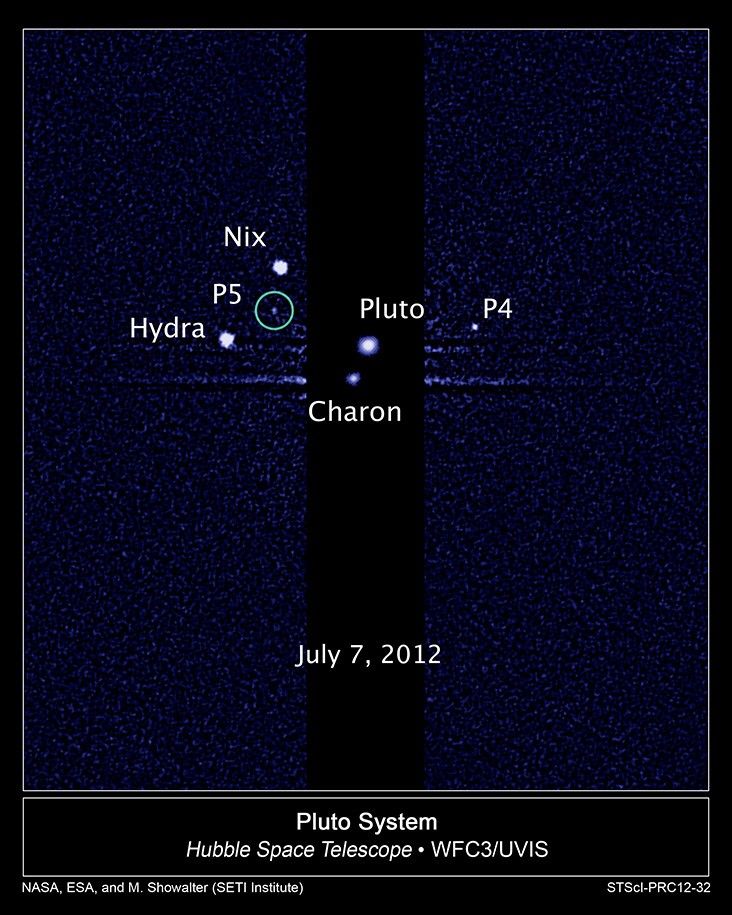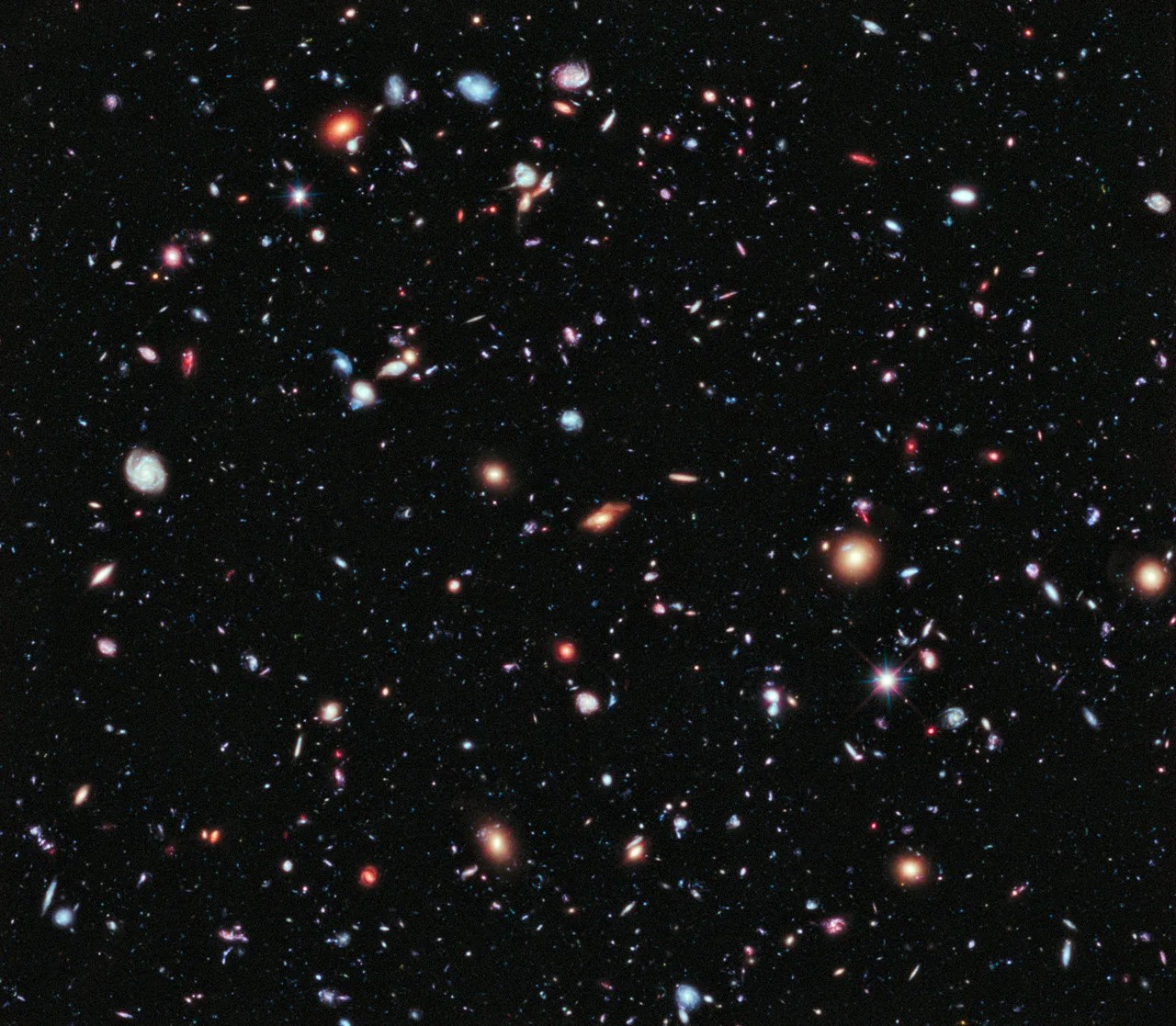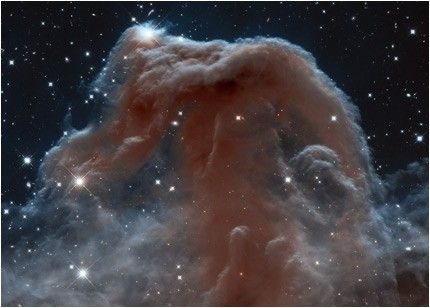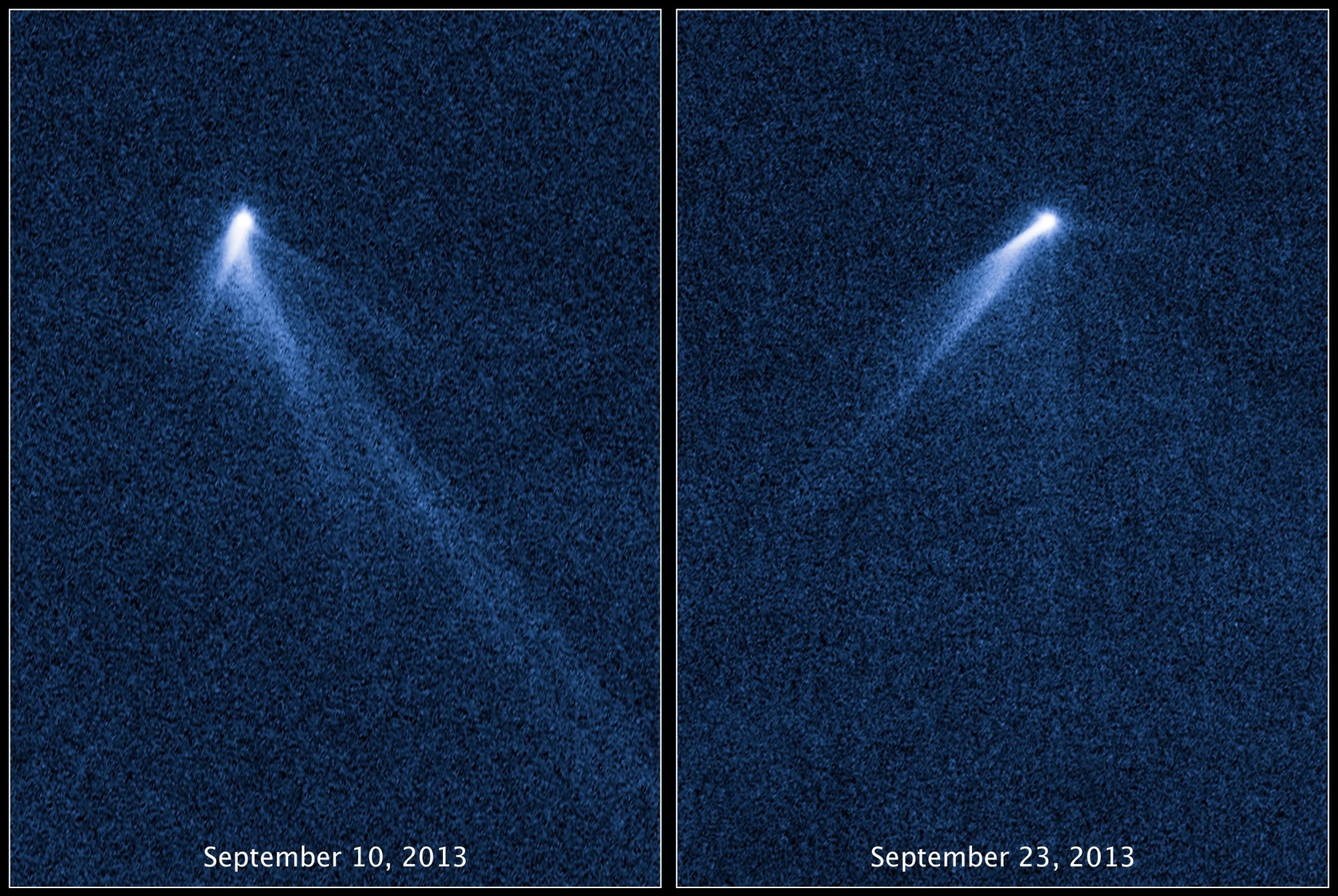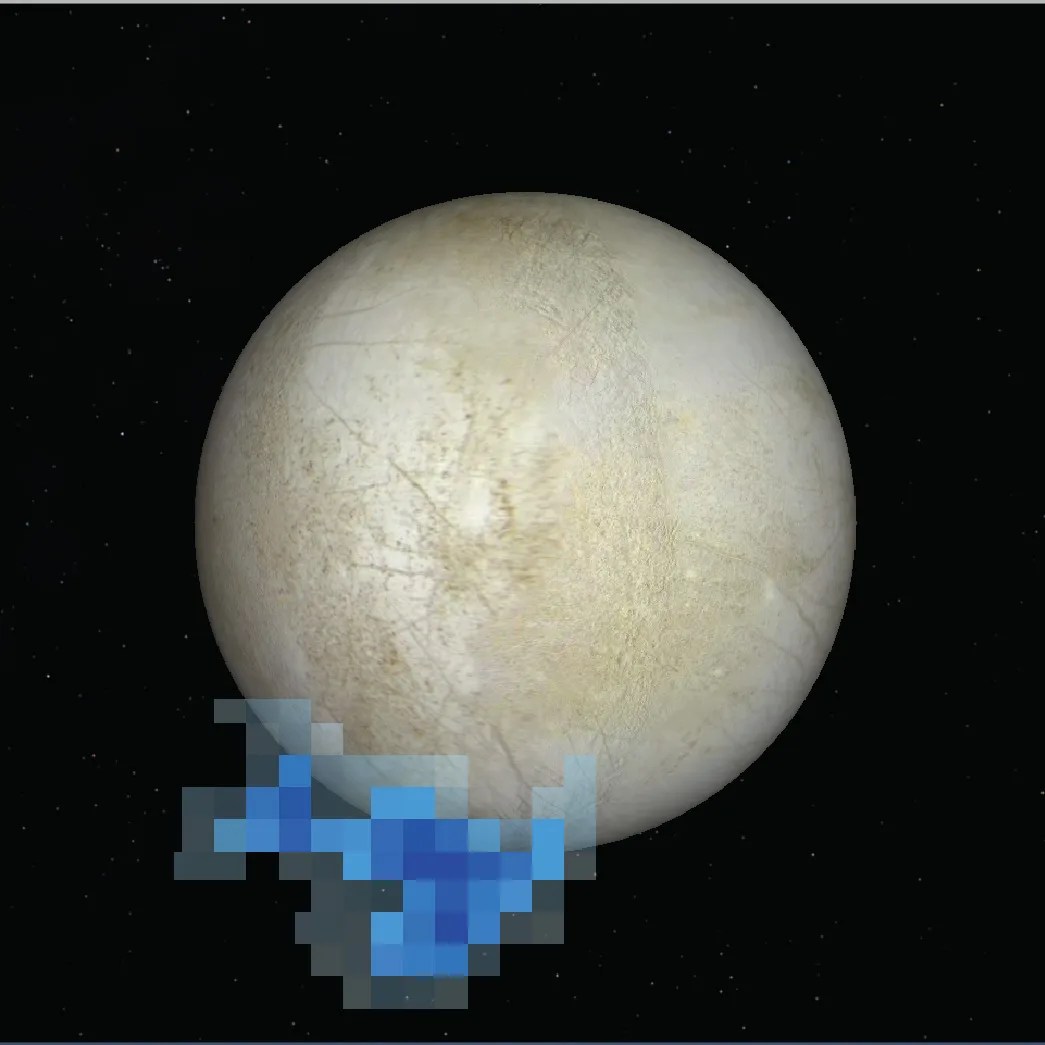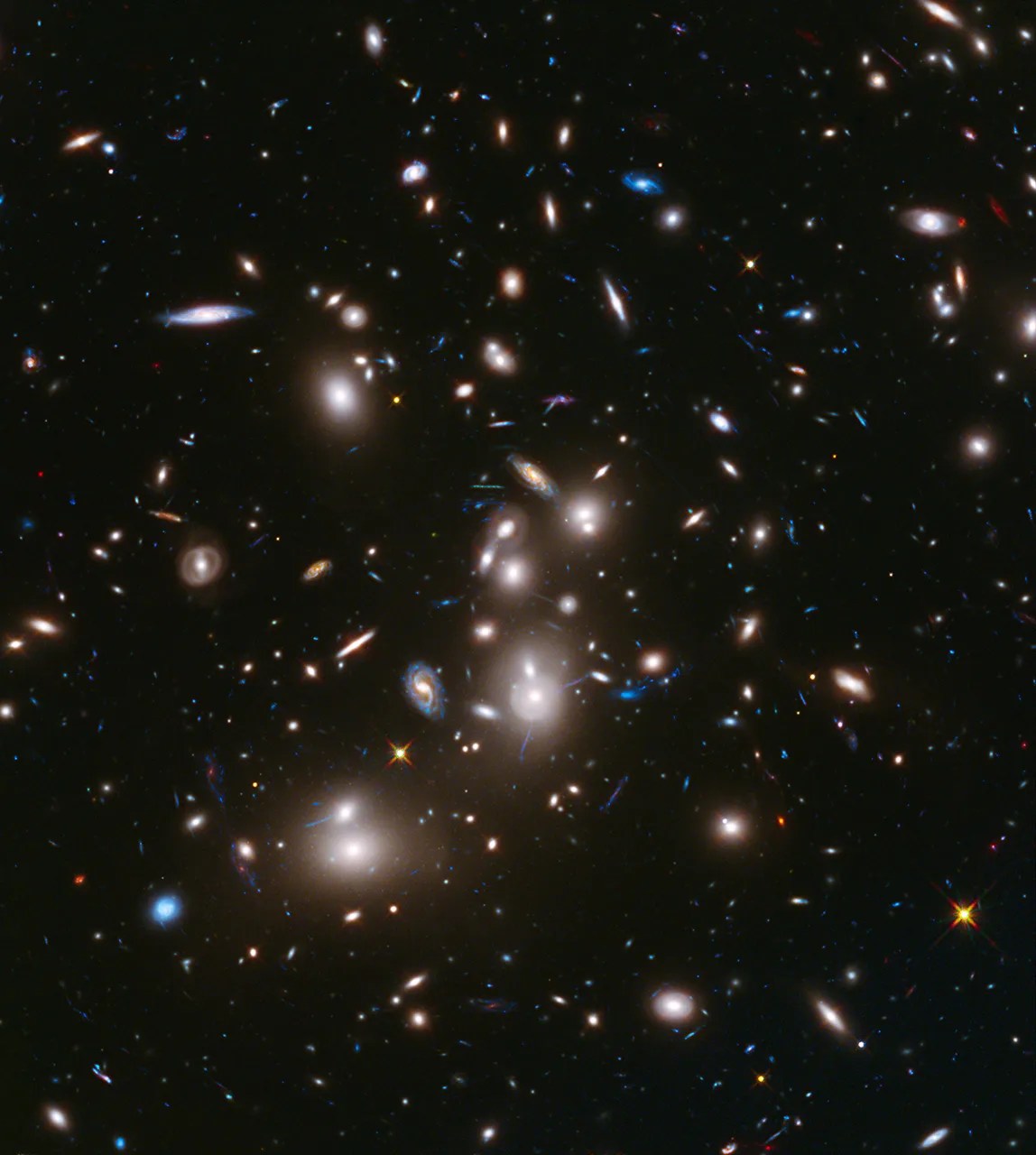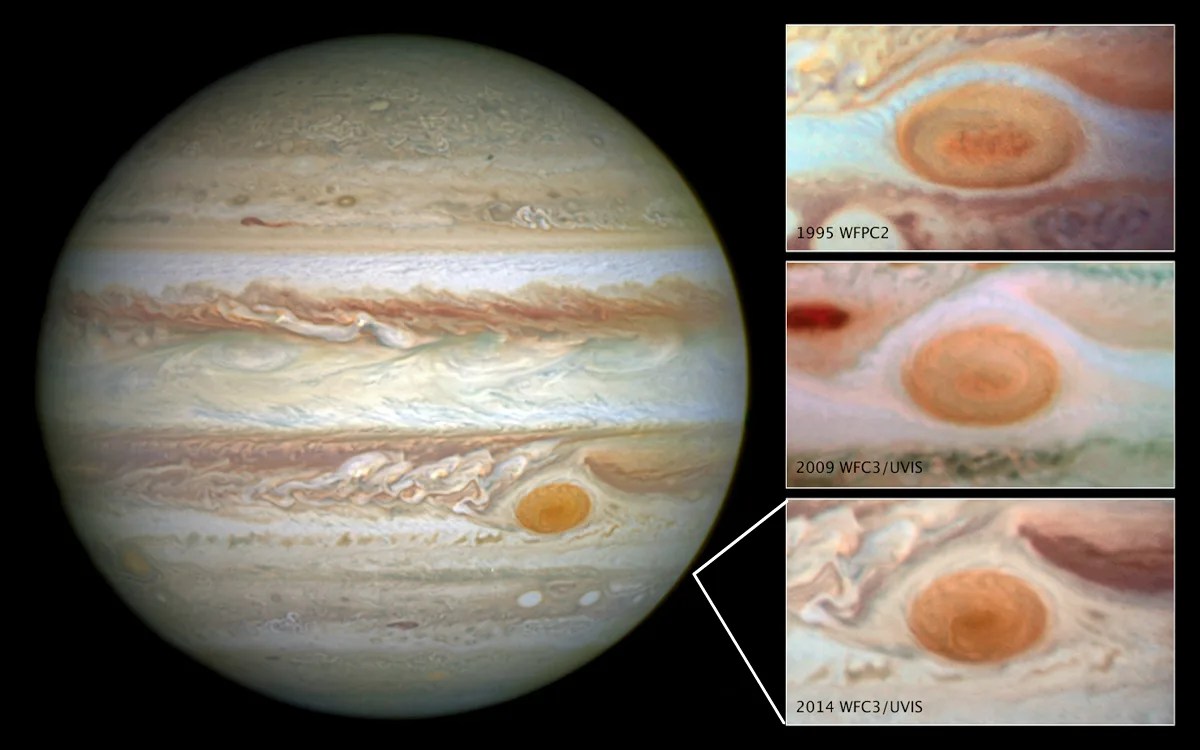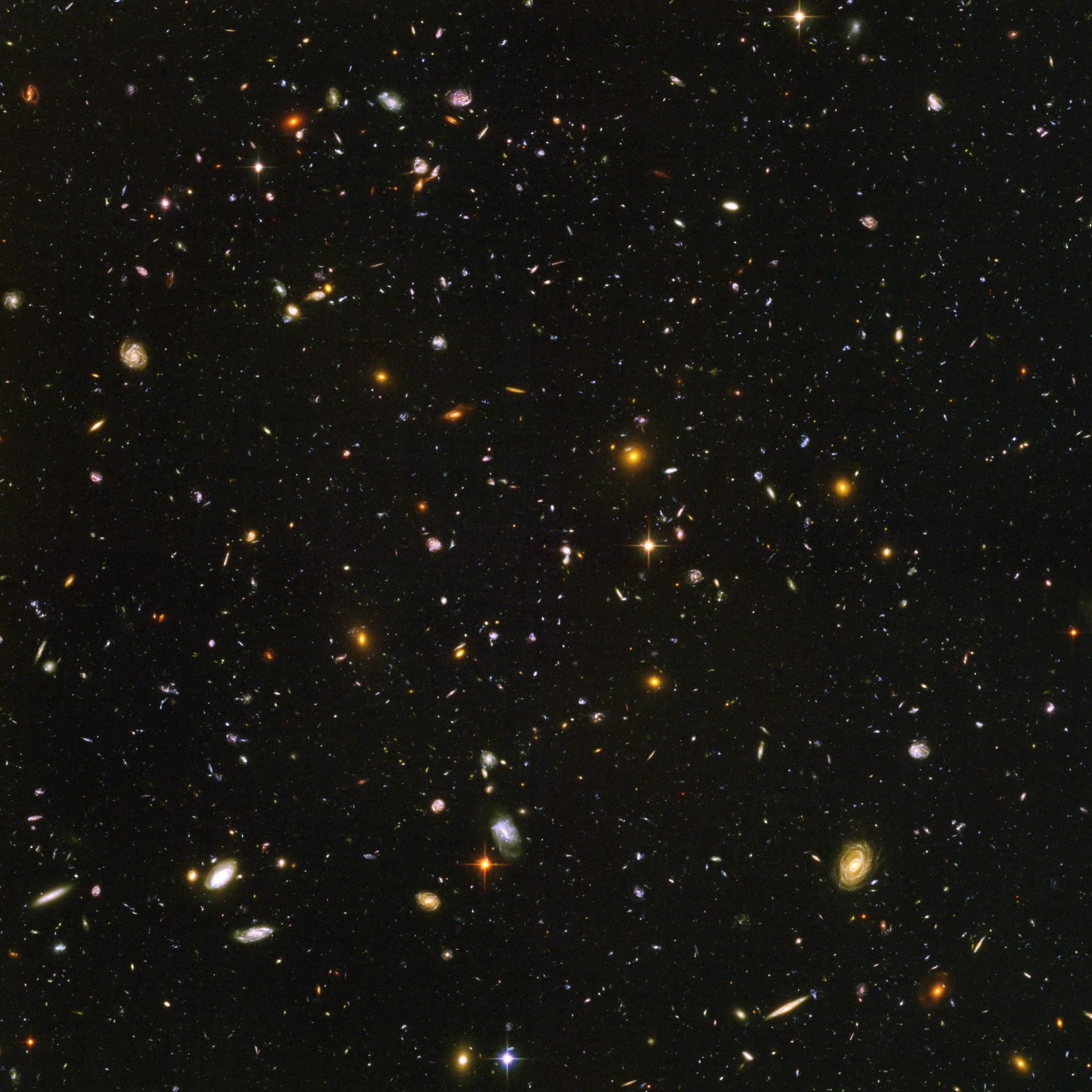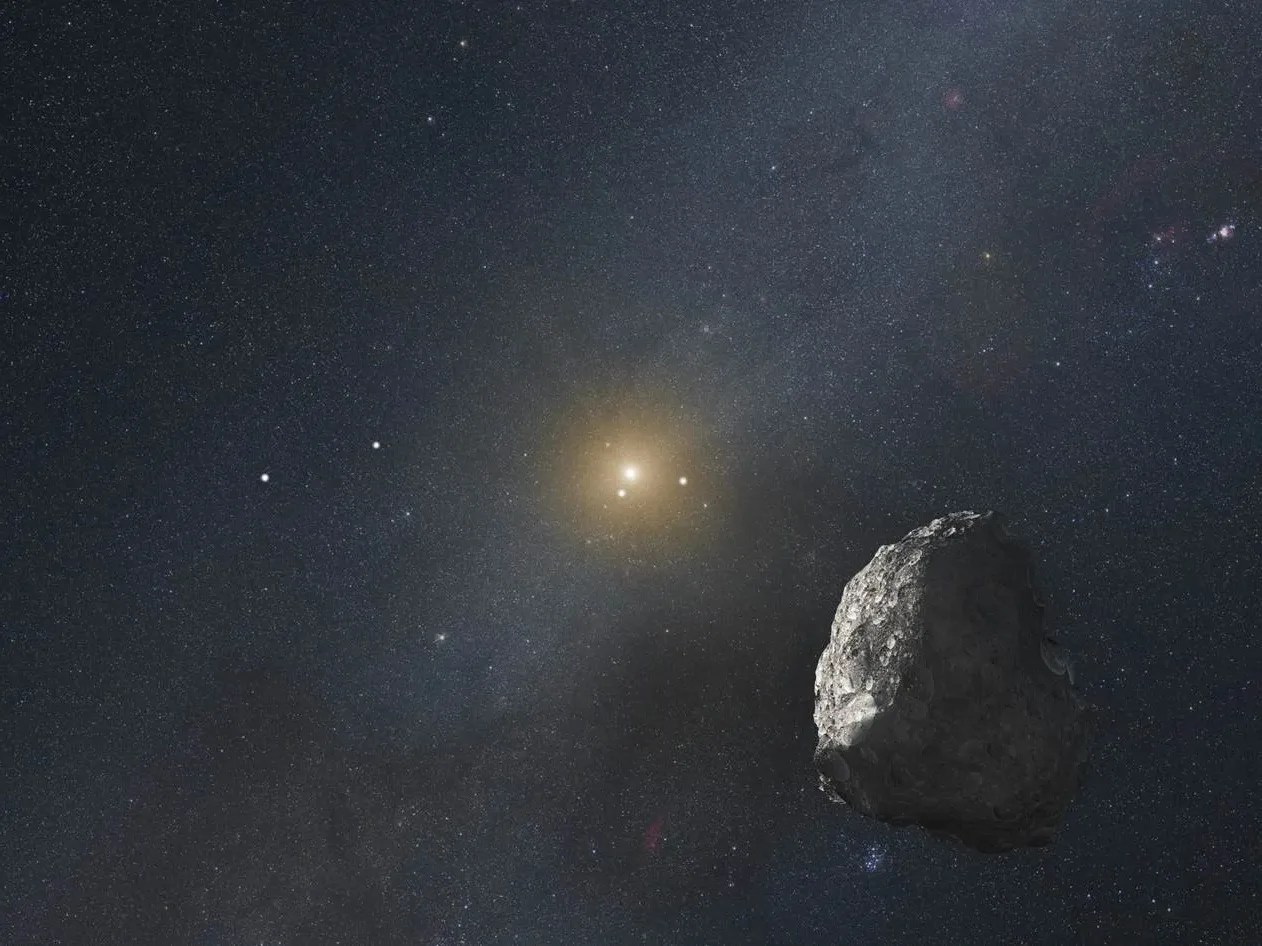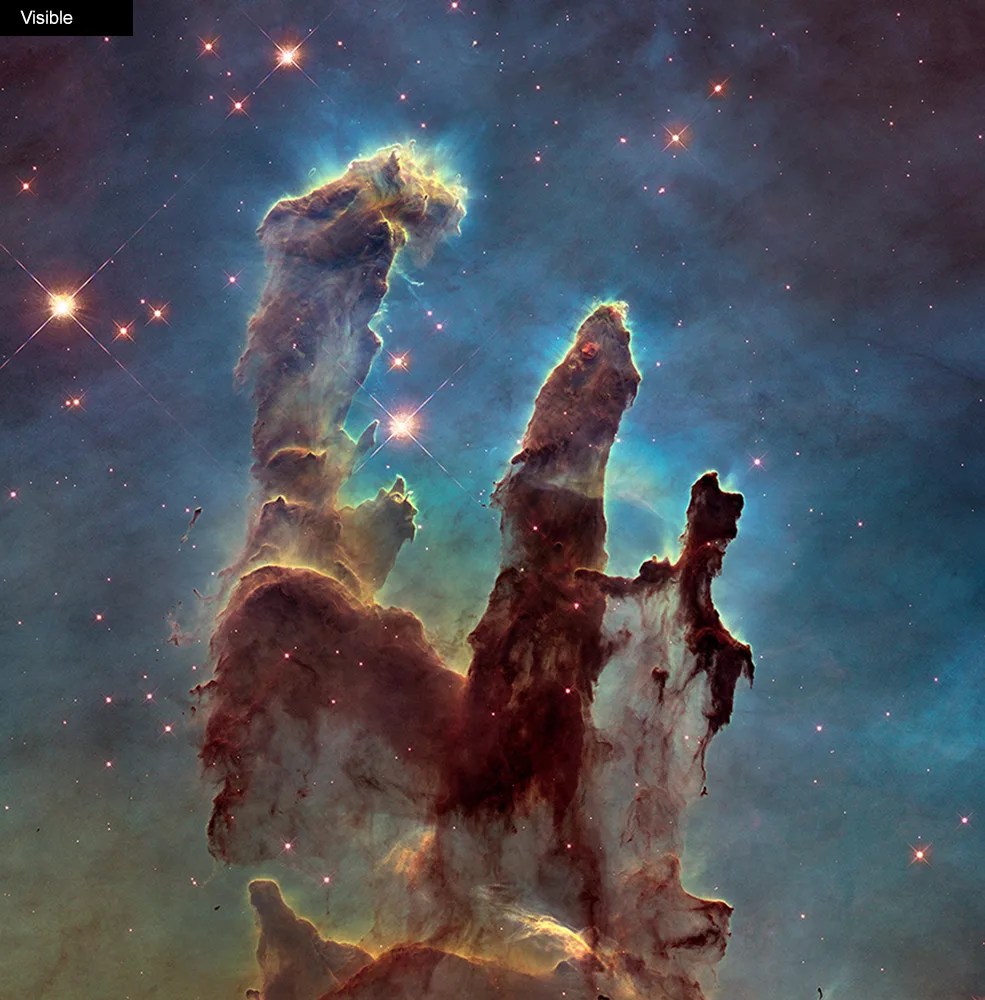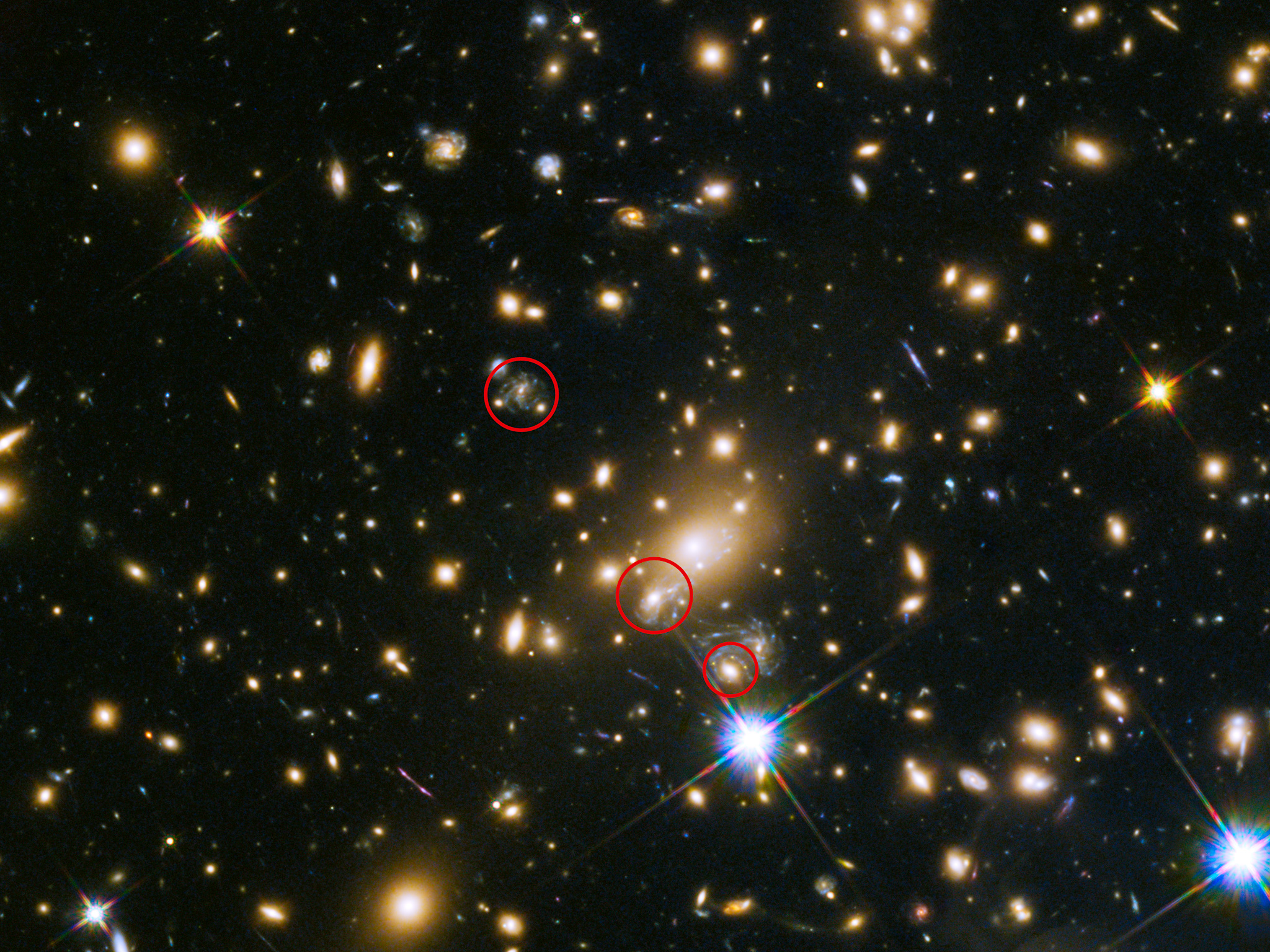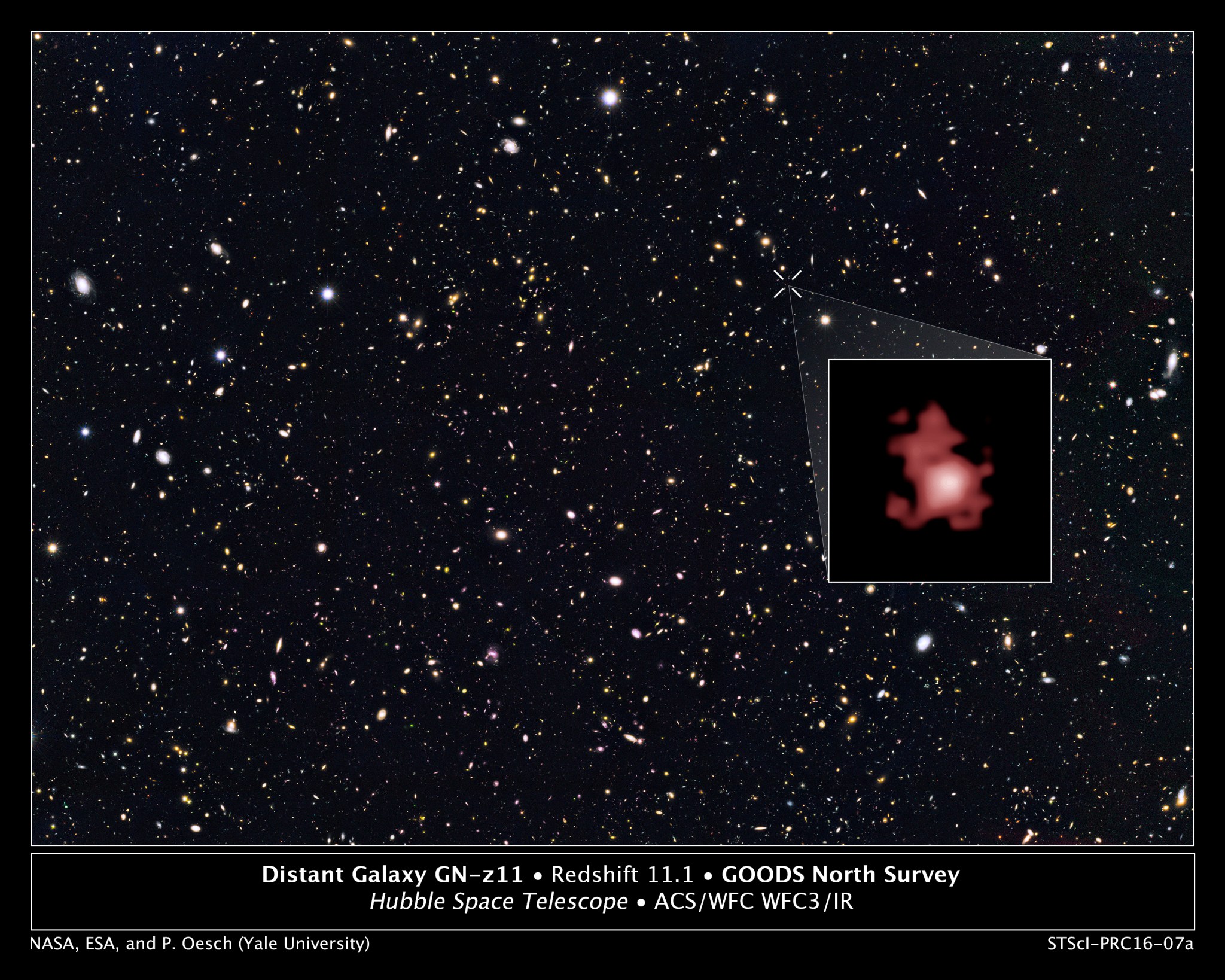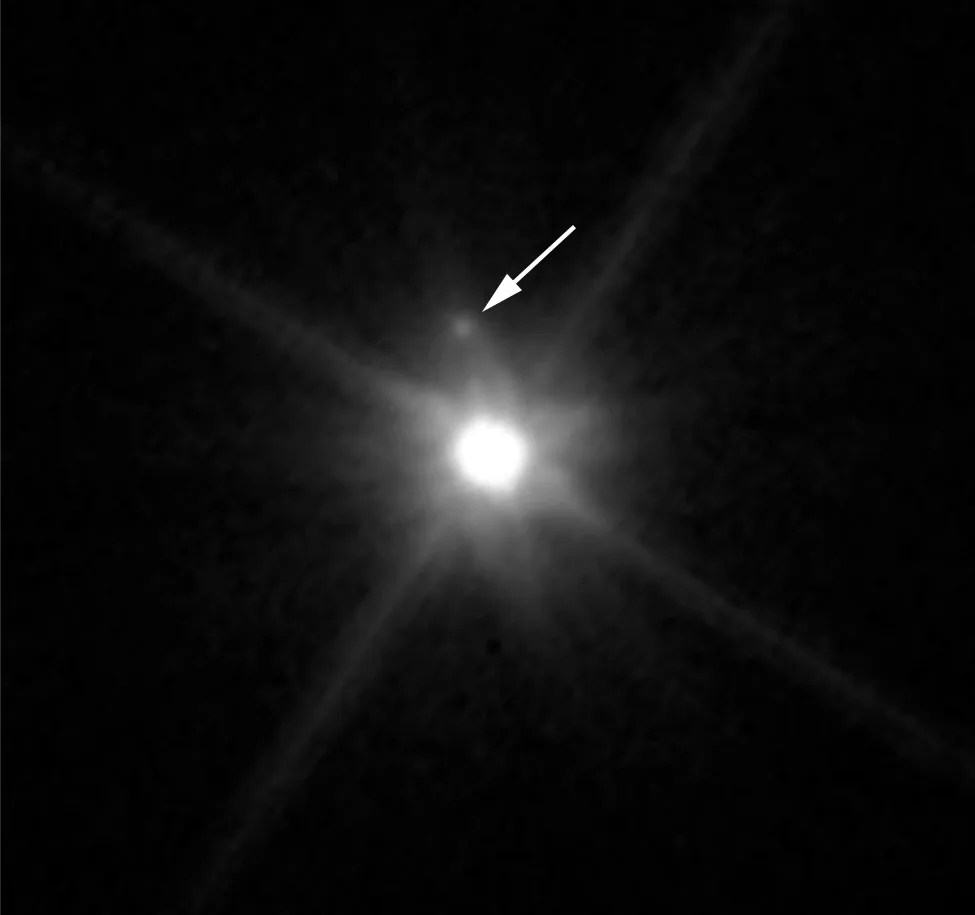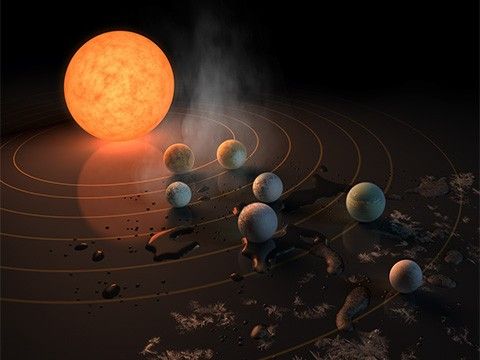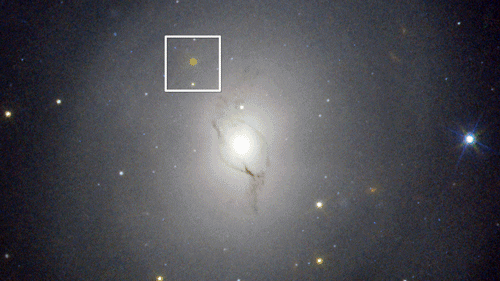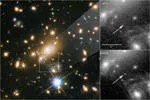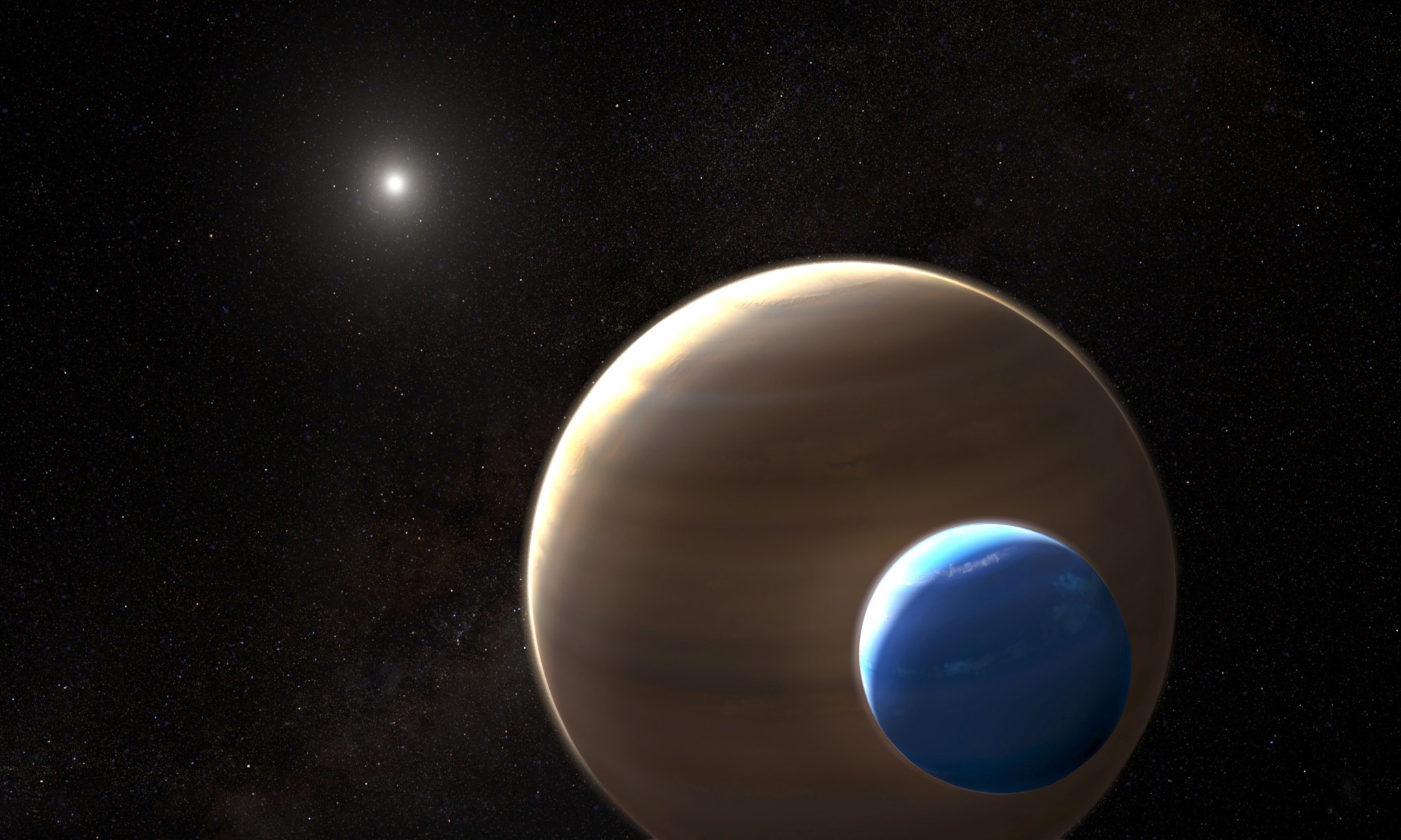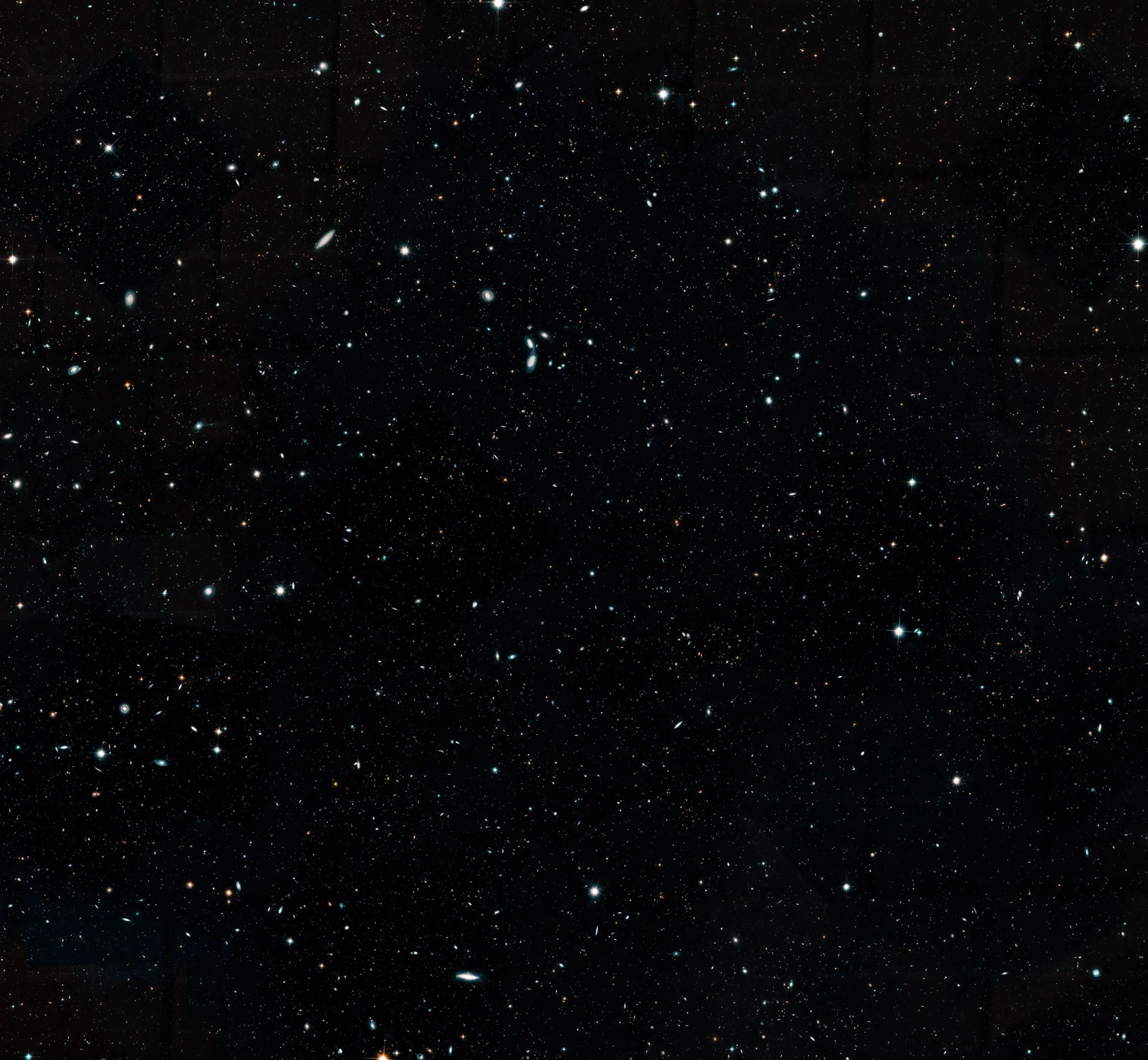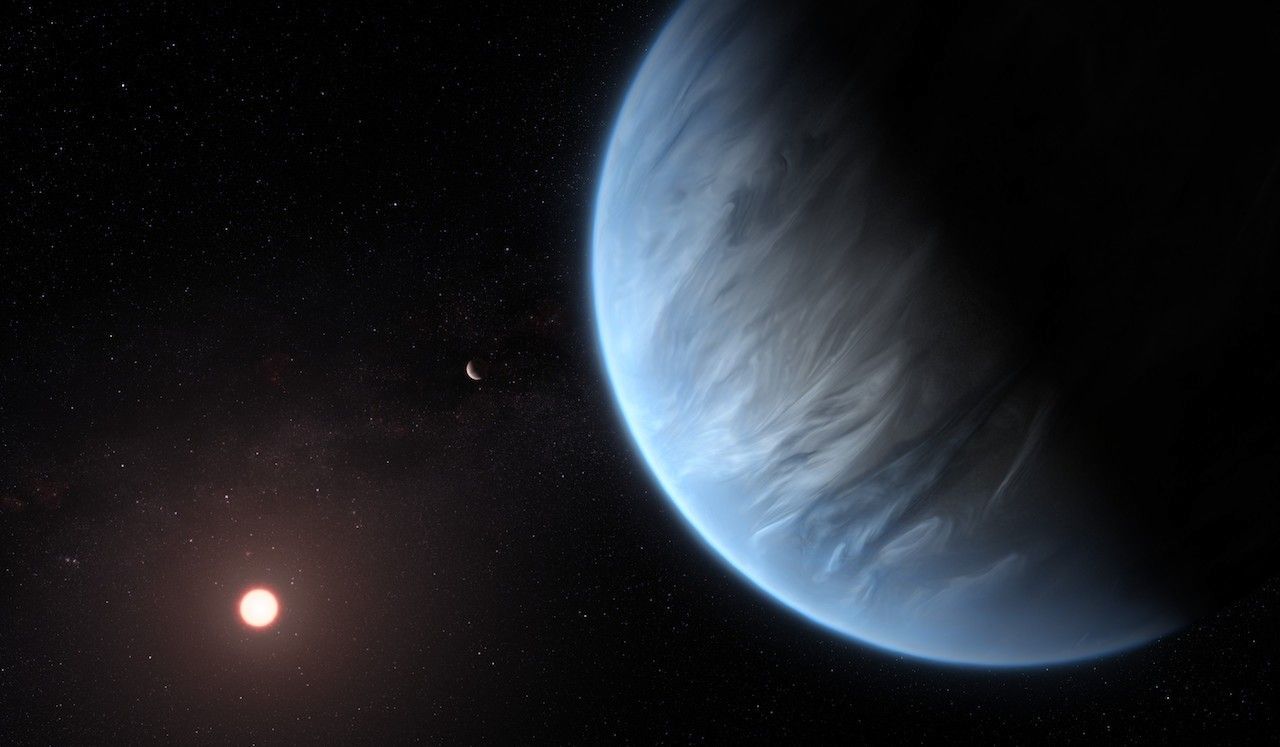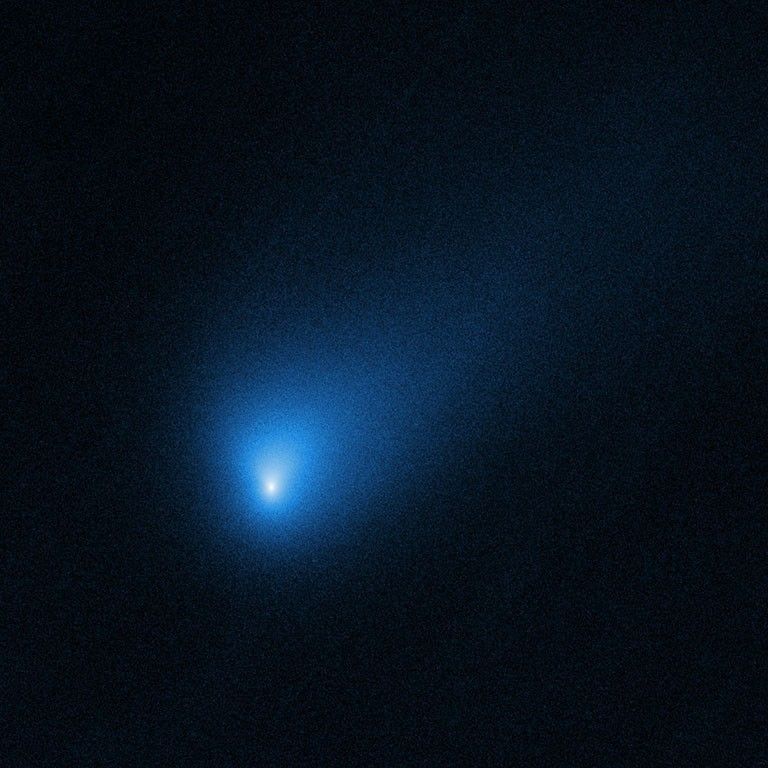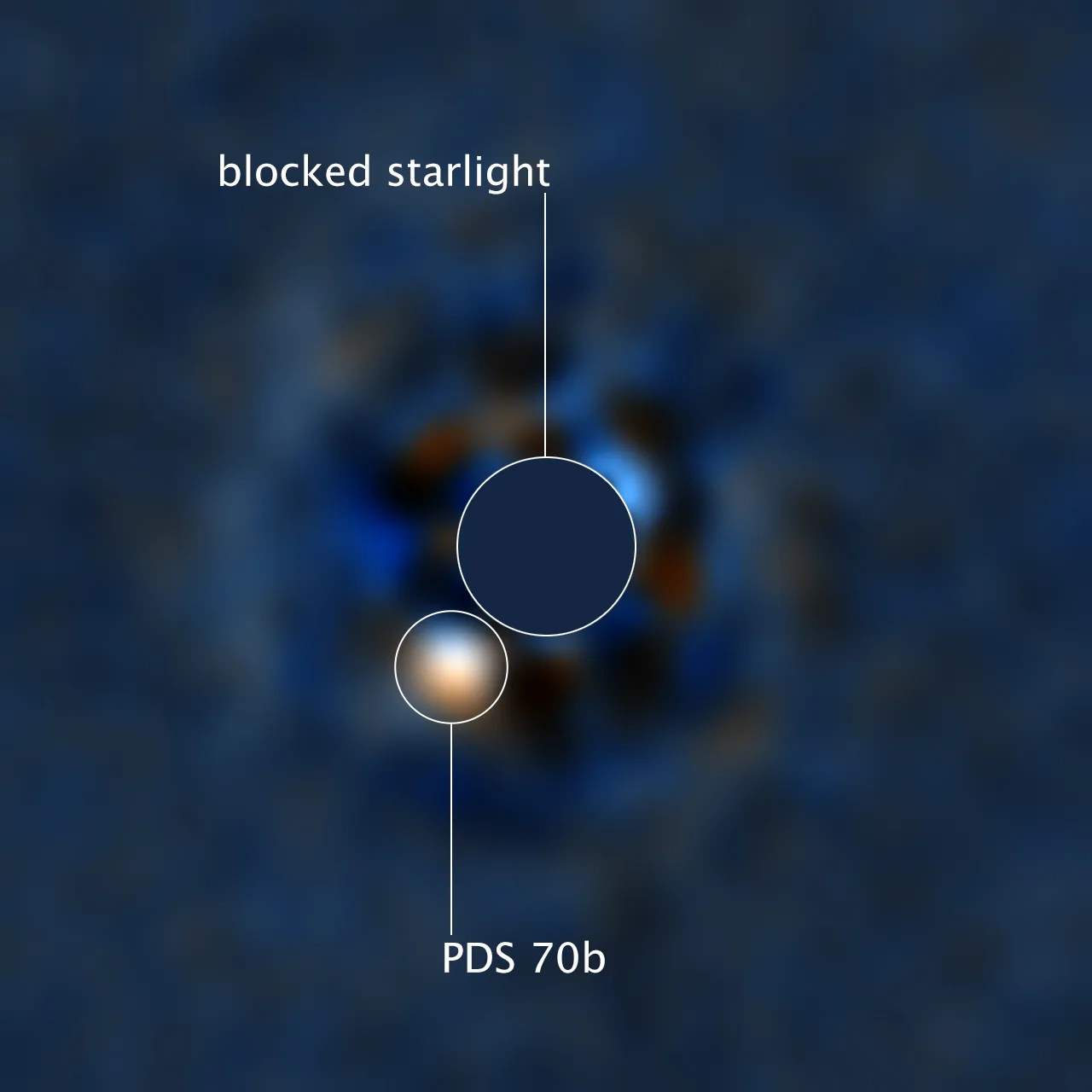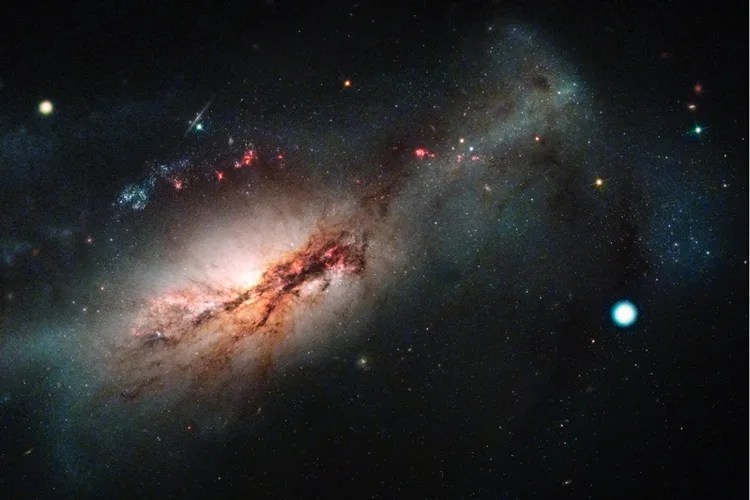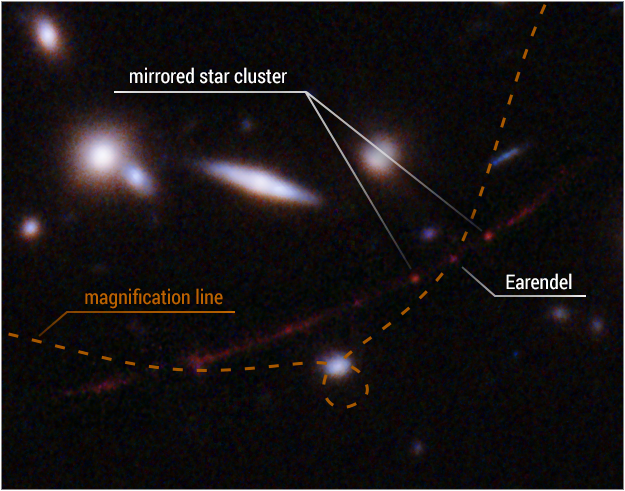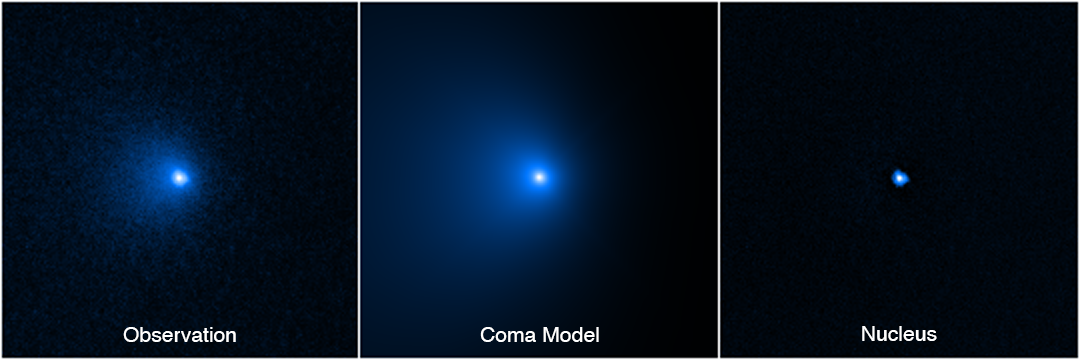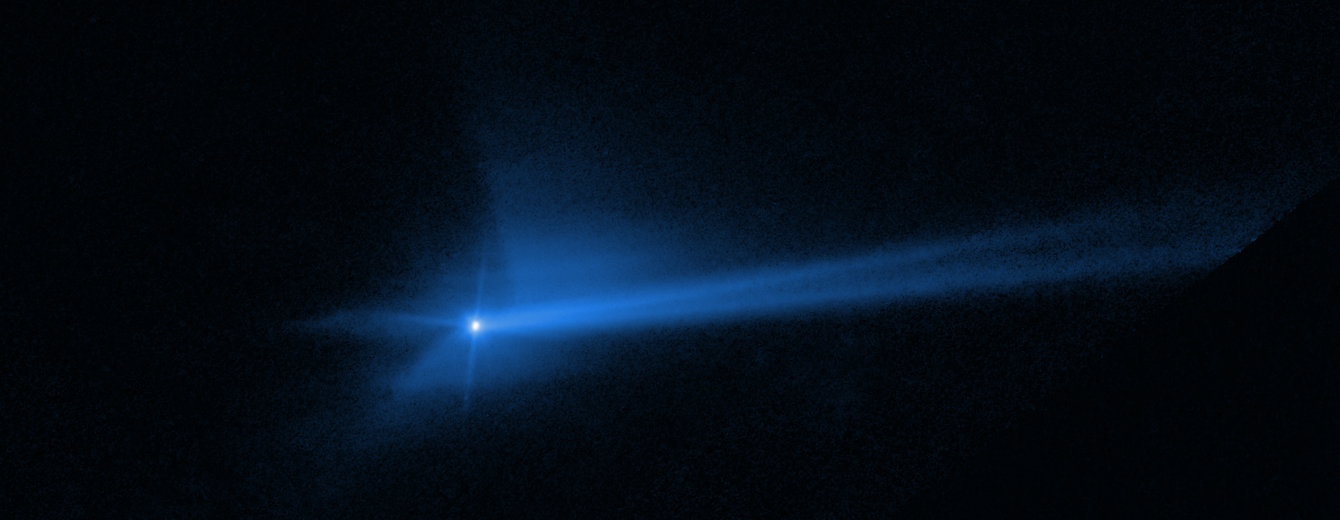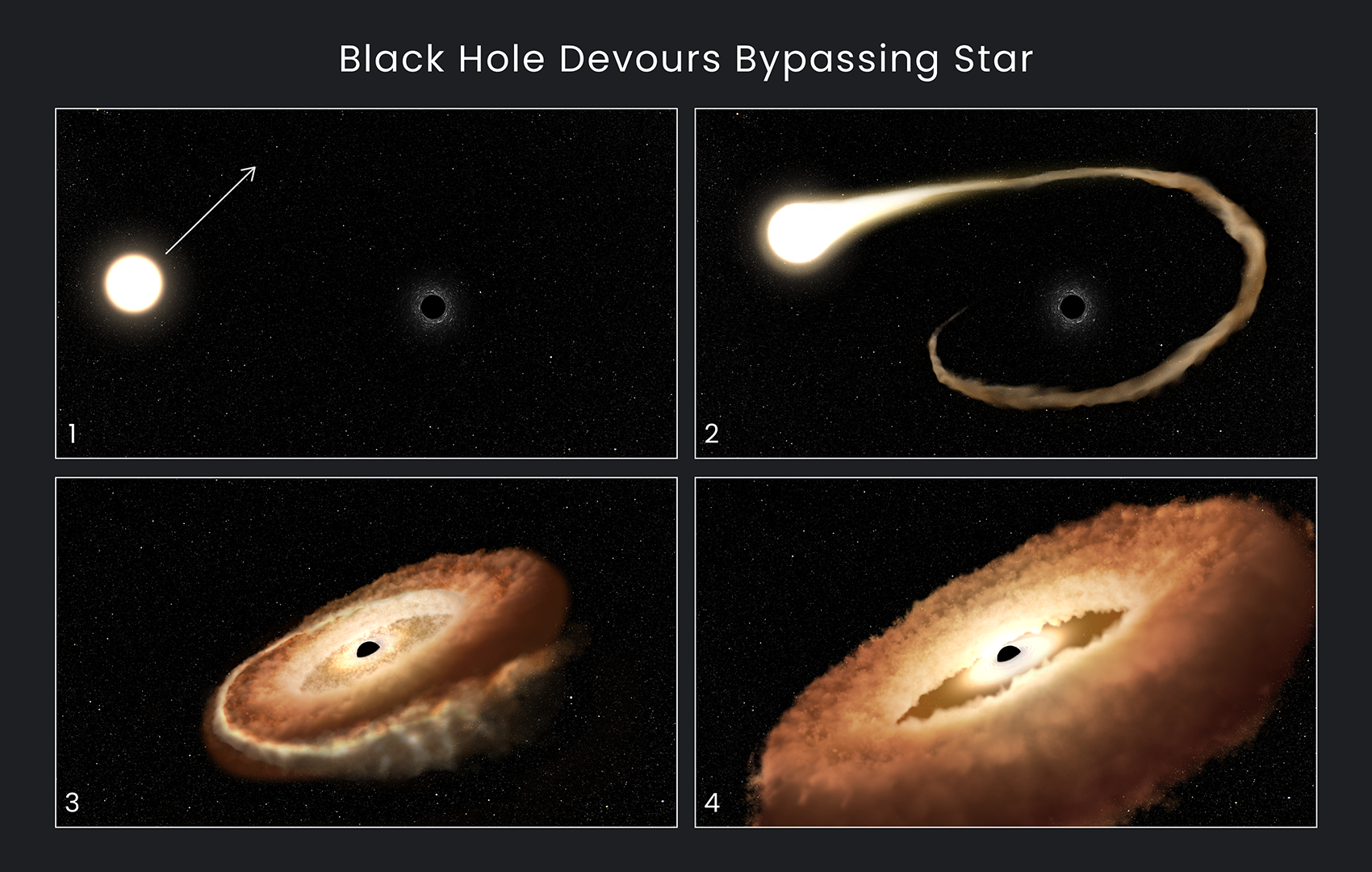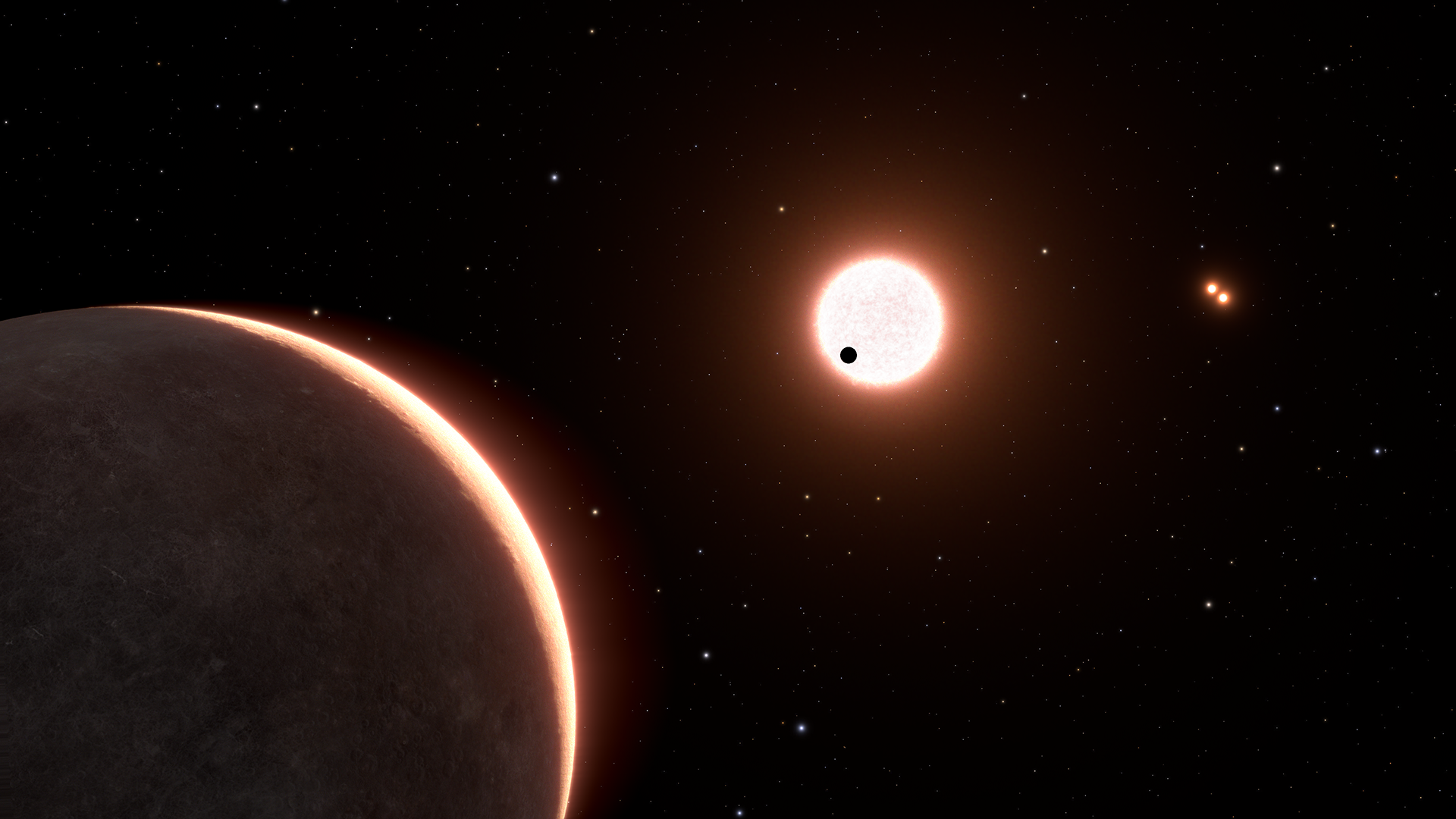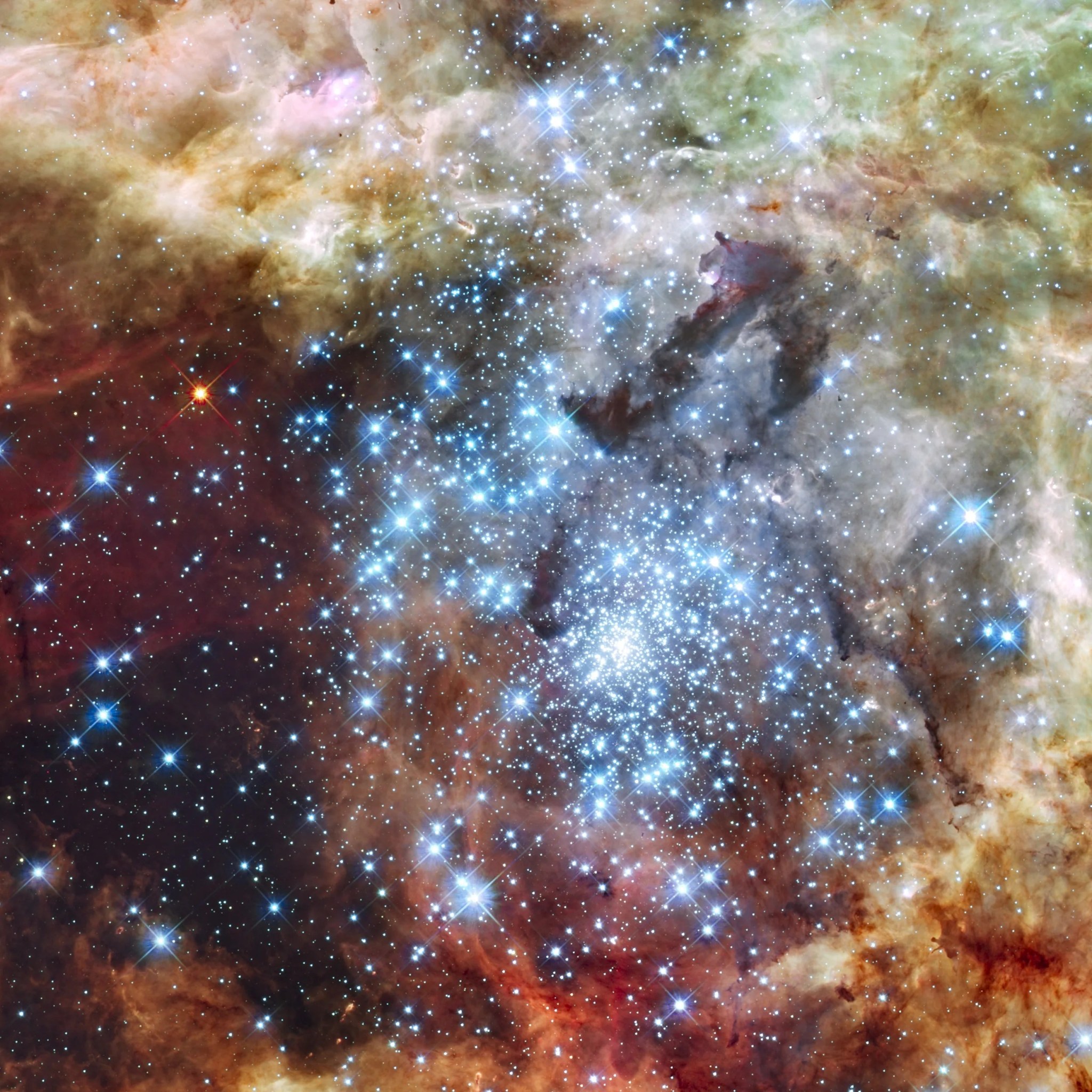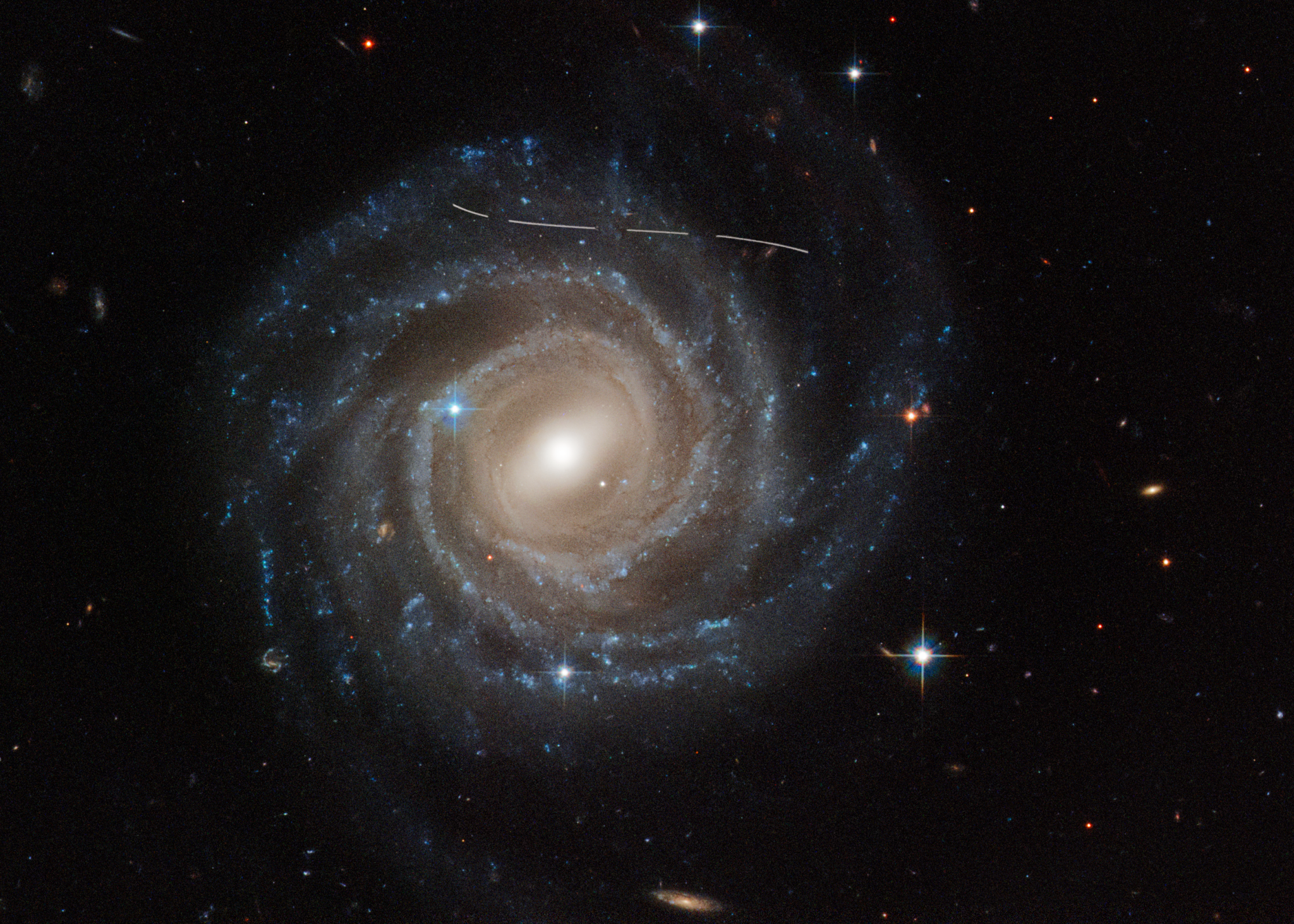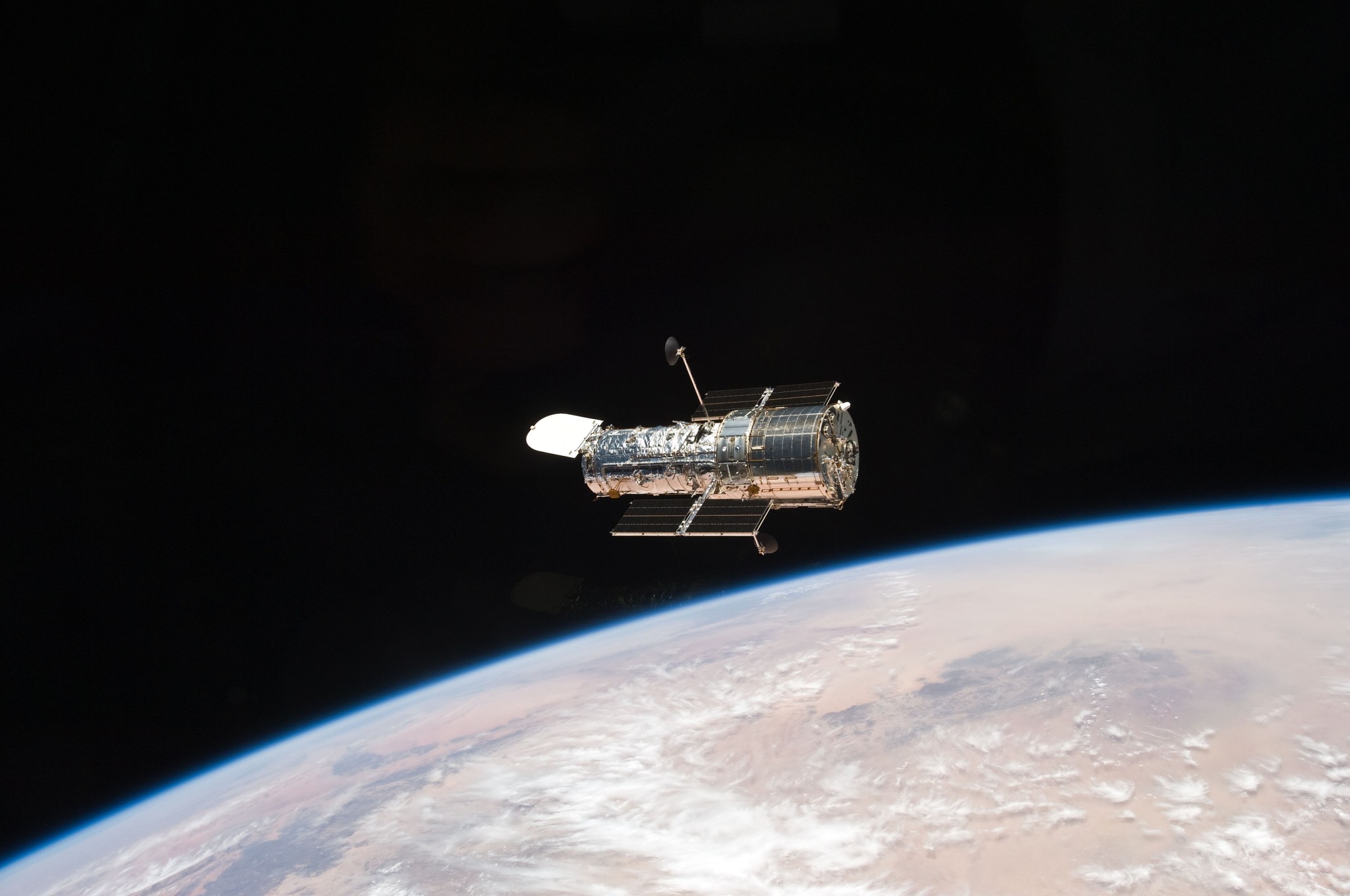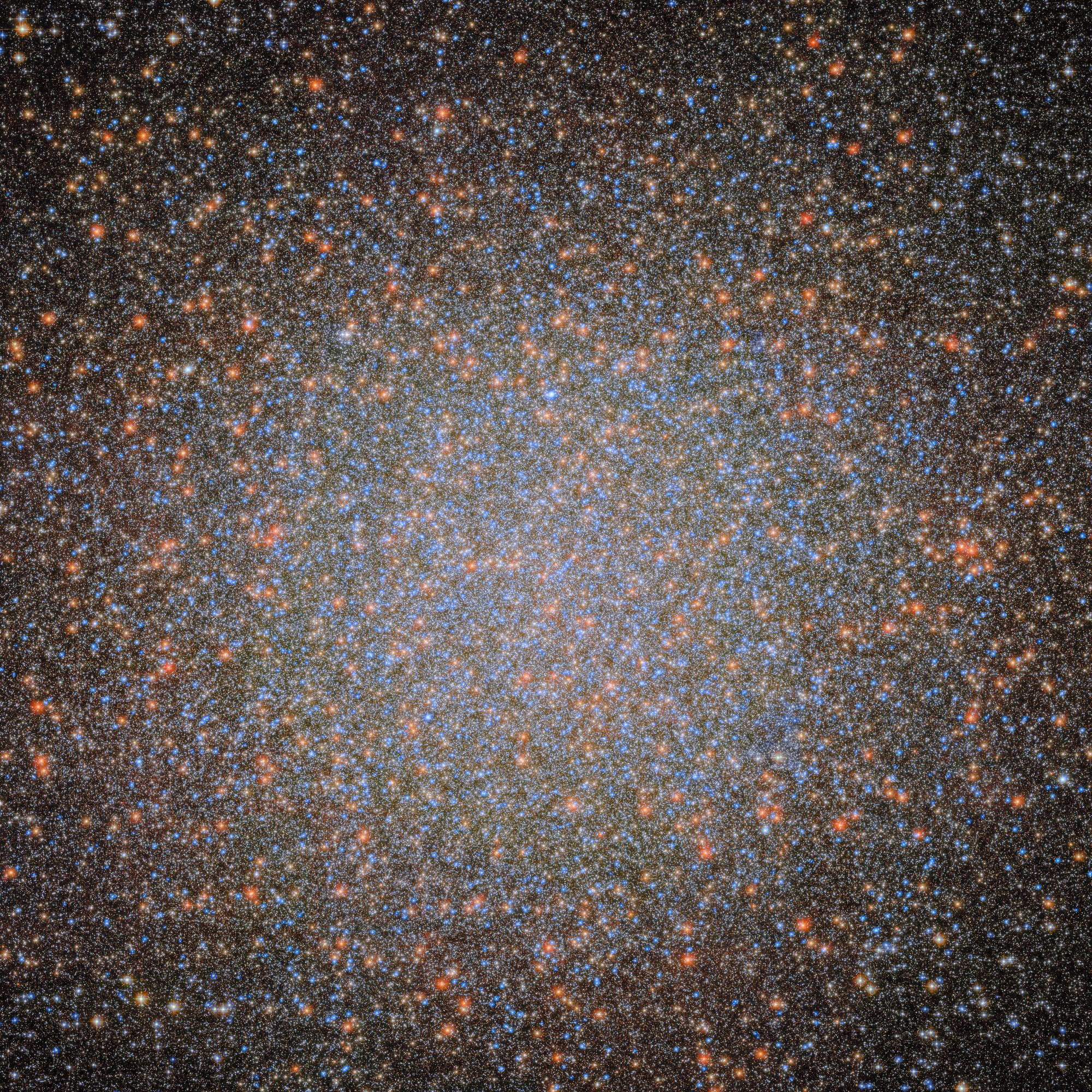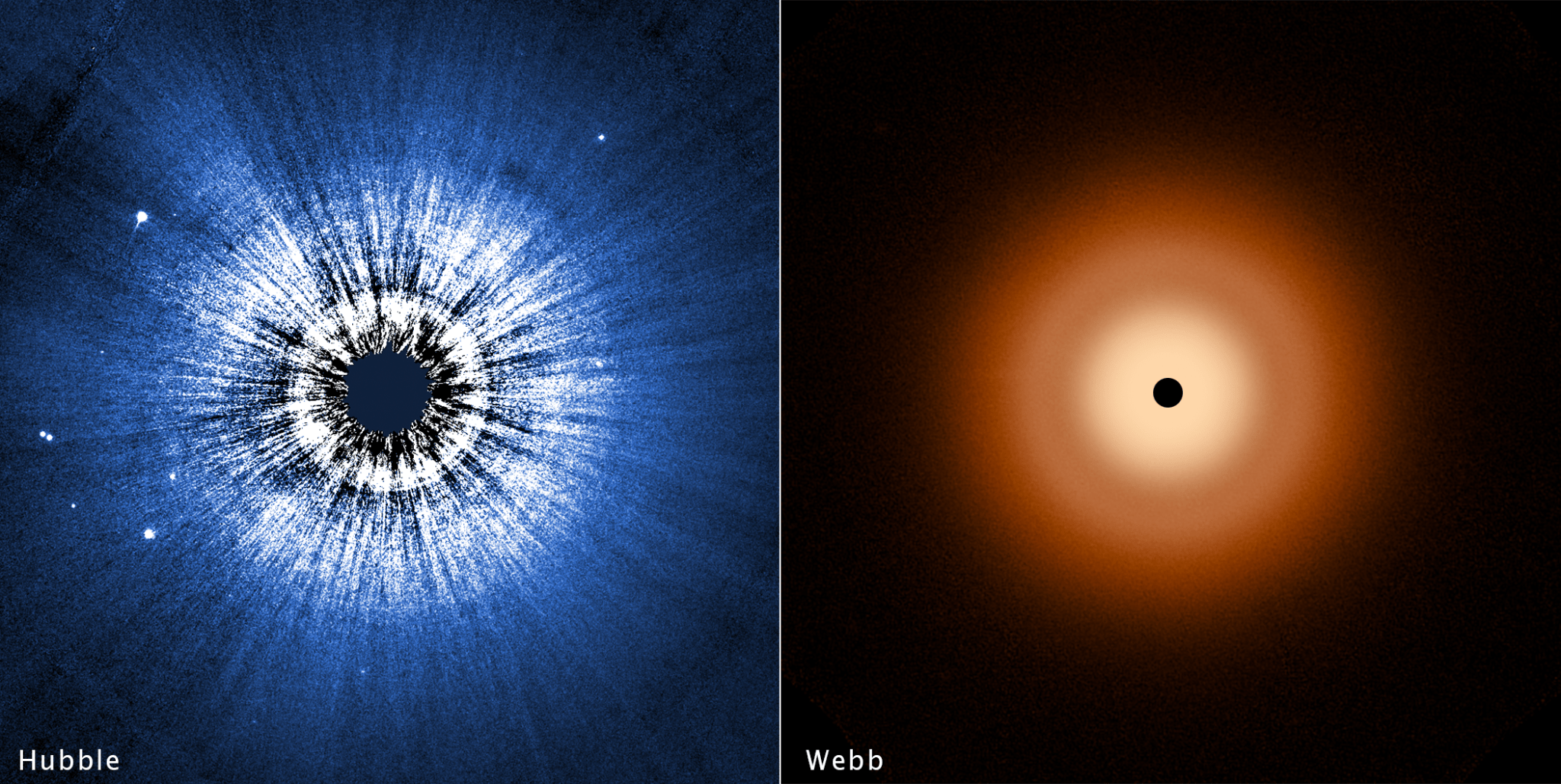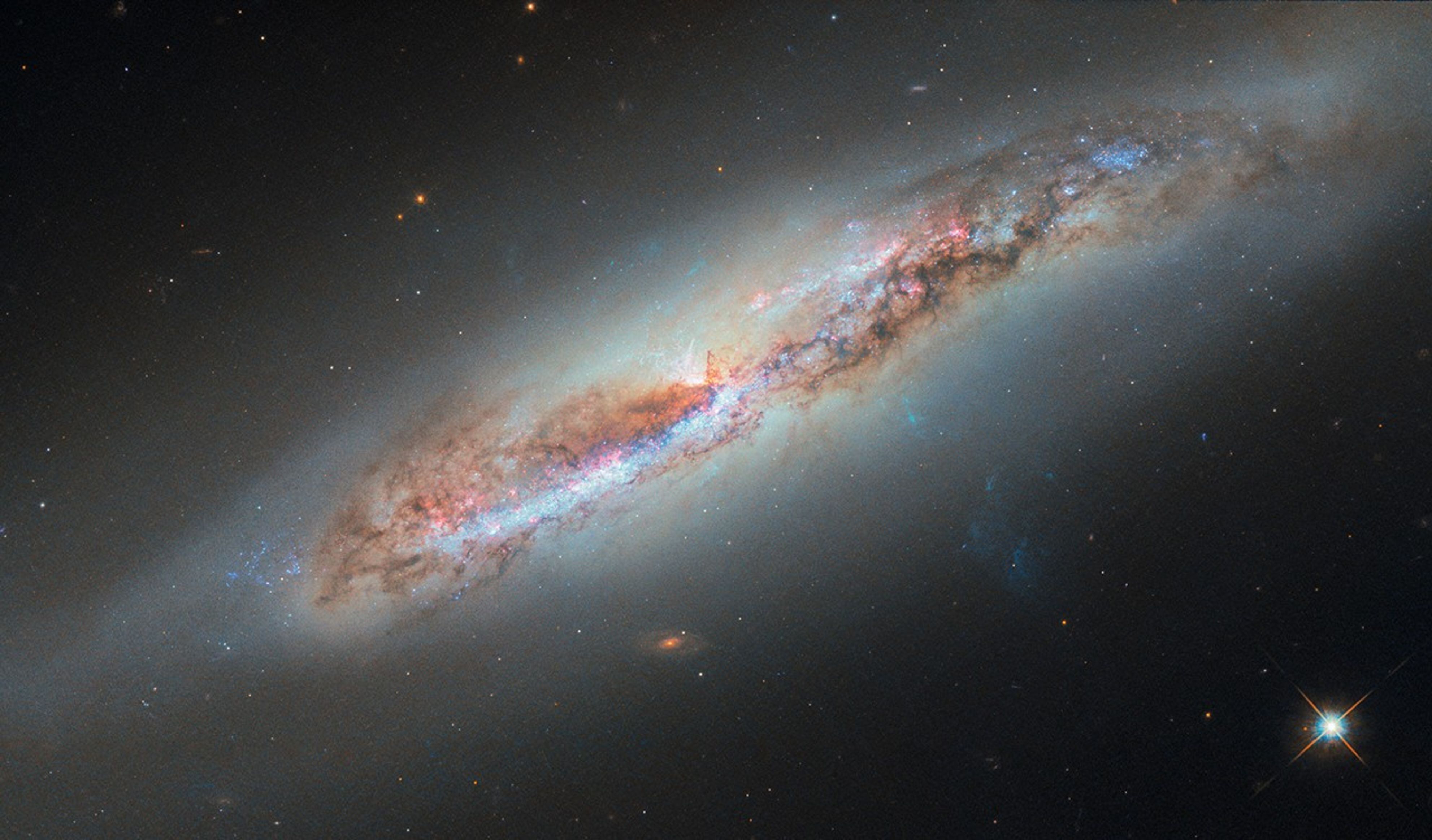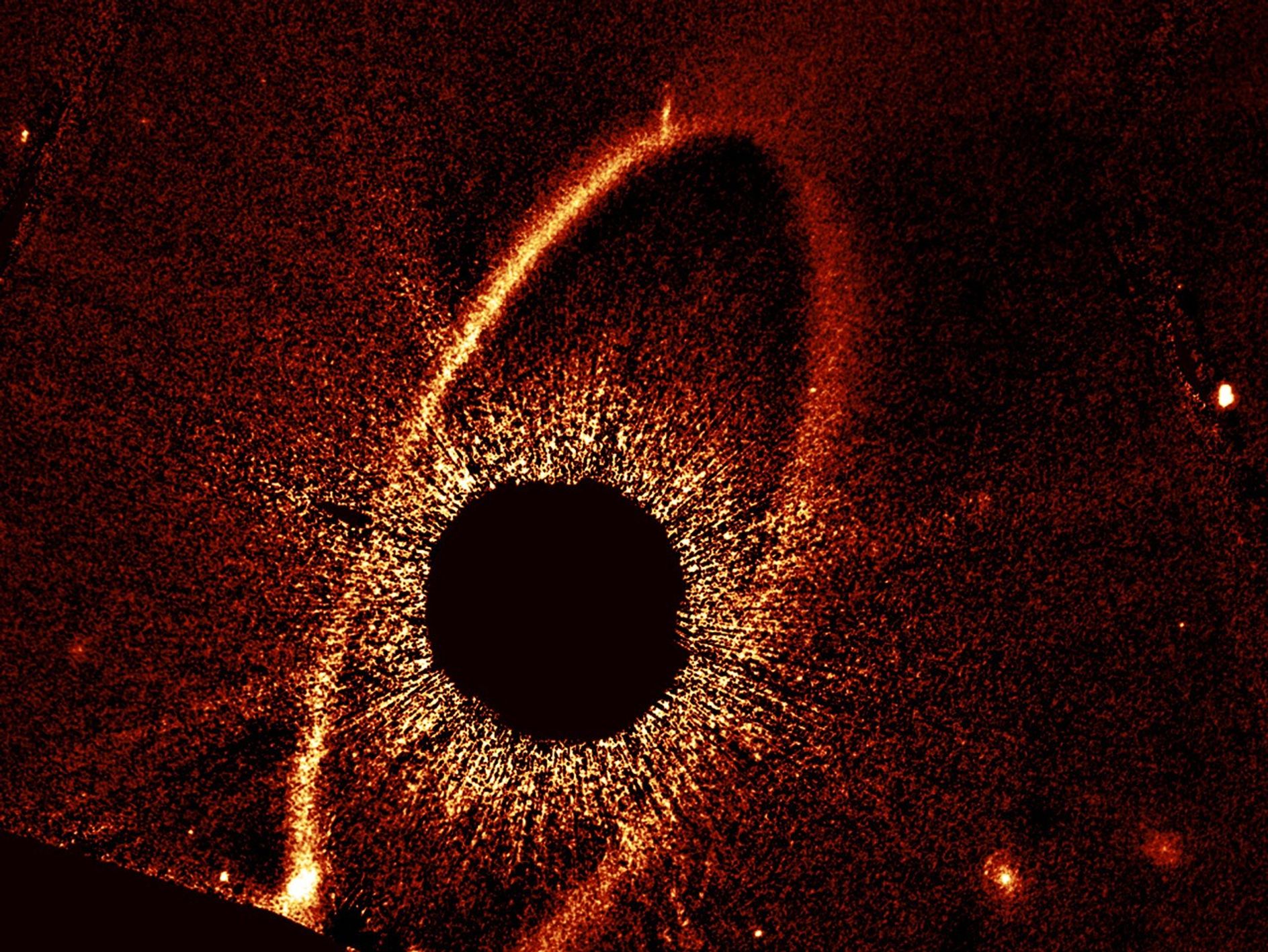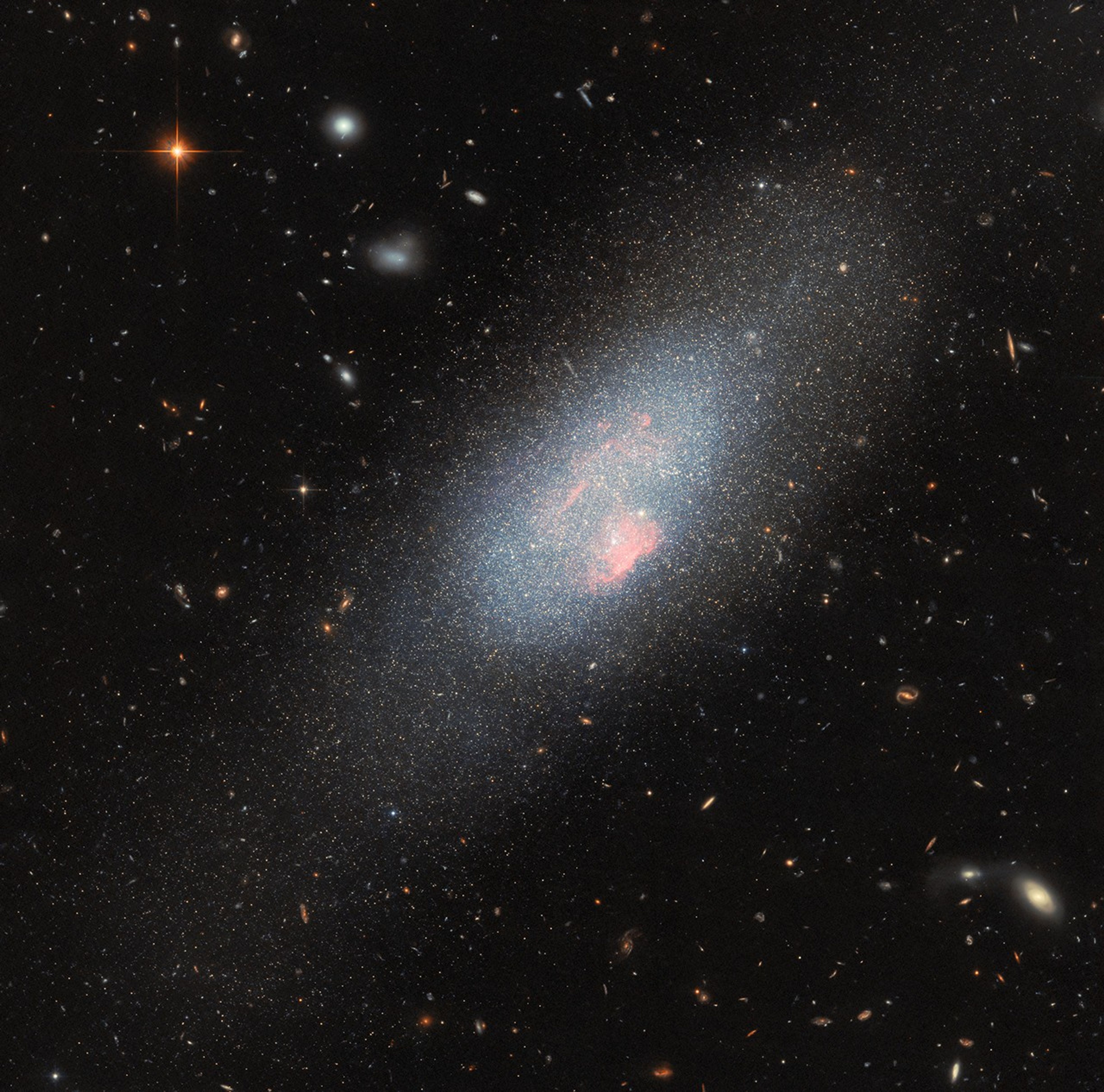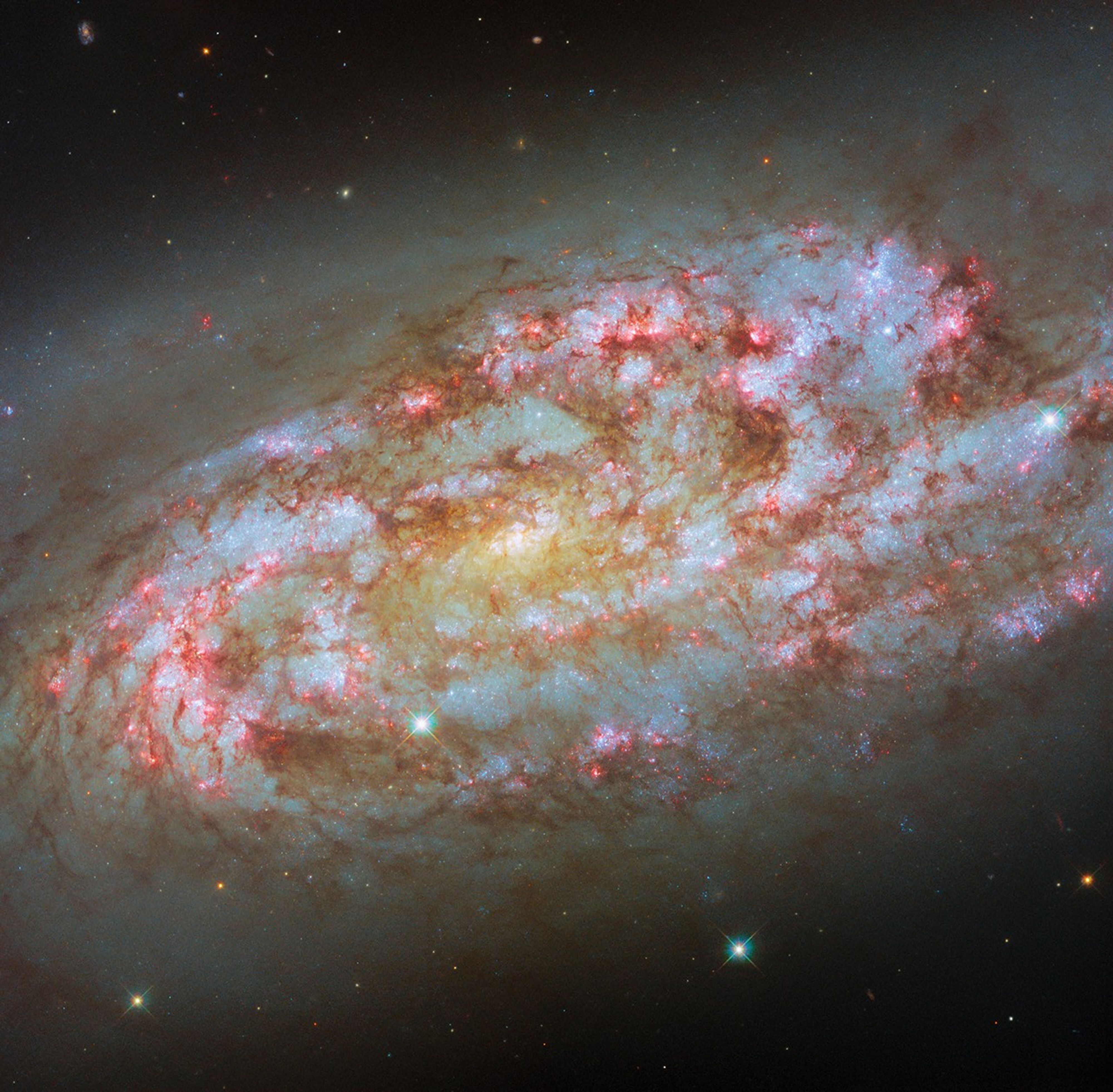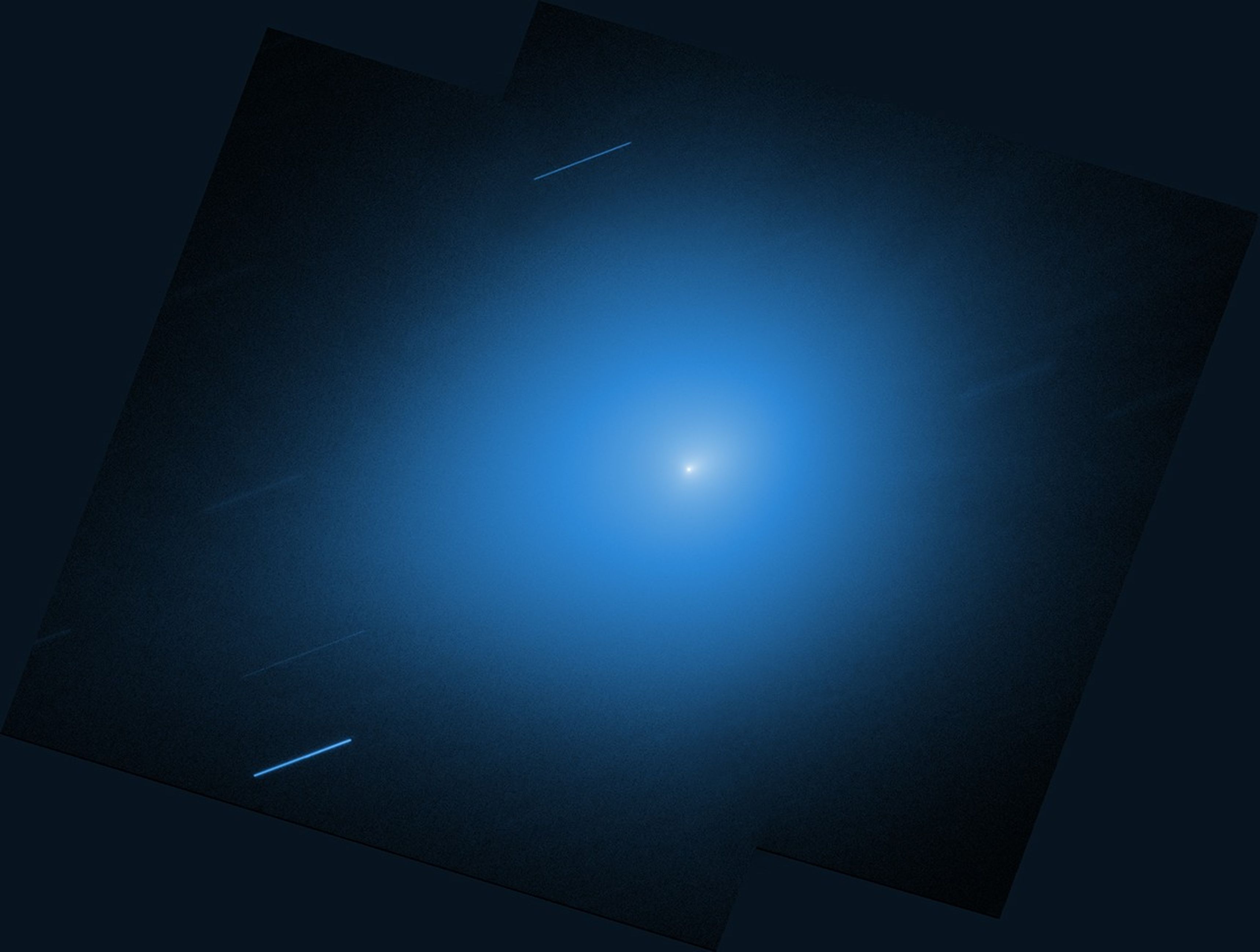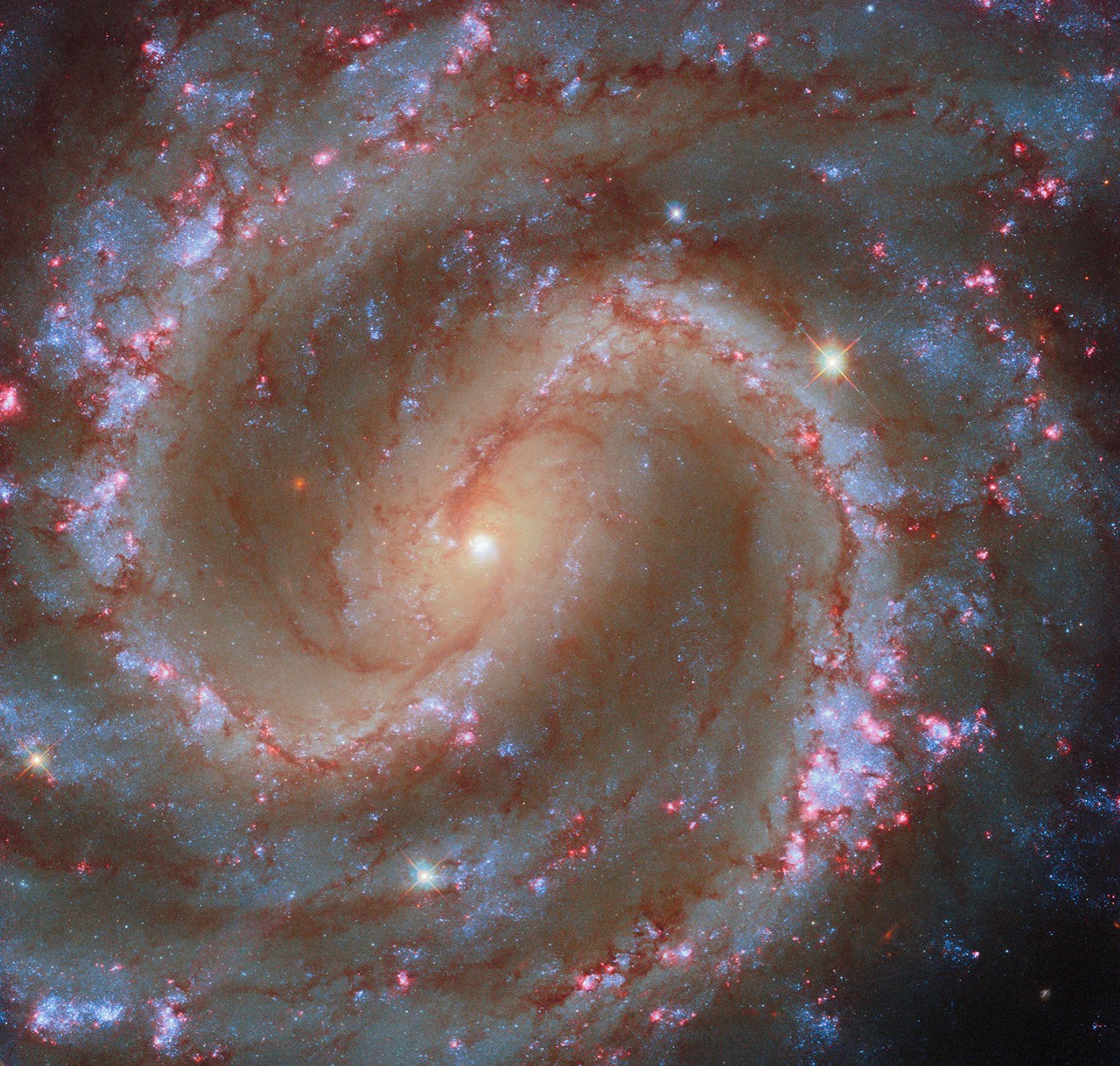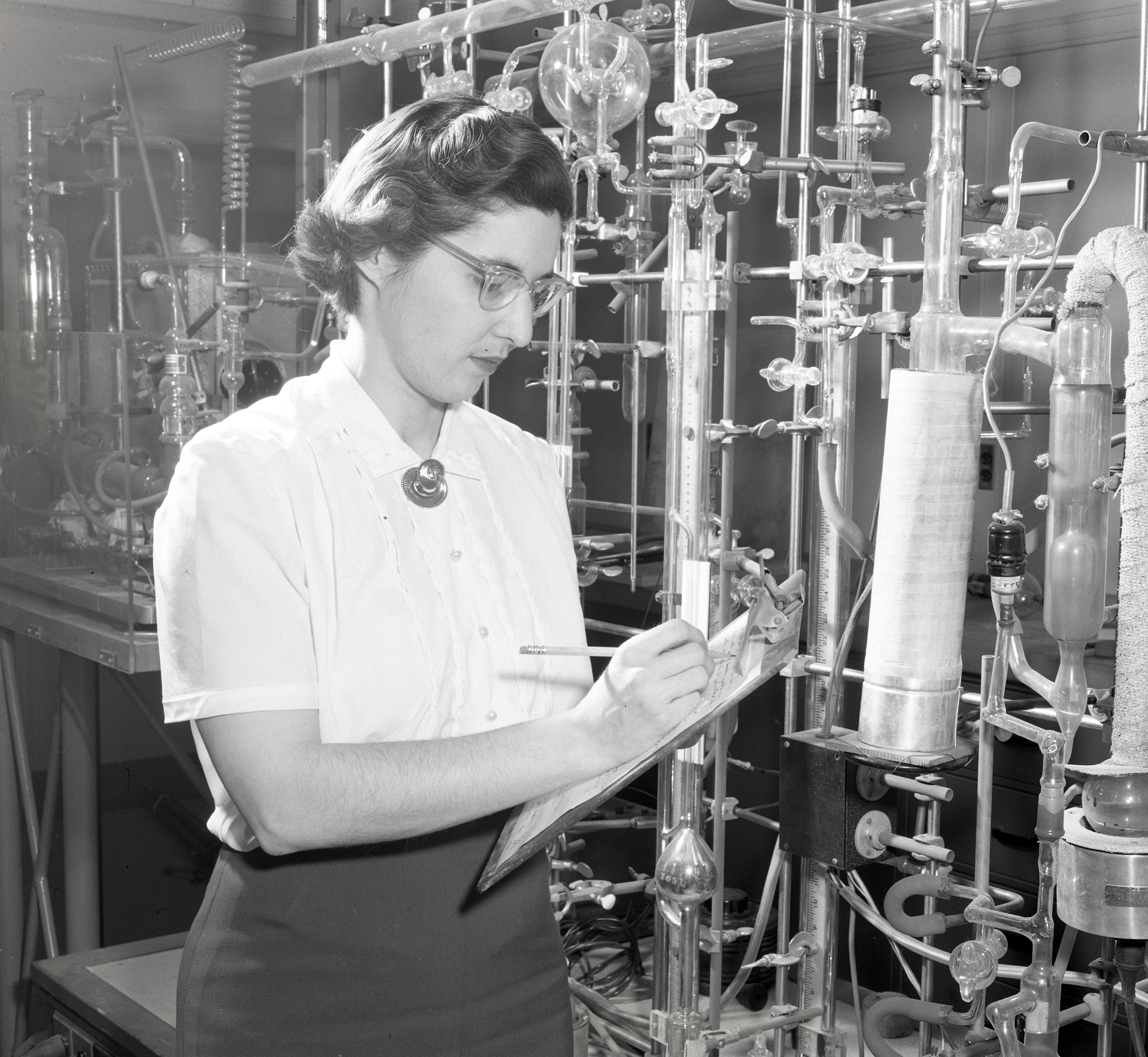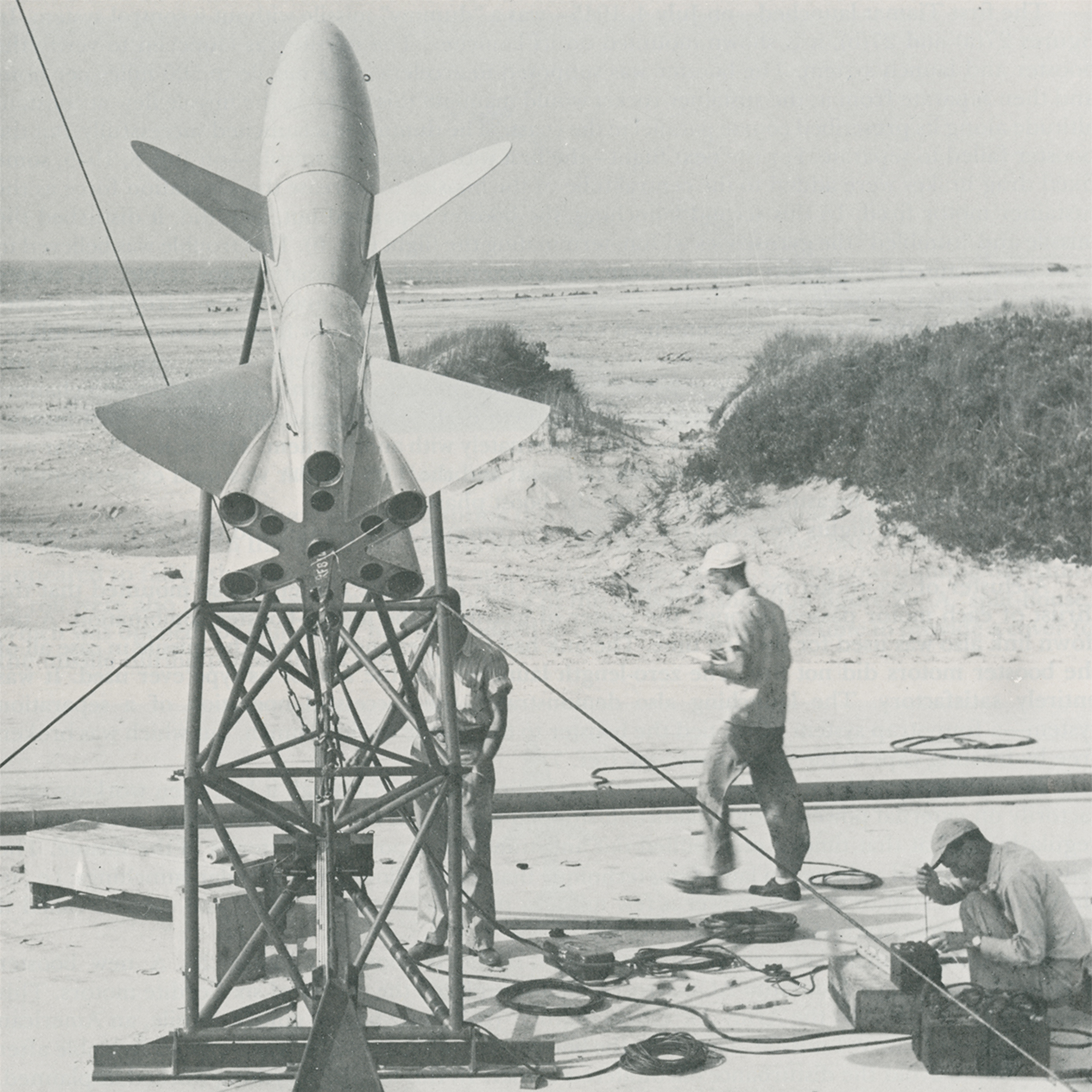First conceived in the 1940s and initially called the Large Space Telescope, the Hubble Space Telescope took decades of planning and research before it launched on April 24, 1990. Since launch, Hubble has overcome its troubled beginnings to perform innumerable science observations that have revolutionized humanity’s understanding of the universe. From determining the age of the universe to observing dramatic changes on celestial bodies in our own solar system, Hubble has become one of humanity’s greatest scientific instruments.
This timeline describes Hubble’s history from the first proposal of a space telescope by Lyman Spitzer in 1946, through the completion of Hubble’s five servicing missions in the 1990s and 2000s, and to many of the significant observations and discoveries Hubble has made during its years in orbit.
Pre-Launch
1946 – First paper about space telescopes published
In 1946, Yale University astrophysicist Lyman Spitzer, Jr., published a paper about the advantages of astronomy from space and introduced the idea of a large space telescope. At the time, no satellite had yet been launched into orbit.
- Spitzer's Paper: Astronomical advantages of an extra-terrestrial observatory
October 4, 1957 – Sputnik launched
The Soviet Union successfully launched the first artificial satellite, Sputnik 1. Sputnik was about the size of a beach ball, weighed only 193 pounds and took about 98 minutes to orbit Earth once. The launch of Sputnik caused the start of the space race between the United States and Soviet Union. The United States soon followed with the launch of its first satellite, Explorer 1, on January 31, 1958.
October 1, 1958 – NASA created
After the launch of Sputnik 1 by the Soviet Union in 1957, Congress passed the Space Act in July 1958. The Space Act created the National Aeronautics and Space Administration (NASA), effective on October 1, 1958, from the National Advisory Committee for Aeronautics (NACA) and other government agencies.
1969 – Project gained support
The National Academy of Sciences publishes a report entitled “Scientific Uses of the Large Space Telescope” and provides its support for the project.
1974 – First working group held
Astrophysicists and engineers held their first working group meeting for the Large Space Telescope. The meeting developed concepts for the space telescope, as well as budget and technical requirements for the spacecraft.
October 1, 1977 – Congress approved funding and project began
Funding for the Large Space Telescope project, approved by the United States Congress earlier in 1977, took affect and the project officially began.
December 1978 – Grinding of primary mirror began
Funding for the Large Space Telescope project, approved by the United States Congress earlier in 1Preliminary grinding work began on the 2.4-meter (7.9-foot) primary mirror for the Large Space Telescope. Grinding a telescope’s mirror shapes it so that it focuses incoming light from astronomical targets. The Perkin-Elmer Corporation developed the mirror at its large optics fabrication facility in Danbury, Connecticut.977, took affect and the project officially began.
1979 – Astronauts began training for servicing missions
From its earliest concepts, Hubble was designed to be upgraded by astronauts. In 1979, astronauts began training for future missions to service the space telescope.
1983 – Large space telescope named after Edwin Hubble
In 1983, the Large Space Telescope was renamed in honor of astronomer Edwin Hubble, who proved that there were other galaxies in our universe and that they are moving away from our Milky Way galaxy at increasing speed the farther away they are.
January 28, 1986 – Space shuttle Challenger lost
Space shuttle Challenger broke apart 73 seconds after launch. Following the disaster, the space shuttle program was halted for 32 months in order to investigate the accident and make the necessary improvements. This delayed the launch of Hubble until space shuttle flights resumed.
1990
April 24, 1990 – Hubble launched
Space shuttle Discovery (on mission STS-31) launched from the Kennedy Space Center in Florida, carrying five astronauts and the Hubble Space Telescope.
April 25, 1990 – Hubble deployed
Hubble was deployed from the space shuttle Discovery. The Canadian-built Remote Manipulator System (RMS) arm, controlled from inside the shuttle cabin by the astronaut crew members, held Hubble above the cargo bay during pre-deployment procedures, which included the extension of solar array panels and antennae, before releasing the telescope into space.
May 20, 1990 – First image taken
The “first light” image from Hubble was taken with the Wide Field and Planetary Camera to assist in focusing the telescope. The image illustrated Hubble’s improved resolution compared to ground-based observatories, showing that its images were roughly 50 percent sharper than ground-based images.
June 27, 1990 – Spherical aberration discovered in mirror
NASA announced that Hubble’s primary mirror had an imperfection called spherical aberration, which affected the clarity of the telescope’s images. The curvature of the mirror was off by 2 microns, or 1/50th the width of a human hair, making images slightly blurry.
August 29, 1990 – Supernova 1987A ring resolved
In one of the telescope’s first science results, Hubble observed the remnants of Supernova 1987A, as shared in a press release issued on August 29, 1990. In unprecedented detail, Hubble revealed characteristics in a shell of material surrounding the supernova.
October 1, 1990 – First Hubble science paper submitted
The first science paper produced from Hubble observations was submitted by Tod Lauer of the National Optical Astronomy Observatory in Tucson, Arizona. The paper reported observations of the environment around a suspected black hole in the core of galaxy NGC 7457.
1991
January 16, 1991 – Accurate distance measured to neighboring galaxy
Hubble observations from 1990 that detailed the remnants of Supernova 1987A also provided an unexpected bonus: an accurate determination of the distance to the Large Magellanic Cloud, a satellite galaxy of the Milky Way and the supernova’s galactic home. The distance was measured at 169,000 light-years, within a five-percent accuracy.
May 17, 1991 – Hubble’s first images of Jupiter released
In March 1991, Hubble took its first observations of the planet Jupiter. Released on May 17 of that year, the stills featured the Great Red Spot.
1992
January 13, 1992 – Chemistry of early universe probed
Astronomers announced that they had detected the rare element boron in an ancient star. This was the first time that astronomers using Hubble had detected elements from the early universe, and this discovery suggested that the element might have been evidence of energetic events that occurred with the birth of our Milky Way galaxy.
November 19, 1992 – Material fueling black hole discovered
Hubble observations were released showing a disk of material being pulled into a suspected black hole at the core of NGC 4261, a giant elliptical galaxy located 45 million light-years away.
At the time, black holes were merely theoretical objects with gravitational pulls so strong that not even light could escape it. This theory has since been proven by astronomers.
1993
June 9, 1993 – Hubble takes major step in determining universe’s age
Astronomers using Hubble announced that they had determined a much more precise distance to galaxy M81, finding it to be 11 million light-years away. (Previous estimates had ranged from 4.5 million to 18 million light-years away.) Only with precise distance measurements to galaxies can astronomers refine the universe’s expansion rate and, in turn, its age. At the time, the age of the universe was estimated to be between 10 billion and 20 billion years old. (Today its age is estimated to be 13.8 billion years.)
December 2–13, 1993 – First servicing mission conducted
Hubble’s first servicing mission, designated STS-61, occurred on December 2 to 13, 1993, aboard space shuttle Endeavour with seven astronauts on board. The primary mission of Servicing Mission 1 (SM1) was to install two new instruments on Hubble. The first was the Wide Field and Planetary Camera 2, a new camera that provided internal corrections for the spherical aberration in Hubble’s primary mirror. The second instrument was the Corrective Optics Space Telescope Axial Replacement (COSTAR), which corrected the spherical aberration for the other existing instruments. Following the success of SM1, observations from the Hubble Space Telescope were no longer “blurry.”
1994
January 13, 1994 – Spherical aberration fixed
NASA announced that the new optics installed on Hubble during its first servicing mission successfully corrected the primary mirror’s spherical aberration problem, making Hubble’s observations crisp and clear.
January 14, 1994 – Observations released of massive, unstable star
Hubble observed the star Eta Carinae with the Wide Field and Planetary Camera 2, and its observations were released on January 14, 1994. Eta Carinae is a highly unstable star prone to violent outburst that is 4 million times brighter and 150 times more massive than our Sun. It resides over 10,000 light-years away.
May 25, 1994 – Existence of supermassive black holes confirmed
Astronomers reported that Hubble observations confirmed the existence of supermassive black holes at the centers of galaxies. Astronomers had looked at the giant elliptical galaxy M87, located 50 million light-years away from Earth, and found evidence that supported the existence of a gravitationally collapsed object with rapid rotation at its core.
July 16–23, 1994 – Comet Shoemaker-Levy 9 struck Jupiter
On July 16, 1994, fragments of the comet Shoemaker-Levy 9 began to impact Jupiter. For the next several days, Hubble observed the remaining fragments from the comet crashing into Jupiter’s atmosphere and leaving visible, bruise-like marks in the planet’s atmosphere. This was the first time astronomers had witnessed the collision of two astronomical objects.
November 8, 1994 – Surface features of Titan resolved
Scientists using Hubble announced that they had produced the first-ever images of surface features on Saturn’s moon Titan. Larger than Mercury but smaller than Mars, Titan has an atmosphere about four times as dense as Earth’s atmosphere, with nitrogen being its primary component.
1995
February 23, 1995 – Oxygen found on Europa
Astronomers announced that they had used Hubble to identify the presence of oxygen in the atmosphere of Jupiter’s moon Europa. This was the first time astronomers identified oxygen in the atmosphere of a satellite and only the third object beyond Earth to possess the gaseous element.
November 2, 1995 – Star birth seen in the Eagle Nebula
Hubble’s iconic image of towering columns of gas and dust in the Eagle Nebula (M16) was released to the world. The image, nicknamed the Pillars of Creation, shows newborn stars emerging from dense pockets of interstellar gas.
1996
January 15, 1996 – Hubble Deep Field image released
Astronomers released the Hubble Deep Field image, the deepest and most detailed view of the universe at the time. Consisting of 342 separate exposures taken with the Wide Field and Planetary Camera 2 over ten consecutive days in December 1995, the image contains at least 1,500 galaxies at various stages of development. The image represented a small portion of the sky, roughly the size of a dime seen from 75 feet away.
January 17, 1996 – Evidence presented of a planet orbiting star Beta Pictoris
Hubble observations were presented providing strong evidence that a large planet orbits the star Beta Pictoris. Hubble showed that the inner region of dust around the star is unexpectedly warped, which astronomers deduced was caused by the gravitational pull of an unseen planet.
March 7, 1996 – Pluto’s surface revealed
Astronomers published Hubble images of Pluto, which revealed details on the dwarf planet’s surface for the first time. Hubble’s observations showed brightness variations on the surface that could be topographic features such as basins or impact craters.
June 22, 1996 – Hubble’s 100,000th exposure taken
Hubble captured its 100,000th exposure. An exposure is taken when light enters a science instrument and is recorded by detectors. Hubble reached this milestone several years before scientists predicted it would. This exposure was a picture of a quasar that resides 9 billion light-years from Earth.
January 10, 1996 – First image of a star's surface released
Astronomers released the first direct image of the surface of a star other than the Sun. The Hubble image showed Betelgeuse, a nearby red supergiant star in the constellation Orion. The observation revealed a huge ultraviolet atmosphere and a mysterious hot spot on the star's surface.
1997
February 11–21, 1997 – Second servicing mission conducted
A seven-member astronaut crew aboard space shuttle Discovery (on flight STS-82) performed the second servicing mission for Hubble. The goals of Servicing Mission 2 (SM2) included the installation of the Near Infrared Camera and Multi-Object Spectrometer (NICMOS) and the Space Telescope Imaging Spectrograph (STIS).
May 12, 1997 – First images released after Servicing Mission 2
The first observations made following Hubble’s successful second servicing mission were released. The observations included images of the Egg Nebula and the heart of the Orion Nebula, as well as spectrographic images of a ring around Supernova 1987A and a supermassive black hole.
May 12, 1997 – Black hole signature recorded
Hubble astronomers announced the discovery of a supermassive black hole in the center of galaxy M84. A spectrographic signature of the black hole was recorded using Hubble’s newly installed Space Telescope Imaging Spectrograph (STIS), which mapped the motions of gas caught in the black hole’s gravitational pull.
June 19, 1997 – Plume from Io imaged
Astronomers announced that Hubble had observed a 250-mile-high plume of gas and dust from a volcanic eruption on Jupiter’s innermost moon, Io. Scientists estimated that the material must have been ejected from the volcano at more than 2,000 miles per hour. At the time, it was the largest plume yet seen on Io.
1998
September 1998 – Preliminary evidence for an accelerating universe obtained
Astronomers using Hubble published the first evidence that the expansion of the universe is not slowing down, as expected, but accelerating. The results were based on distance measurements to supernovae located so far away that they allowed astronomers to determine the expansion rate of the universe.
October 29 – November 7, 1998 – HOST mission conducted
Space shuttle Discovery carried into orbit a seven-member crew, which included space pioneer John Glenn, as well as the Hubble Space Telescope Orbiting System Test (HOST) on STS-95. The purpose of HOST was to validate equipment planned for installation on Hubble during the next servicing mission to ensure that new technologies would function properly in the environment of space.
1999
January 6, 1999 – Sharpest view of Ring Nebula released
Hubble released this image of the Ring Nebula, which was discovered by French astronomer Charles Messier over 200 years ago and cataloged as Messier 57 (M57). This planetary nebula (so named because of its resemblance to a round planet in small telescopes) is a cylinder of gas seen almost end-on, produced by a dying star shedding its outer layers.
November 13, 1999 – Hubble entered safe mode following gyroscope failures
Hubble was put into “safe mode” after the failure of a fourth gyroscope. Hubble had six gyroscopes on board but needed a minimum of three to accurately point and take observations. In safe mode, the spacecraft maintains its health and safety by pointing its solar panels toward the Sun and turning its antennas to allow for communications, but it does not make any new science observations.
December 19–27, 1999 – Third servicing mission conducted
Hubble’s third servicing mission was split into two following the spacecraft’s gyroscope failures and its immediate need for servicing. Servicing Mission 3A, aboard space shuttle Discovery and designated STS-103, became a rescue mission for the space telescope after it entered “safe mode” in November 1999. The primary goals of space shuttle Discovery’s seven astronauts was to restore Hubble to working order and upgrade its systems. Astronauts installed a new computer as well as all new gyroscopes. After STS-103, Hubble successfully began operations and observations once again.
2000
May 3, 2000 – Universe’s missing hydrogen found
Astronomers announced that they had used Hubble to discover “missing” hydrogen that was created during the big bang but seemed to have disappeared afterward. By studying the light of quasars passing through intervening clouds of gas on its way to Earth, they found that invisible filaments of hydrogen weave their way between galaxies throughout the universe.
2001
April 26, 2001 – First direct visual evidence of planet growth released
Astronomers released pictures from Hubble that provided the first direct visual evidence of planetary “building blocks” within dusty disks around young stars. The “protoplanetary disks” are located in the Orion Nebula approximately 1,500 light-years from Earth.
November 27, 2001 – First exoplanet atmosphere directly detected
Astronomers announced that Hubble had made the first direct measurement of an exoplanet’s atmosphere. Hubble detected sodium in the atmosphere of a planet orbiting a Sun-like star 150 light-years away called HD 209458.
2002
March 1–12, 2002 – Fourth servicing mission conducted
Aboard space shuttle Columbia, seven astronauts embarked on Hubble’s fourth servicing mission, Servicing Mission 3B, on STS-109. Servicing Mission 3A previously took place in 1999 as a rescue mission for Hubble, while Servicing Mission 3B was aimed at updating Hubble. For the first time since Hubble was launched, the telescope was powered down by controllers on the ground in order to change out the Power Control Unit, which manages the power for the spacecraft. The Advanced Camera for Surveys (ACS) and new solar panels were also installed on Hubble.
April 30, 2002 – Advanced Camera for Surveys first images released
Early release observations taken by Hubble’s newly installed Advanced Camera for Surveys were published. Some of the images are now Hubble classics, showing objects such as the Cone Nebula, Mice galaxies and Tadpole galaxy.
September 19, 2002 - Crab pulsar dynamics observed
Astronomers release Hubble observations taken in conjunction with NASA’s Chandra X-ray Observatory showing shocks and other dynamic features produced by matter and antimatter propelled to near the speed of light by the Crab pulsar. The pulsar is a rapidly rotating neutron star the size of Manhattan at the heart of the Crab Nebula.
2003
February 1, 2003 – Space shuttle Columbia lost during reentry
Disaster struck as the space shuttle Columbia disintegrated upon reentering Earth’s atmosphere after a 15-day mission in space, killing all seven astronauts on board. Hubble’s fifth servicing mission was canceled in the aftermath of this tragedy.
March 12, 2003 – Evaporating planet discovered
Hubble astronomers announced that they had observed, for the first time ever, the atmosphere of an exoplanet evaporating into space. The evaporating planet, called HD 209458b, is a “hot Jupiter,” a type of giant gaseous planet that orbits very closely around its parent star. Hubble’s observations reveal a hot, hydrogen-based atmosphere evaporating like a comet tail trailing behind the planet.
March 26, 2003 – Light echo recorded
Astronomers released Hubble images of a “light echo” around a star called V838 Monocerotis, which in January 2002 had suddenly swelled in brightness, giving off 600,000 times more light than our Sun does. Hubble’s images showed light from this outburst illuminating clouds of dust around the star as the light traveled outward.
2004
January 16, 2004 – Servicing Mission 4 canceled
Hubble’s fifth and final servicing mission (Servicing Mission 4) was officially canceled. The cancellation followed the Columbia disaster of February 2003 and publication of the final report from the accident’s review board.
March 9, 2004 – Hubble Ultra Deep Field released
The Hubble Ultra Deep Field observation was released, showing 10,000 galaxies in a tiny section of the sky. Made from a series of exposures that add up to a million seconds of observation time, the image was the deepest portrait of the universe yet taken and revealed some of the first galaxies dating back to the period shortly after the big bang.
2005
July 4, 2005 – Deep Impact collided with a comet
NASA’s Deep Impact spacecraft released a 820-pound projectile targeted at the comet 9P/Tempel 1. Hubble observations of the impact, released later that day, showed visible-light images of the comet before and after impact.
August 31, 2005 - Hubble began “two-gyro” science operations
Hubble’s operations team shut down one of the spacecraft’s three functional gyroscopes. This put the telescope into a two-gyro operation mode in order to preserve the operating life of the third gyro and extend Hubble’s science observations.
October 31, 2005 – Two small moons of Pluto discovered
Astronomers released discovery images from Hubble showing two previously unseen moons orbiting the dwarf planet Pluto. The discovery of the small moons provided insight into the nature and evolution of the Pluto system and early Kuiper Belt, a region of icy and rocky bodies beyond Neptune. Hubble would go on to discover a total of four moons around Pluto.
December 22, 2005 – Moons and rings around Uranus discovered
Hubble observations of the planet Uranus were released revealing two never-before-seen, giant, dusty rings around the planet as well as two previously unknown moons, named Mab and Cupid. Hubble also showed that the orbits of Uranus’ inner moons had changed significantly over the previous decade.
2006
APRIL 18, 2006 – APRIL 20, 2006 – BREAKUP OF COMET WITNESSED
Hubble observed the disintegration of comet 73P/Schwassmann-Wachmann 3 as it approached the Sun. The observations provided a new opportunity to study the breakup of a comet nucleus.
August 21, 2006 – Direct proof of dark matter observed
Astronomers using Hubble, NASA’s Chandra X-ray Observatory and ground-based telescopes released direct proof of dark matter in the galaxy cluster 1E 0657-56, also known as the Bullet Cluster.
October 31, 2006 – Servicing Mission 4 reinstated
Hubble’s fifth and final servicing mission was reinstated as STS-125, during which space shuttle astronauts would visit the telescope to extend the life of the observatory and improve its scientific capabilities.
2007
October 29 – November 4, 2007 - Mystery comet observed
Hubble observed the bright core of comet 17P/Holmes, which mysteriously brightened by nearly a millionfold over a 24-hour period in late October. Hubble’s observations uncovered details as small as 33 miles (54 kilometers) across, revealed spurs of dust emanating from the comet’s nucleus, and showed the cloud of dust encircling the comet (called the coma) disperse and fade over several days.
December 11, 2007 – Hazy extrasolar atmosphere discovered
Astronomers announce that, for the first time, Hubble had detected strong evidence of hazes in the atmosphere of a planet orbiting a distant star. When the planet, called HD 189733b, passed in front of its parent star, Hubble was able to take spectral “fingerprints” of the planet’s atmosphere.
2008
March 19, 2008 – First organic molecule detected on an exoplanet
Hubble astronomers announced their discovery of methane in the atmosphere of an exoplanet. Found on a Jupiter-sized planet named HD 189733b, this was the first organic molecule identified in the atmosphere of a planet orbiting a star other than the Sun.
August 11, 2008 – Hubble completed its 100,000th orbit
At 11:42:05 UTC (Coordinated Universal Time), Hubble completed its 100,000th orbit in space. It took a little over 18 years for the telescope to achieve this many orbits. To commemorate this milestone, Hubble imaged a star-forming nebula in a nearby galaxy called the Large Magellanic Cloud.
September 27, 2008 – Hubble entered safe mode
Hubble entered safe mode following a failure in a science data formatter, which prepares science observations for transmission to the ground. (In safe mode, the spacecraft maintains its health and safety by pointing its solar panels toward the Sun and turning its antennas to allow for communications, but it does not make any new science observations.) The failure delayed Hubble’s final servicing mission, which had been scheduled to launch less than a month later, while the mission team developed a solution. During Servicing Mission 4, astronauts replaced the failed unit with a spare that was on the ground.
November 13, 2008 – Visible-light images of an exoplanet released
Astronomers released what might be the first-ever visible-light images of an extrasolar planet. Taken by Hubble, the images showed a planet moving in its orbit around the star Fomalhaut, located 25 light-years from Earth.
2009
May 11–24, 2009 – Fifth servicing mission conducted
Astronauts aboard space shuttle Atlantis completed the fifth and final servicing mission for Hubble, designated STS-125 and called Servicing Mission 4. Mission highlights included the installation of the Wide Field Camera 3 and Cosmic Origins Spectrograph, as well as the first-ever in-space repair of science instruments (the Advanced Camera for Surveys and the Space Telescope Imaging Spectrograph). The crew also replaced batteries, gyroscopes and other hardware so that Hubble would continue to operate for many years to come.
September 9, 2009 – Post-Servicing Mission 4 observations released
Several early release observations taken with the newly installed Wide Field Camera 3 and other new or repaired Hubble instruments were shared with the world. Some of the objects featured were the Butterfly Nebula, Stephan’s Quintet and the core of the densely packed star cluster Omega Centauri. The new instruments installed during Servicing Mission 4 are more sensitive to light than earlier instruments and improved Hubble’s observing efficiency significantly.
2010
February 25–28, 2010 – Large asteroid Vesta observed
Hubble captured images of the large asteroid Vesta as part of preparations for the Dawn spacecraft’s rendezvous with the asteroid in July 2011. Vesta is the second largest object that resides in the asteroid belt between Mars and Jupiter. Hubble’s observations revealed features on the asteroid and showed that Vesta’s pole was tilted about four degrees more to the asteroid’s east than previously thought, meaning seasons would change later on Vesta than expected.
August 19, 2010 – Cosmic lens used for the first time to probe dark energy
Astronomers using Hubble announced that they had devised a new method of measuring dark energy, a mysterious force that pushes our universe apart at increasing speeds. Hubble observed Abell 1689, a massive cluster of galaxies that acts like a giant magnifying lens in space. By measuring how the light of galaxies located behind Abell 1689 was bent by the cluster’s gravity, astronomers could investigate the effect dark energy had on the geometry of space along the light’s path.
2011
July 4, 2011 – One millionth science observation made
After 21 years in space, Hubble completed its one millionth science observation. The observation was a search for water in the atmosphere of the exoplanet HAT-P-7b, located 1,000 light-years away from Earth.
October 4, 2011 – Nobel Prize awarded for discovery of accelerating universe
Hubble science team member Adam Riess and fellow astronomers won the Nobel Prize in Physics from the Royal Swedish Academy of Sciences for discovering that the expansion of the universe is accelerating. The astronomers used Hubble data, as well as data from several ground-based telescopes.
December 6, 2011 – 10,000th Hubble science paper published
The 10,000th science paper using Hubble data was published, solidifying Hubble’s position as one of the most prolific astronomical endeavors in history.
2012
May 31, 2012 –Milky Way–Andromeda collision determined to be head-on
Astronomers announced that our Milky Way galaxy is destined for a head-on collision with the Andromeda galaxy in about 4 billion years. The Andromeda galaxy is currently 2.5 million light-years away but is falling toward the Milky Way under the mutual pull of gravity between the two galaxies.
July 11, 2012 - Fifth Pluto moon discovered
Astronomers using Hubble announced their discovery of a fifth moon orbiting the dwarf planet Pluto. Estimated to be irregular in shape and just 6 to 15 miles across, the newfound moon orbits in the same plane as the other satellites in the system. Hubble discovered four of the five known moons of Pluto in preparation for the New Horizons spacecraft’s flyby in 2015.
eptember 25, 2012 – Hubble eXtreme Deep Field released
The deepest view of the universe yet captured, the eXtreme Deep Field, was released. The photo was created by combining 10 years of Hubble photographs taken of a patch of sky at the center of the Hubble Ultra Deep Field. The faintest galaxies in the image are one ten-billionth the brightness of what the human eye is capable of seeing.
2013
April 19, 2013 – Horsehead Nebula infrared image released
An infrared image of the Horsehead Nebula from Hubble was released to celebrate the telescope’s 23rd anniversary in space. The nebula is a small part of the vast star-forming complex in the constellation Orion and is expected to disintegrate in about 5 million years.
November 7, 2013 – Asteroid found to have comet-like tails
Astronomers released Hubble images of a unique, never-before-seen type of object: an asteroid that sprouted six comet-like tails.
December 12, 2013 – Water vapor plumes observed on Europa
Astronomers announced that Hubble had observed water vapor plumes rising above the frigid south polar region of Jupiter’s moon Europa. The observations provided the first strong evidence of water plumes erupting off the moon’s surface.
2014
January 7, 2014 – First Frontier Field image released
The first of Hubble’s Frontier Fields images was released, featuring the galaxy cluster Abell 2744. The Frontier Fields multi-year program obtained super-deep views of the universe using long exposures from Hubble. This image of Abell 2744 was the deepest-ever picture taken of a cluster of galaxies and revealed some of the faintest and youngest galaxies yet detected.
March 6, 2014 – Disintegrating asteroid imaged
Hubble observations were released showing the never-before-seen breakup of an asteroid. A series of Hubble images taken over months revealed that the asteroid, called P/2013 R3, had broken into as many as 10 smaller pieces and was continuing to break apart. The images also showed that the fragments were drifting away from each other at a mere one mile per hour, suggesting that a collision was unlikely to be the cause of the breakup.
May 15, 2014 – Great Red Spot found to be shrinking
Scientists released Hubble images showing that Jupiter’s Great Red Spot is smaller than ever seen before, signifying that the giant storm is shrinking. Hubble’s observations also revealed that the spot is changing shape from an oval to a circle.
June 3, 2014 – Hubble Ultra Deep Field updated
Hubble premiered a comprehensive picture of the evolving universe, adding ultraviolet observations to the previously released Hubble Ultra Deep Field. The addition of ultraviolet light provided a missing link in the history of star formation and updated the deep field to cover the entire range of light that Hubble can observe.
October 15, 2014 – Potential targets identified for New Horizons
Astronomers announced that they had used Hubble to discover three objects in the Kuiper Belt that NASA’s New Horizons mission could study following the spacecraft’s flyby of Pluto in 2015. The New Horizons team would later choose one of these targets for a rendezvous on January 1, 2019.
2015
January 5, 2015 – Hubble revisited iconic “Pillars of Creation”
New Hubble images of the iconic Pillars of Creation in the Eagle Nebula were released to the public. Hubble made its first observations of these star-forming pillars in 1995. The newest images provided a more detailed visible-light view of the pillars and presented an infrared view, which revealed stars hidden within and behind the towers of gas and dust.
January 5, 2015 – Panoramic view of Andromeda galaxy released
Astronomers presented the largest Hubble image to date, featuring a sweeping view of a portion of the Andromeda galaxy. Assembled into a mosaic using 7,398 Hubble exposures, the image includes over 100 million stars and thousands of star clusters within the galaxy’s disk.
December 16, 2015 – First-ever predicted supernova captured
Hubble images were released capturing light from the first-ever predicted supernova explosion. Astronomers predicted the supernova’s appearance by studying how a galaxy cluster’s immense gravity was bending and magnifying the light from the supernova (which exploded in a galaxy behind the cluster), causing it to appear in different locations at different times.
2016
March 3, 2016 – Cosmic distance record broken
Astronomers using Hubble announced that they had shattered the cosmic distance record by measuring the farthest galaxy ever seen in the universe at that time. The bright, infant galaxy, named GN-z11, was seen as it was 13.4 billion years in the past, just 400 million years after the big bang.
April 26, 2016 – Hubble discovered moon of dwarf planet Makemake
Scientists announced that they had used Hubble to discover a small, dark moon orbiting Makemake, the second brightest icy dwarf planet in the Kuiper Belt (after Pluto). The observations showed that the moon, nicknamed MK 2, orbits approximately 13,000 miles from Makemake. The moon’s discovery provided valuable information on the dwarf planet system, such as the mass for the system and insight into its evolution.
2017
February 22, 2017 – Hubble studied atmospheres of Earth-sized exoplanets
Astronomers announced that they had discovered seven Earth-sized planets orbiting a star called TRAPPIST-1 using the Spitzer Space Telescope and that Hubble had examined the atmospheres of four of the planets, including the three planets that resided in the star’s habitable zone. Hubble’s observations found no evidence for puffy, hydrogen-rich atmospheres around the two innermost planets, suggesting that those planets are rocky.
October 16, 2017 – Hubble observed source of gravitational waves
Scientists presented Hubble images showing light from a source of gravitational waves. The gravitational waves were produced when two neutron stars merged in the galaxy NGC 4993, located about 130 million light-years from Earth. Hubble, along with many other space and ground-based telescopes, observed the resulting “kilonova” after the gravitational waves were detected. It was the first time light from a source of gravitational waves had ever been detected.
2018
April 2, 2018 – Hubble revealed farthest star ever seen
Astronomers released Hubble images of the farthest star ever seen, nicknamed Icarus. The enormous blue star resides in a very distant spiral galaxy and is so far away that its light has taken 9 billion years to reach Earth. Hubble was able to spot Icarus because the star’s light was magnified by an intervening cluster of galaxies in a phenomenon called gravitational lensing.
June 27, 2018 – First known interstellar object studied
Results from Hubble observations of ‘Oumuamua, the first known interstellar object to pass through our solar system, were announced. Hubble, along with other space and ground-based telescopes, measured the object’s trajectory and found that it gained an unexpected boost of speed. A possible explanation is that ‘Oumuamua expelled gaseous material like a comet, which influenced its path.
October 3, 2018 – Possible exomoon found
Astronomers announced that the Kepler and Hubble space telescopes had gathered evidence of a possible moon orbiting a planet outside our solar system. Potentially as large as Neptune, the suspected “exomoon” accompanies a planet several times more massive than Jupiter called Kepler-1625b, which orbits a Sun-like star 8,000 light-years from Earth.
2019
May 2, 2019 – Hubble released its largest deep-field image yet
Astronomers unveiled the Legacy Deep Field, the largest portrait of the distant universe ever assembled with the Hubble Space Telescope. Covering an area of sky almost as wide as that spanned by the Full Moon, the image combines 7,500 separate Hubble exposures taken over 16 years and contains roughly 265,000 galaxies stretching across 13.3 billion years of cosmic history.
September 13, 2019 – Water vapor detected on habitable-zone exoplanet
Astronomers presented the first detection of water vapor in the atmosphere of an exoplanet orbiting within its star’s “habitable zone” (where temperatures are just right for liquid water to exist on a planet’s surface). Hubble detected water vapor in the atmosphere of a planet called K2-18b, which orbits a small red dwarf star about 110 light-years away.
2020
April 20, 2020 – Hubble studied composition of interstellar comet
After using Hubble to track and study Comet Borisov, the first known interstellar comet to pass through our solar system, scientists revealed Hubble’s finding that the comet possesses an abundance of carbon monoxide. This unusual composition suggests the comet might have formed in a carbon-rich disk around a cool, red dwarf star.
2021
April 29, 2021 – Growing Exo-Planet Imaged
Hubble viewed a still-forming, Jupiter-sized planet feeding off material surrounding a young star. The result was one of only 15 exo-planets imaged to date, the first in ultraviolet light.
June 28, 2021 – Theoretical Electron-Capture Supernova Discovered
Astronomers found convincing evidence for a type of exploding star that may explain the bright supernova that birthed the Crab Nebula.
2022
March 30, 2022 – Hubble Breaks Its Own Record
Hubble detected the light of a star that existed within the first billion years after the big bang. The star is so far away that its light has taken 12.9 billion years to reach Earth, surpassing the previous record by nearly 4 billion years.
April 12, 2022 – Largest Comet Nucleus
Hubble determined the size of the largest comet nucleus ever seen. With an estimated diameter of 80 miles, it’s about 50 times larger than most known comet nuclei. Its estimated mass is a staggering 500 trillion tons, a hundred thousand times greater than the mass of a typical comet found much closer to the Sun.
May 5, 2022 – Hubble Found a Companion Star That Survived in the Aftermath of a Supernova
Hubble uncovered a companion star previously hidden in the glare of its partner's supernova.
September 29, 2022 – March 1, 2023 – Hubble Captures Detailed Views of DART Impact
Hubble had a front row seat to a first of its kind NASA test for defending Earth against potential asteroid or comet hazards.
2023
January 12, 2023 – Black Hole Twisting a Captured Star Into a Donut Shape
Astronomers recorded a star's final moments as it was gobbled up by a black hole.
November 16, 2023 – Size of Nearest Transiting Earth-Sized Planet Measured
Hubble observations showed that the planet is 1.07 times Earth's diameter. This means the planet is a rocky world, like Earth, with approximately the same surface gravity.
2024
January 4, 2024 – Dynamic Weather and Massive Cyclones on Hot Jupiter-Sized Planet
With years of Hubble observations and computer modelling, astronomers found evidence for massive cyclones and other dynamic weather activity swirling on a hot, Jupiter-sized planet 880 light-years away.
March 28, 2024 – Three-Year Study of ~500 Young Stars
Three-year study of young stars offers new insights into their formation, evolution, and how they affect their surroundings. Three-year study of young stars offers new insights into their formation, evolution, and how they affect their surroundings.
April 18, 2024 – Hunting Small Main Belt Asteroids
Amateur astronomers taught AI to find asteroids in some 37,000 Hubble images spanning 19 years. They found 1,031 previously uncatalogued asteroids.
June 4, to Jun 24, 2024 – NASA Changes How It Points Hubble
NASA transitioned Hubble to operate using only one gyroscope.
July 10, 2024 – Hubble Finds Strong Evidence for Intermediate-Mass Black Hole
Using more than 500 Hubble images, astronomers charted the motions of 1.4 million stars in the globular star cluster Omega Centauri.
November 1, 2024 – Surprisingly Smooth Disk Around Star Vega
Astronomers using Hubble and Webb data found no obvious evidence for one or more large planets plowing through the face-on disk around the star Vega.
2025
January 16, 2025 – Hubble Captures Enormous Mosaic of Neighboring Andromeda Galaxy
A decade of Hubble observations at near-ultraviolet, visible, and near-infrared wavelengths combined to make this 2.5 billion pixel mosaic that holds roughly 600 separate fields of view of the Andromeda Galaxy.
April 9, 2025 – Hubble Helps Determine Uranus’ Rotation Rate with Unprecedented Precision
A team of astronomers analyzed more than a decade of Hubble observations of Uranus' aurorae to determine the planet’s interior rotation rate.

